

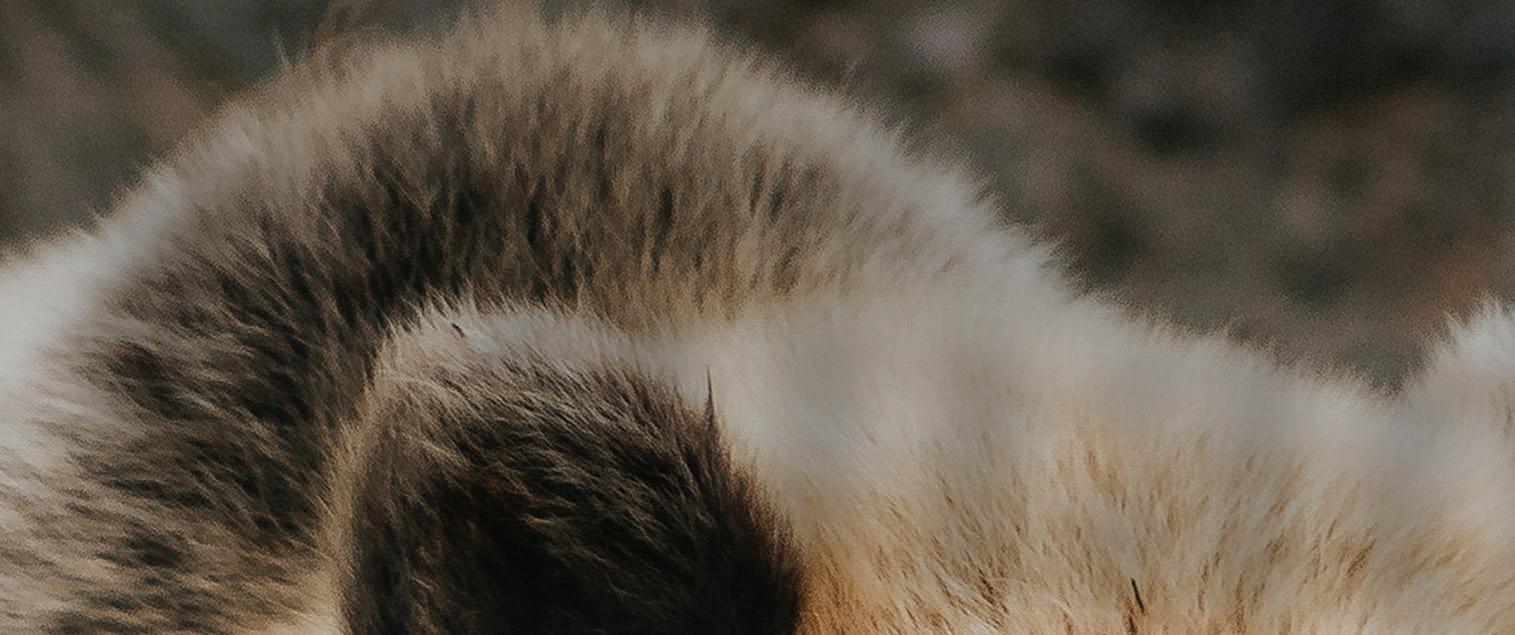




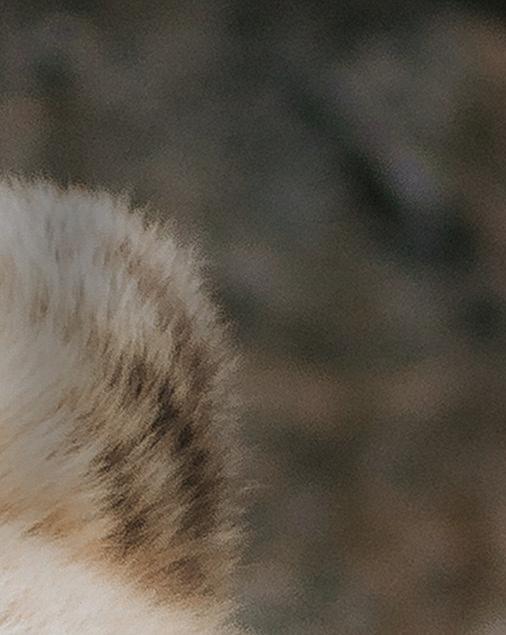









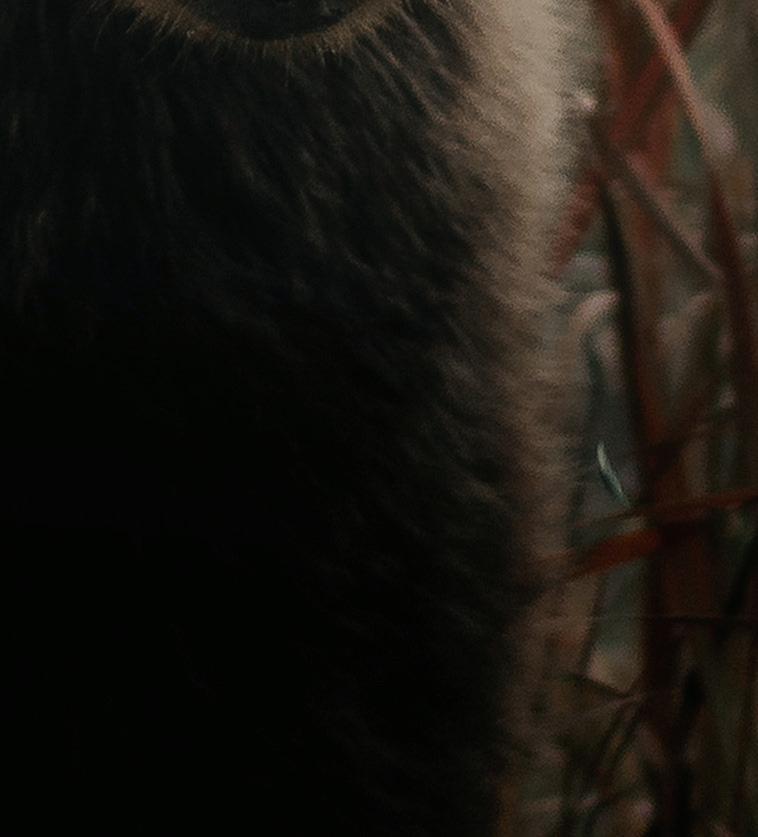

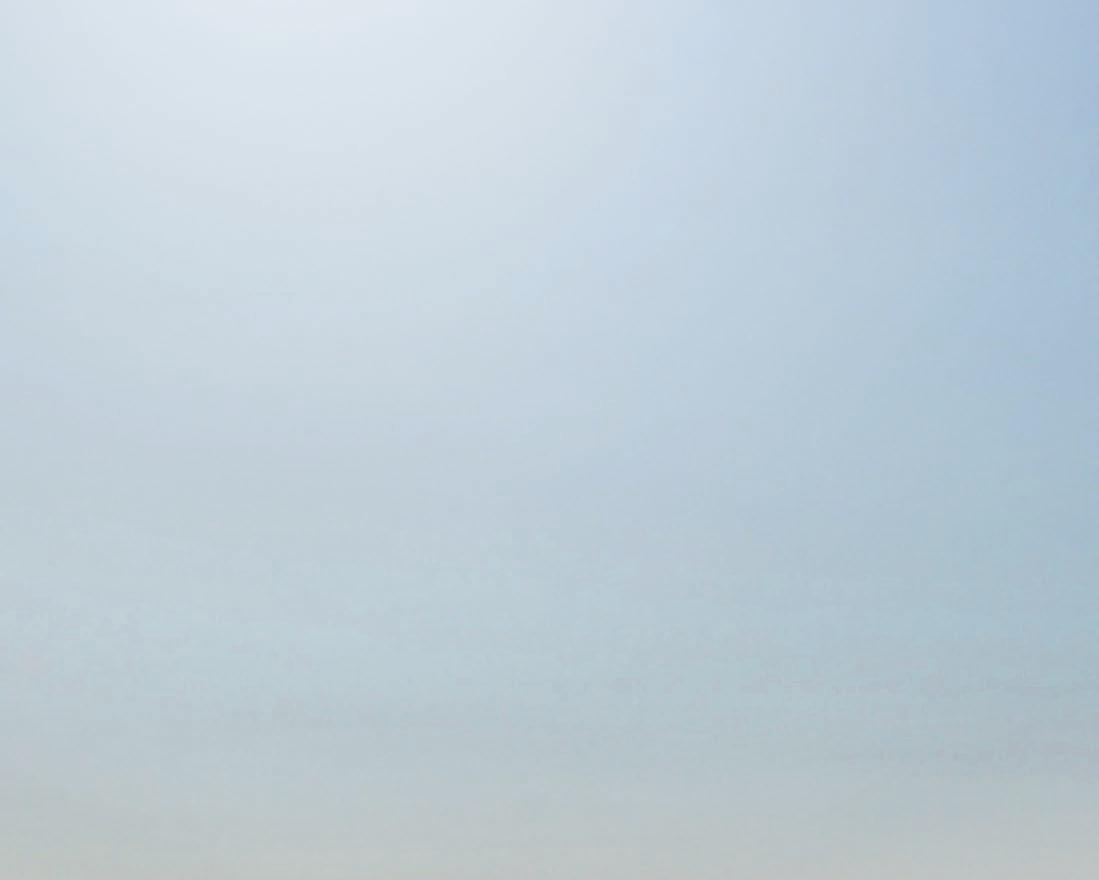





















Offering more seats to Canada than any other airline, nobody connects the UK to Canada like Air Canada.


Heat things up with our summer schedule that will include:
• Up to 4 daily non-stop flights from London Heathrow to Toronto
• Up to 2 daily non-stop flights to Montréal


• Daily non-stop flights to Vancouver, Calgary and Halifax
• Up to 4 x weekly non-stop flights to Ottawa
• 3 x weekly non-stop flights from Manchester to Toronto (seasonal)
• Daily non-stop flights from Edinburgh to Toronto plus newly introduced Edinburgh to Montreal (seasonal)


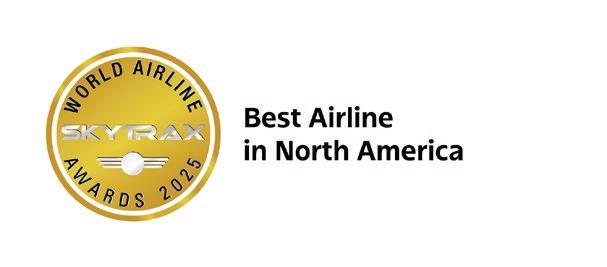








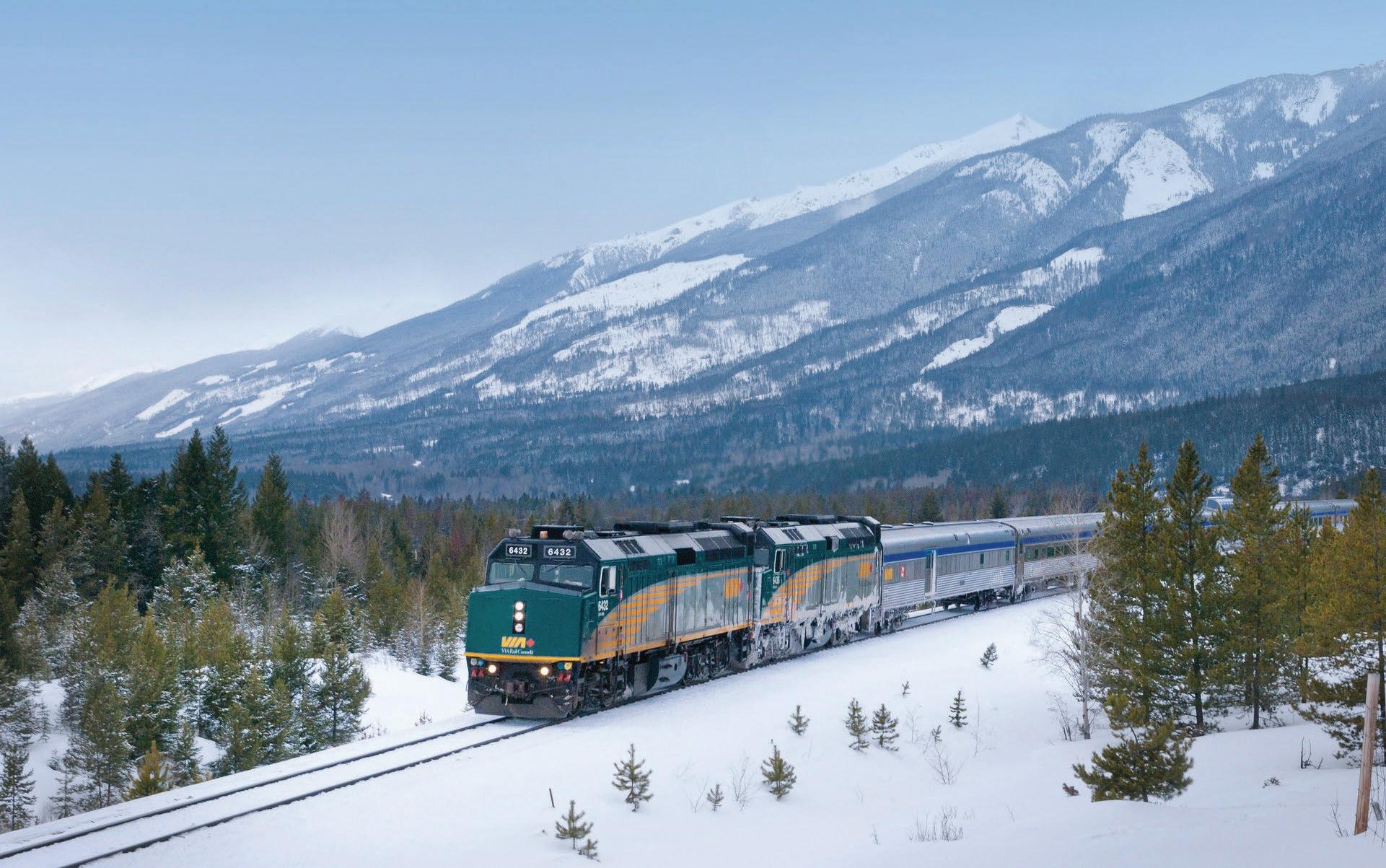



I HOPE you enjoy this latest issue of Selling Canada
In autumn 2025 I enjoyed a fabulous FAM trip to Eastern Canada with some of our younger CSP agents.
The autumn weather and colours were glorious. Highlights in Montréal included Old Montréal, Mont Royal and some fine cuisine.
A Via Rail train took us to Québec City, where we ziplined over Montmorency Falls and had a full Indigenous culture immersion at Wendake.
In Ottawa we met up with agents who had been touring Ontario. They raved about Niagara Falls, and their helicopter ride. In Toronto they had dinner at the CN Tower and explored Kensington market.
The train took them to Ottawa, via Kingston and the 1000 Islands.
There is much to look forward to in 2026, when Vancouver and Toronto will host FIFA World Cup 26 games. Meanwhile sales are strong with some agents even securing bookings for 2027.
I hope we will see Selling Canada readers at one of our webinars or in person at the Canada Travel Gossip roadshows (Cardiff, March 3; Solihull March 4; Stockport March 5; London April 28, and Southampton April 29). Happy selling!
Adam Hanmer, Manager, Travel Trade, Destination Canada

DESTINATION Canada’s latest brand refresh, Canada, naturally. has been engaging UK audiences since it went live in late summer 2025.
Designed to influence summer and autumn 2026 bookings and aimed at what Destination Canada has identified as ‘Refined Globetrotters’ and ‘Outdoor Explorers’, Canada, naturally. is a cornerstone initiative of its 2030 strategy which aims to generate $160 billion in annual tourism revenue by 2030.
The brand, which features across online video, social, publisher, and out-of-home placements, showcases those
aspects that make Canada truly unique and is grounded in the insight that more travellers are now seeking authenticity in a world increasingly filled with artificial experiences.
The Canada, naturally. creatives feature the stunning beauty of Canada’s everyday landscapes and the genuine warmth of its people through observational snapshots of everyday Canadian moments – from roadside fill-ups in the Rockies to backyard BBQs featuring the northern lights.
They highlight that in Canada what is viewed as ordinary by locals is rarely anything less than extraordinary for visitors.

KEY CONTACTS: Adam Hanmer 0207 389 9985
EMAIL: Hanmer.Adam@ destinationcanada.com
TRAINING: canadaspecialist.co.uk; keepexploring.ca
AGENTS are reminded that all British visitors to Canada who arrive by air must be in possession of an Electronic Travel Authority (eTA) which should be obtained before the purchase of air tickets.
An eTa costs C$7 (£4.60) and you should allow at least three days for it to be approved. It is valid for five years, or until the passport expires, and allows multi-entry. Travellers can only apply for one person at a time. For example, for a family of three they would need to complete and submit the form three times.
Apply online at Canada.ca/ eTa. Any website charging more than C$7 is not an official government site.
THE UK was Canada’s second largest source of arrivals in 2024. UK traveller spending surpassed 2019 levels in 2023 and is forecast to grow by 6.2% in 2025. While visitation will reach 94% of 2019 levels in 2025, full recovery is expected in 2026, when Canada is anticipating hosting 875,400 visitors from the UK – who will spend $1.9 billion.
* OVERSIZED floating wine barrels offer one-ofa-kind accommodation in Murray Harbour, Prince Edward Island.
Set on docks in the marina, the Nellie’s Landing ‘Merlot’ wine barrels have a door and two windows at the front, a large window overlooking the water and air-conditioning.
It’s a short walk to a nearby bathhouse with individual toilets, sinks, and showers. Dockside, there’s an oyster bar that serves up lobster rolls and cocktails. Rates start at CAD$225 a night. nellieslanding.com

FAIRMONT Chateau Lake
Louise’s new indoor-outdoor lakeshore thermal wellness destination is described as a “contemporary interpretation of a traditional bathhouse” .
BASIN Glacial Waters, the first facility of its kind within the protected alpine area of Banff National Park, takes inspiration
from the natural springs, thermal waters and wellness practices of Nordic sauna. Facilities include Finnish and Bio saunas, an Aufguss sauna, steam rooms, a hot stone massage room, temperature pools and a Hammam for a fullbody exfoliation. fairmont.com
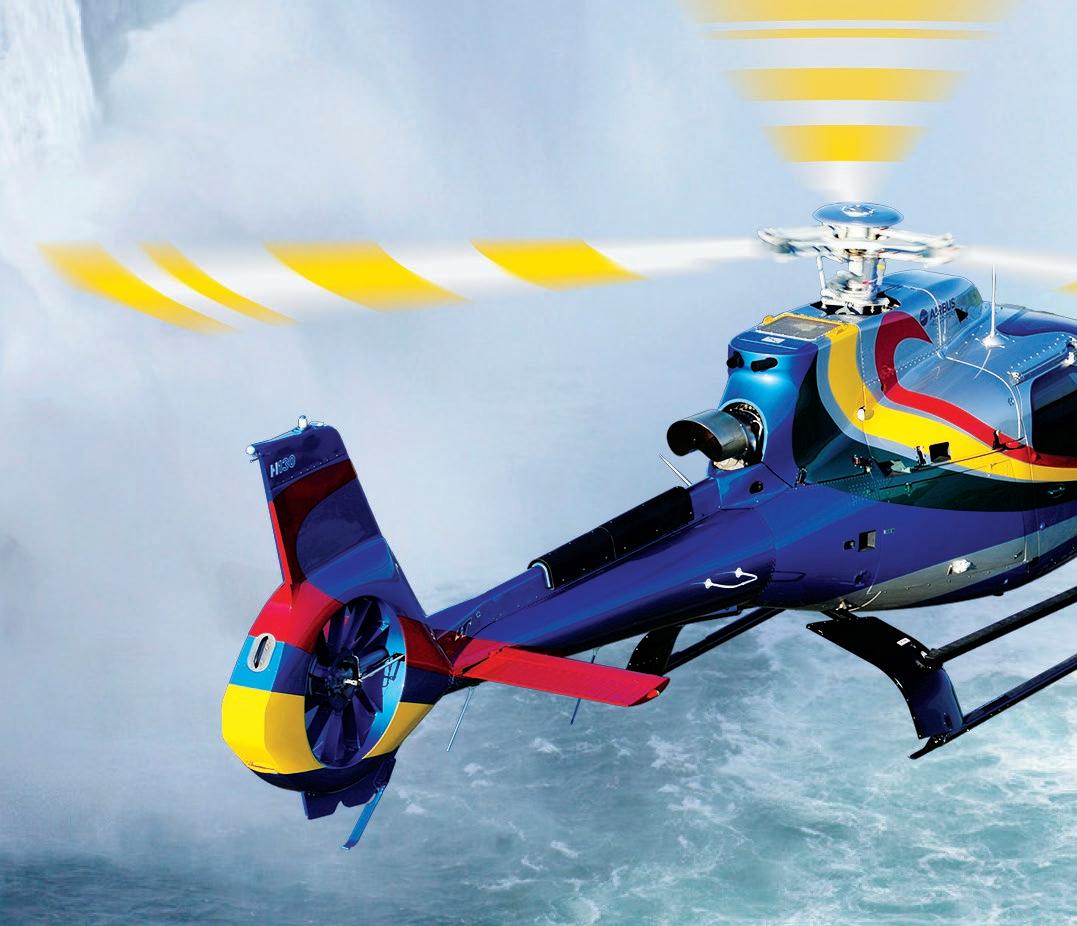




AIR North will resume its seasonal service between Vancouver and Yellowknife on November 24, 2025.
The route will operate twice weekly through March 27, 2026.
Fares start from C$139 one way, including meals, checked and carry-on baggage and Air North’s signature warm chocolate chip cookie.
49% owned by the Vuntut Gwitchin First Nation, Air North operates a fleet of Boeing 737-800, 737-500, 737-400 and ATR 42 turboprops. It flies to destinations across the Yukon and to the Northwest Territories, British Columbia, Alberta, and seasonally to Ontario. flyairnorth.com flyairnorth.com



* A NEW 30-storey dualbranded Marriott hotel is under construction in Vancouver. Slated to open in summer 2028, it will feature Moxy Hotels and Element by Westin, with 390 guest rooms and a sky lobby lounge.
marriott.com
Saskatoon refresh
* DELTA Hotels
Bessborough in Saskatoon is undergoing a complete renovation and will emerge as part of Marriott’s Autograph Collection brand. All 225 guest rooms and dining options will be refreshed. marriott.com

VISITORS to Niagara Falls
can now experience the destination from an entirely new perspective. Located inside Niagara Parks’ flagship site, Table Rock Centre, at the brink of the Horseshoe Falls, Niagara Takes Flight is an immersive,
drone technology and a huge 180-degree domed screen to take passengers on a simulated “journey” that celebrates Niagara’s geography, history and people. The ride features sensory effects like wind, mist and even smells.
WHITEHORSE has a striking new hotel after the opening of Hyatt Place Whitehorse, the brand’s first property in Canada’s North and only the second purposebuilt hotel to open in Whitehorse in more than 50 years.
Located in the heart of downtown, and minutes from Erik Nielsen Whitehorse International Airport, the hotel puts guests within steps of Main Street’s cafés and shops, the Yukon River waterfront and landmarks such as the MacBride Museum of Yukon History.
The 115-room hotel, which has views of the mountains, was developed by majority First Nations-owned Northern Vision Development Partnership.


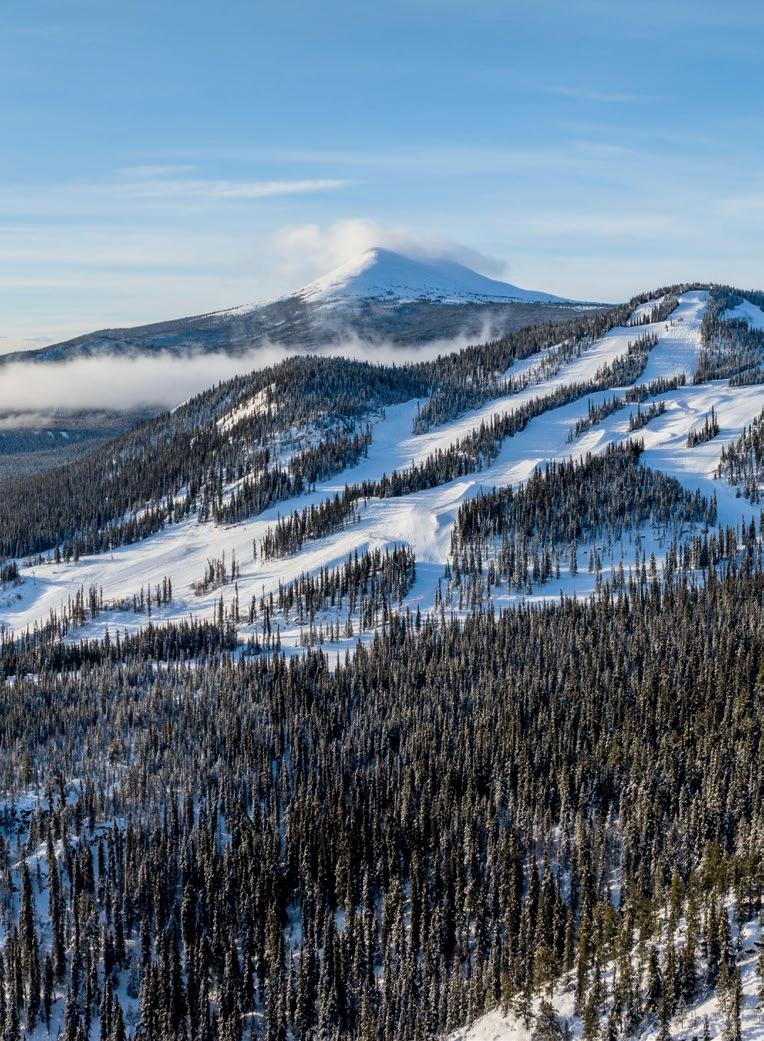

THE Arctic Winter Games 2026, a multisport and cultural event, will take place in Whitehorse, Yukon, from March 8-15, 2026.
The tournament will see athletes from across the circumpolar north – Northwest Territories, Yukon, Nunavut, Alaska, Greenland, Northern Quebec (Nunavik), Northern Alberta, and the Sami people from Norway, Sweden, and Finland – compete in 20 different sports, including ‘traditional games’.
Held every two years, the event features Inuit favourites like one-foot high kick and knuckle hop, and Dene games that include finger Pull (a test of strength), hand games (a guessing and deceiving game involving sticks), and Snow Snake (a throwing competition), along with the more familiar hockey, skating and curling. Many of the featured sports are culturally significant, reflecting and honing the skills necessary for survival in the Arctic region. awg2026.org

SOFITEL’S flagship Canadian property has completed a multiphase refurbishment, spanning across its rooms and suites, dining and event spaces.
Marc Pichot, General Manager of the 256-room Sofitel Montreal Golden Mile, said: “We’re thrilled to welcome guests into a fully redefined Sofitel experience that embodies the vibrancy of Montréal and the soul of French art de vivre.
“The hotel’s revitalistion reflects a French home: intimate expressive and artfully curated.”
The hotel is located on Sherbrooke Street, in the heart of Montréal, near boutiques, restaurants and attractions like Mount Royal and the Montréal Museum of Fine Arts. sofitel.accor.com














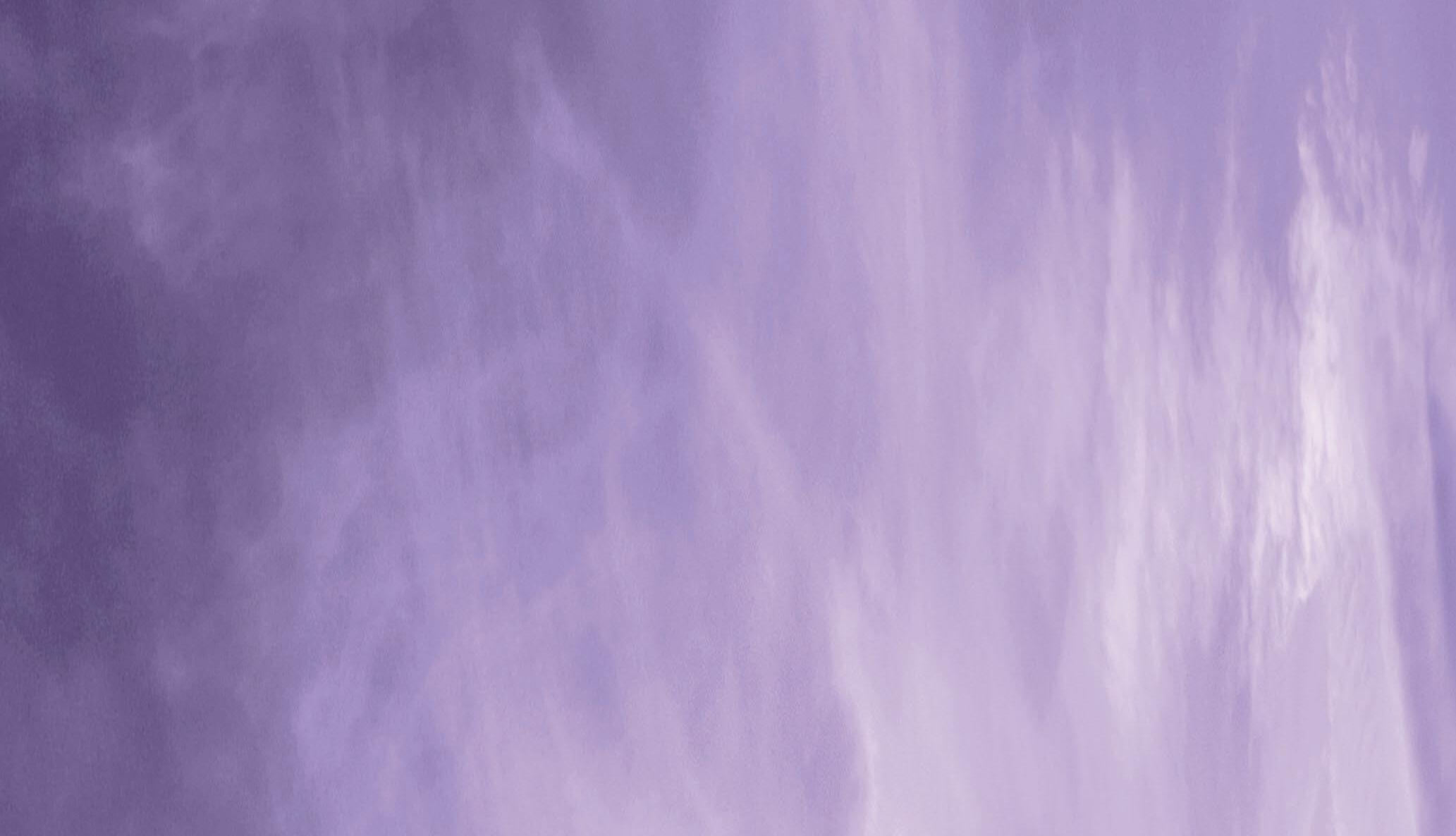



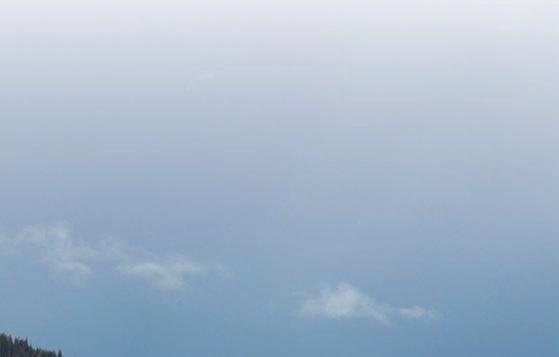

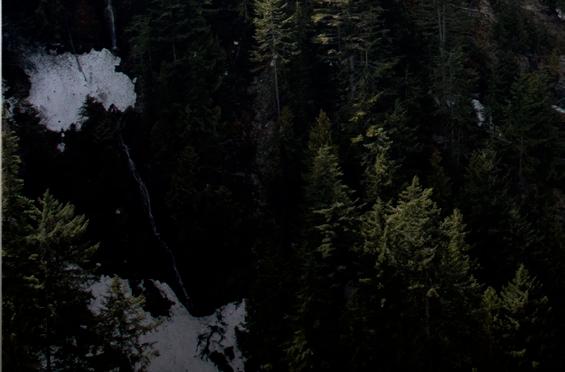

Canada has a stellar line-up-up of star attractions that should be on every visitor’s ‘hit list’, says Lauren Jarvis
Water has been tumbling over the Niagara Escarpment for more than 12,000 years, but today visitors have so much more to see and do than just the roaring cataract. Experiences include the new Niagara Takes Flight, an immersive flying theatre journey along the Niagara River corridor, and the allnew nighttime experience at the falls’ power station that gives a different perspective of Niagara’s cathedral of power. You can also ride 3,500 feet across the Niagara Gorge and witness the vibrant swirls from the Niagara Whirlpool on the Whirlpool Aero Car.
Rocky Mountaineer has been journeying through Western Canada and the Canadian Rockies for 35 years. Summer 2026 will see the luxury train company bringing a new journey on board, Passage to the Peaks, which for a limited time will connect

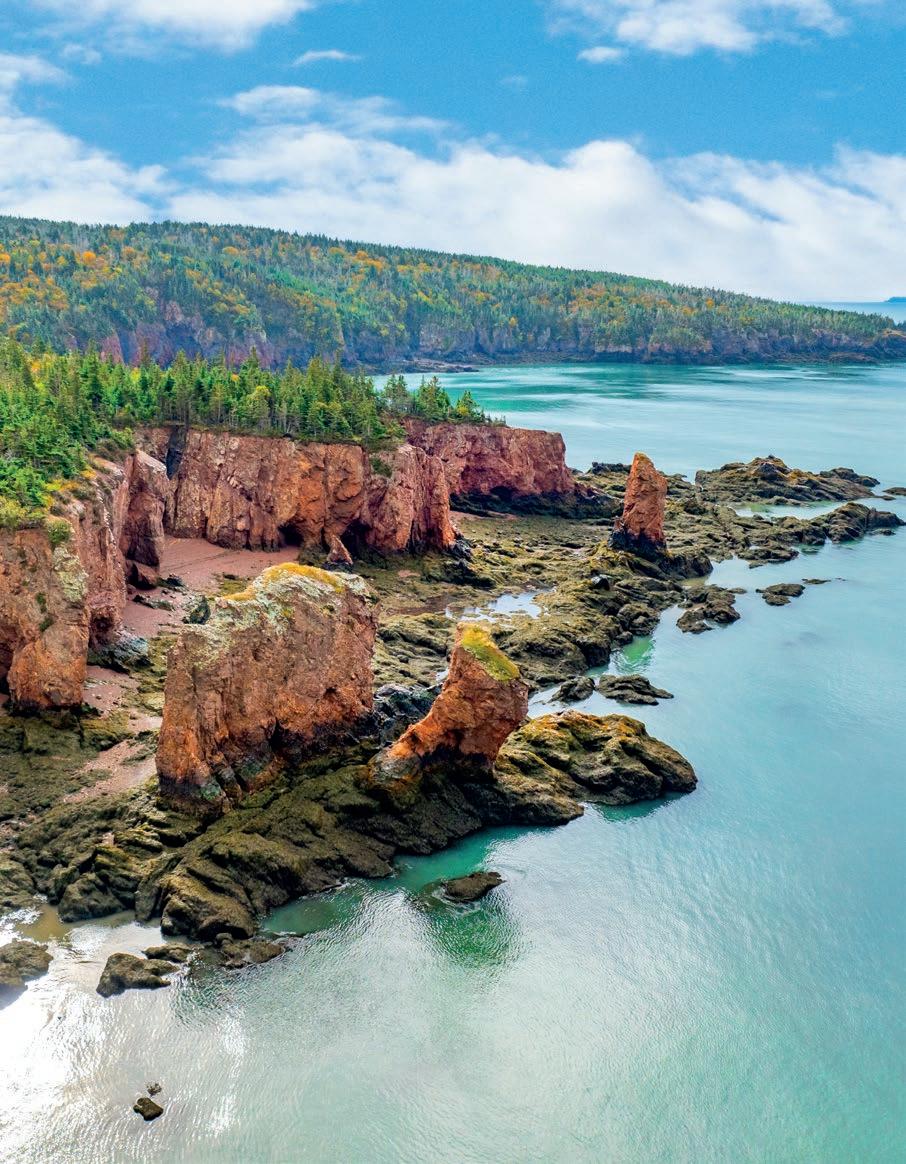

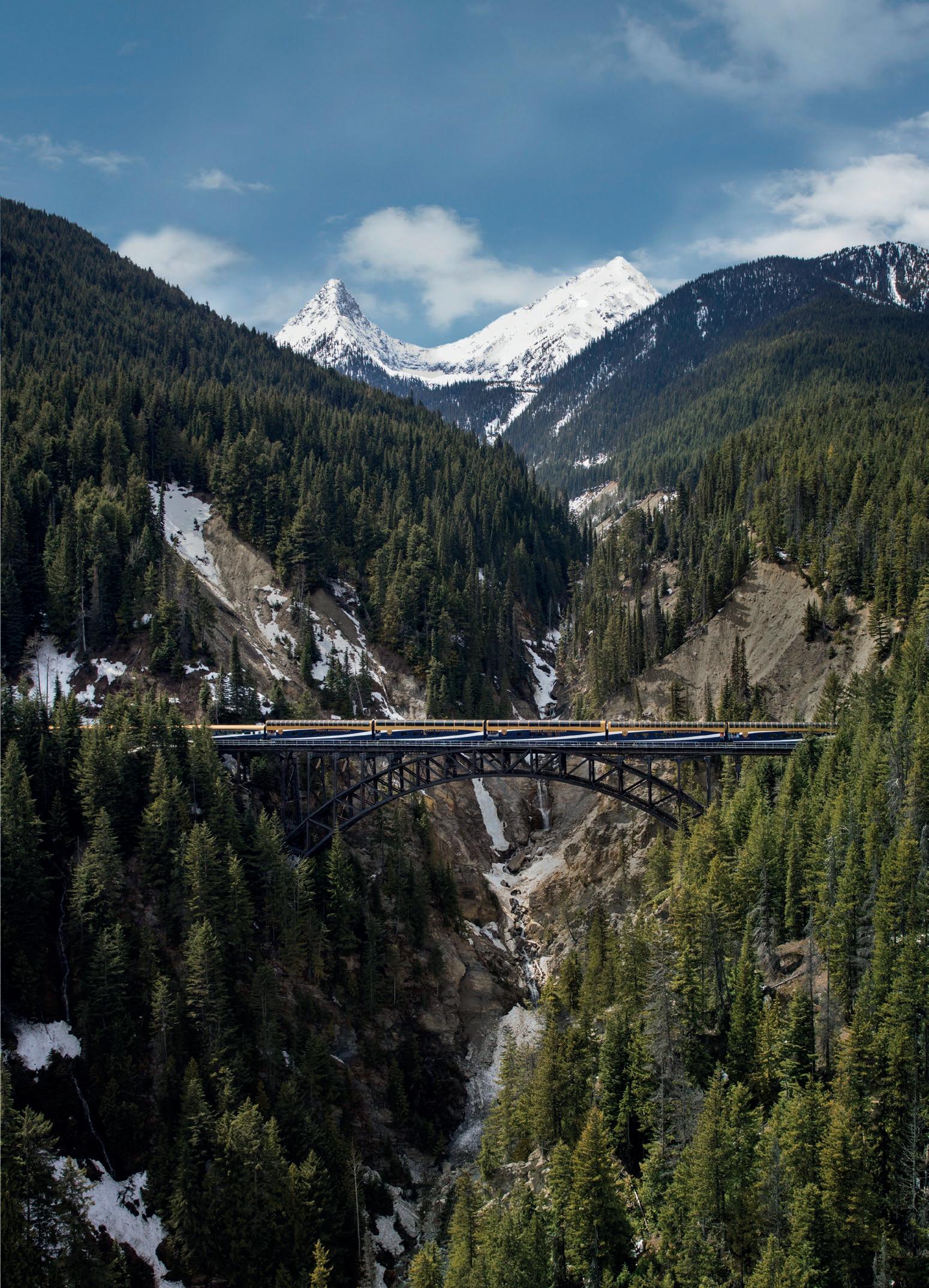
the Rocky Mountain towns of Jasper and Banff with an overnight stay in Kamloops. Highlights include Yellowhead Pass and the Spiral Tunnels of Kicking Horse Pass. rockymountaineer.com
Founded in the 17th century, Québec City was the first permanent French settlement in North America. The Historic District of Old Québec was designated a UNESCO World Heritage Site in 1985, but this colonial neighbourhood isn’t frozen in time. Heritage buildings, ramparts and fortifications are under ongoing restoration, while celebrations to mark 40 years of the UNESCO listing are in full swing. quebec-cite.com
Located on Indigenous Mi’gmaq territory, between Nova Scotia and New Brunswick, the Bay of Fundy holds the Guinness World
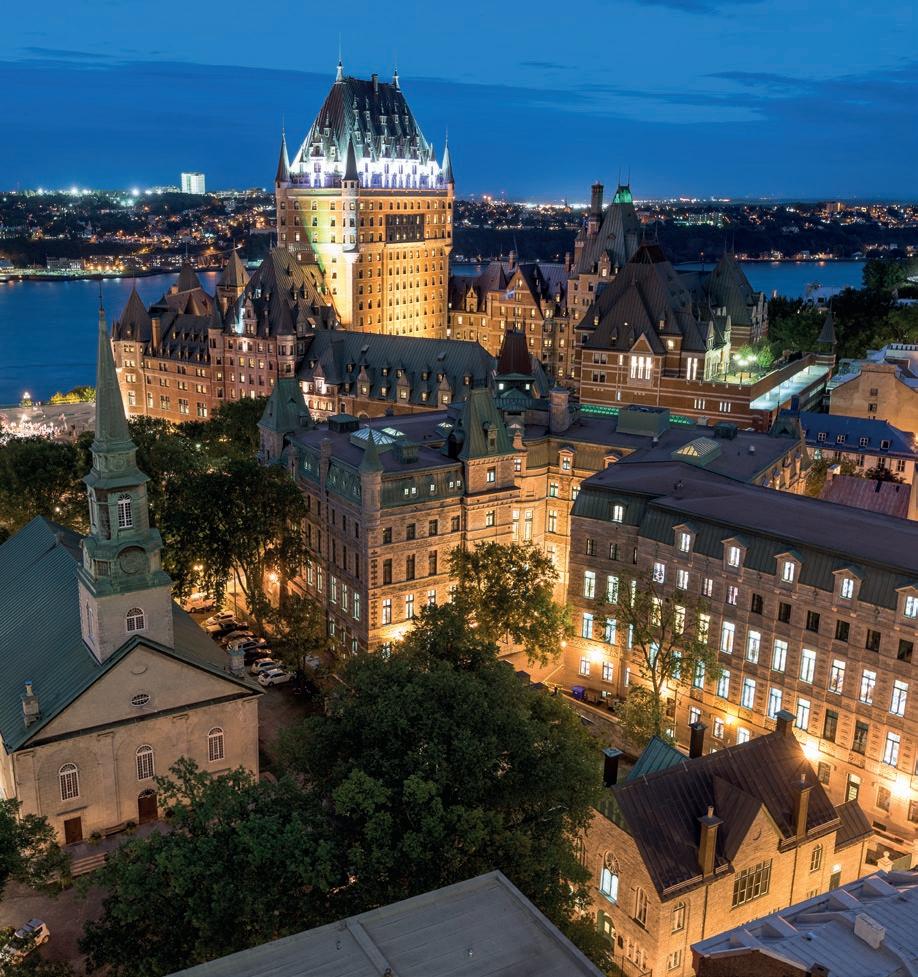
Record for the world’s greatest recorded tidal range at 47 feet, six inches. More than 100 billion tons of water fills and drains the funnel-shaped bay twice daily, exposing inter-tidal zones bursting with life. The surrounding Acadian forests offer hiking and biking trails, while Saint John is the place to watch the unusual Reversing Falls Rapids. fundytourism.com
Known for their walking safaris which offer up-close encounters with the polar bears of northern Manitoba, Churchill Wild is now offering expert-led photography tours to capture the region’s wild wolves. Meanwhile in British Columbia, the legacy of Gary Zorn is being kept alive by his wife Peggy after the legendary “Bear Whisperer” passed away in 2022. The Northern Lights Lodge has reopened and hosts guests on a threenight Eco Tours Bear Whisperer experience,

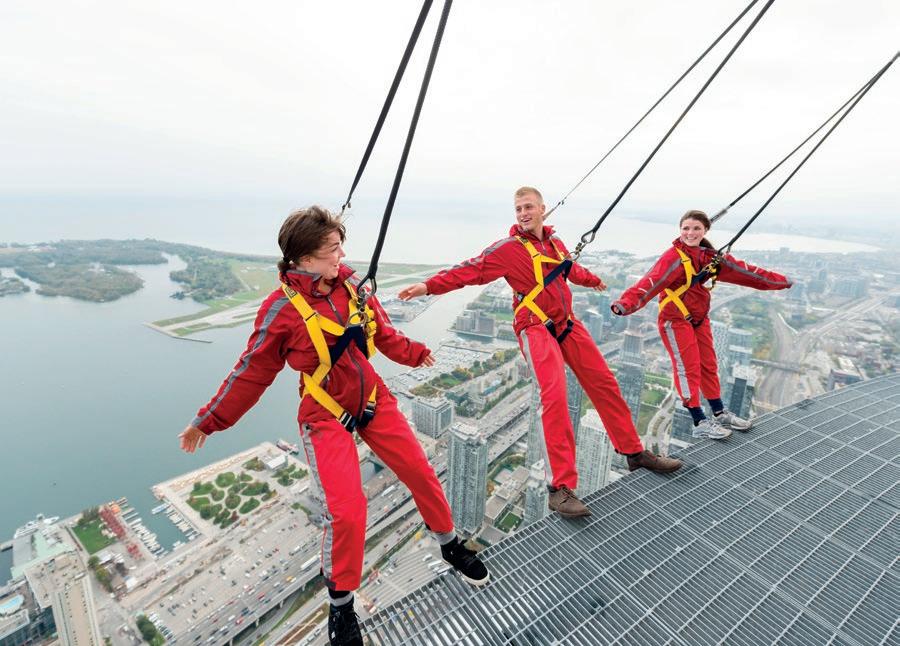
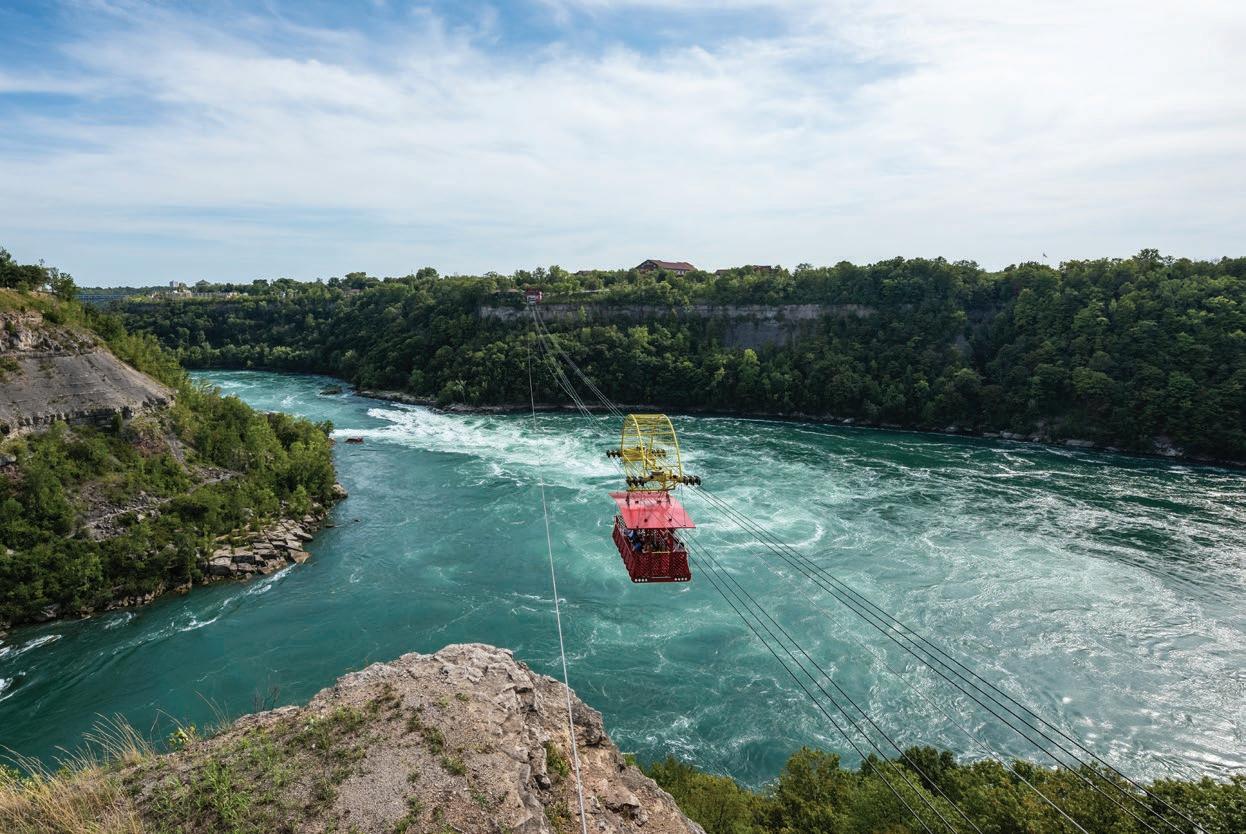
tracking grizzly and black bears in the Cariboo Mountains. ecotours-bc.com
BANFF NATIONAL PARK, ALBERTA
Banff is a designated UNESCO World Heritage Site in the Canadian Rockies, with breathtaking alpine views, wildflower meadows and a gondola ride drawing visitors to the park in summer, while some of the best snow on earth welcomes skiers at world-class resorts in winter. But travelling in the shoulder seasons of spring (April to June) and autumn (September to November) offers the chance to experience the park’s natural splendour without the crowds. banffnationalpark.com
CN TOWER, TORONTO, ONTARIO
Soaring 1,815 feet above the city, the tower became the world’s tallest freestanding structure when it opened in 1976, Marking its 50th anniversary in 2026, the CN Tower is a must-do in Toronto, but not all will be brave enough to take on the dizzying




challenge of the EdgeWalk: the world’s highest full-circle, hands-free (but harnessed) “walk” around the five-feet-wide ledge encircling the top of the tower’s main pod. cntower.ca/brave-the-edgewalk
AURORA BOREALIS, YUKON
The sky’s natural light show illuminates Canada’s northern realms each winter when the Aurora Borealis, or northern lights, paints ribbons across the night skies. The best time to see them in Yukon is from mid-August to mid-April, with the optimal viewing hours being between 22.00-03.00. This Yukon magic is expected to be at its peak during the Solar Cycle 25 activity in 2026. northernlightsyukon.com
PEGGY’S COVE, NOVA SCOTIA,
There are few images more iconic of Canada than that of the white-and-red lighthouse that proudly stands guard over the Atlantic Ocean in this small rural community on the eastern shore of St.
Margarets Bay. There’s plenty to experience in the heart of this active fishing village, from restaurants and local art, while the region is popular for its hiking trails, kayaking adventures, whale watching, birding activities and golf courses. Accommodation includes inns, cottages and bed and breakfasts. peggyscoveregion.com
BISON, WANUSKEWIN HERITAGE PARK, SASKATCHEWAN
A true icon of North America, millions of bison once thundered across the plains, but by the late 1800s they had been almost hunted to extinction by European settlers. In 2019, Parks Canada partnered with Wanuskewin Heritage Park on a mission to reintroduce the bison to their prairie home and restore the park’s native grasslands. Here, visitors can learn about Indigenous people’s cultural relationship with the land and watch the bison roaming free again. wanuskewin.com •
Gloria Loree, Senior VP, Marketing Strategy and Chief Marketing Officer, Destination Canada
How long in the making was your current campaign Canada,naturally which highlights authentic connections and experiences?
We weren’t starting from scratch with this. We launched our “Canada Mark” in 2019 with the tagline For Glowing Hearts, which had a heart-shaped logo that is rooted in Canada’s red and white colours.
From the start, our brand strategy has been to create an emotional connection with potential visitors by highlighting the transformative and heartfelt experiences that Canada offers, moving beyond traditional advertising to focus on authentic connections and values. We did a lot of foundation work to come up with a brand that would resonate across all of our key markets
Explain the push factors that underpin it Canada, naturally. focuses on the genuine, everyday things that make Canada special, such as its open spaces, wilderness and welcoming residents.
Travellers today are looking for real and nonmanufactured experiences that immerse them in the lives of people doing ordinary things.
In Canada jaw-dropping views are not staged or temporary, they are just out there all the time and have been for over 10,000 years.



Explain how Canada,naturally. targets what you call “highly engaged” tourists
Through analytics and other research we have been looking closely at “travel behaviours”. For example, would they (visitors) be open to coming to Canada in the fall and winter? Are they getting out into more remote or rural communities, as well as visiting the cities? And do they have travel values that are matched by their experiences (in Canada)? That is, do they like the fact that their travel dollars are staying in a community and helping that community achieve its objectives for sharing culture and achieving economic growth?
One of your key challenges is to see a greater spread of visitors across all four seasons – is your proactive marketing of autumn and winter producing results?
We’ve tried to identify the markets, such as the UK, that have the most opportunity for off-season travel and we are starting to see positive signs.
The other side of the coin is destination and product development. More Canadian resorts are no longer building just a ski hill or a golf course but are constructing in a way that prioritises all four seasons. That’s not how Whistler started, for example, which was just an out-and-out ski hill.
We’ve also got an initiative running with Parks Canada. Obviously, if the parks stay closed for too many months this limits (visitor) opportunities, so we’re working with them to give them the confidence to stay open for longer. We’re using our data to show them there is demand at times outside of summer.
What are some of your own favourite moments of your travels in Canada?
When I am asked this I often respond by saying how much I enjoyed the Calgary Stampede, but my fondest memories are of people offering to help me out in various locations, which is not unusual in Canada.
One night in Newfoundland I was out walking and stopped when I heard live music...and was invited into a kitchen party. This kind of thing really does happen a lot and always makes me proud to be Canadian. •
Take to the waters across Atlantic Canada’s four provinces to relax, reset and revel in a sense of wellness
More travellers than ever are looking to destinations where they can step away from the digital world and reap the benefits of nature. In Atlantic Canada, visitors can enjoy authentic Canadian water experiences – track icebergs, go deep-sea fishing, zip-line over waterfalls, and even take on tidal bore rafting.
From prime whale watching in the Bay of Fundy – home to the world’s highest tides – to the secluded shores of Campobello Island, there are plenty of quaint coastal towns with exciting water-based experiences.
The Reversing Falls Jetboat Experience is the only boat tour in the area that will take you into Saint John’s Reversing Falls Rapids. Or brave the Zip Line over Zig Zag falls, a daring zipline located on Grand Falls on the Saint John River.
In spring and summer, the province’s coastline is one of the only places in the world where you can simultaneously see icebergs, whales and seabirds.
Try Sea Cave Kayaking in Conception Bay with Ocean Quest Adventures, kayaking under the rugged rocks, entering sea caves, spotting bald eagles and drifting along the coast.
Rafting Newfoundland’s Exploits Canyon Adventure begins with a 15-foot cliff jump (an activity that is entirely optional) before exploring the red-rock of the Exploits River. Or try the relaxing float on flatwater experience, which is followed by a charcuterie board lunch.
Canada’s Ocean Playground is home to over 8,000 miles of coastline and visitors are never more than 42 miles from water. Offering yearround outdoor adventures like sea-kayaking, surfing and fishing, there is always plenty to do.
For sea kayaking, East Coast Outfitters offers a full day adventure exploring bays, inlets and
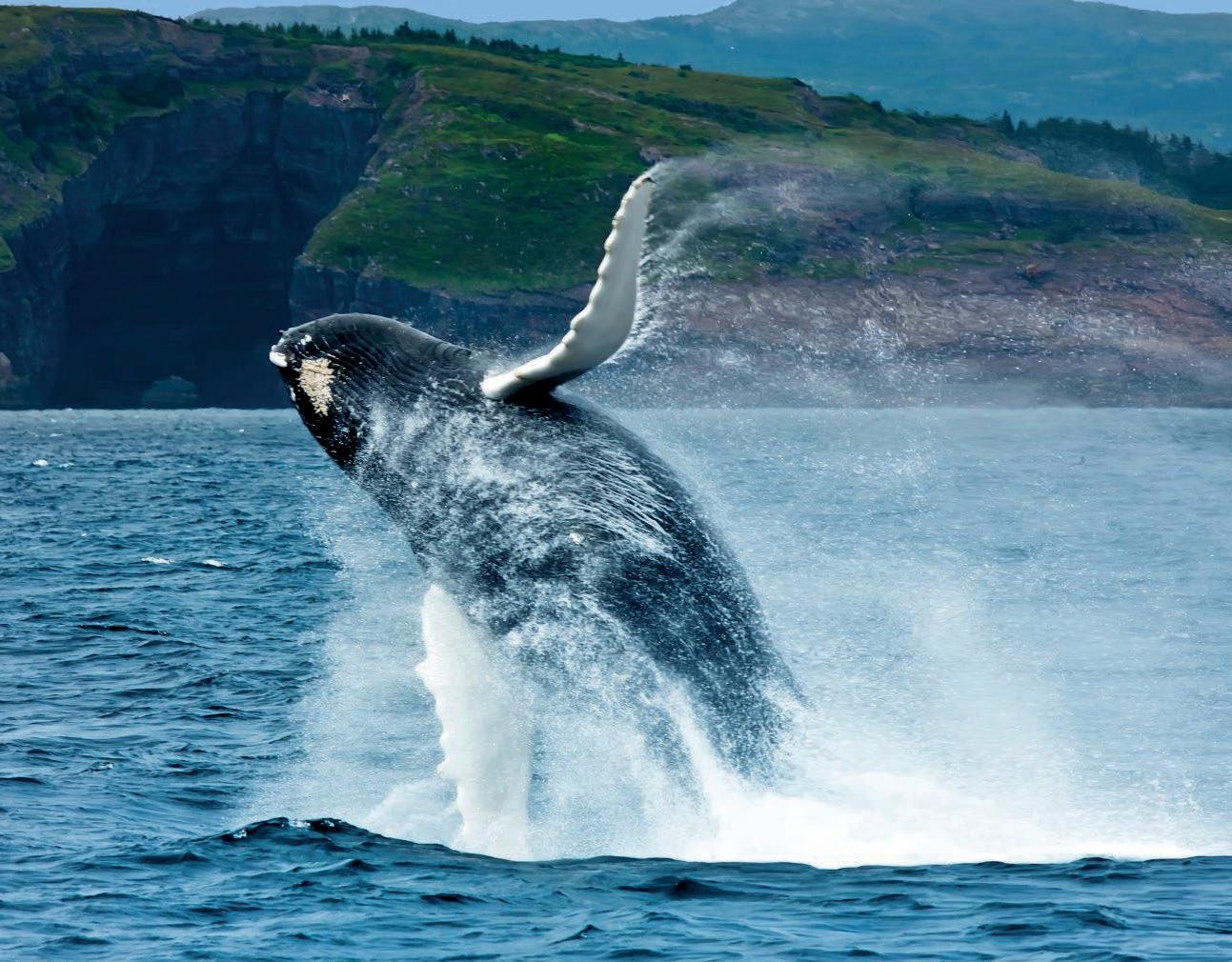

eating lunch on one of the pristine islands.
Tidal Bore Rafting on the Shubenacadie River, described as a water roller coaster, is unique to Nova Scotia. The tidal bore phenomenon is fuelled by the ocean tides and the moon; naturally forming rapids, whirlpools and standing waves.


Encircled by the Gulf of St. Lawrence, 684 miles of coastline feature red sandstone cliffs, sandy beaches, and traditional fishing harbors.
Canada’s Food Island blends culinary richness with coastal charm
Tranquility Cove Adventures in eastern PEI offers a two-hour Canadian adventure with seal viewing before sailing down to the Historic Panmure Island Lighthouse.

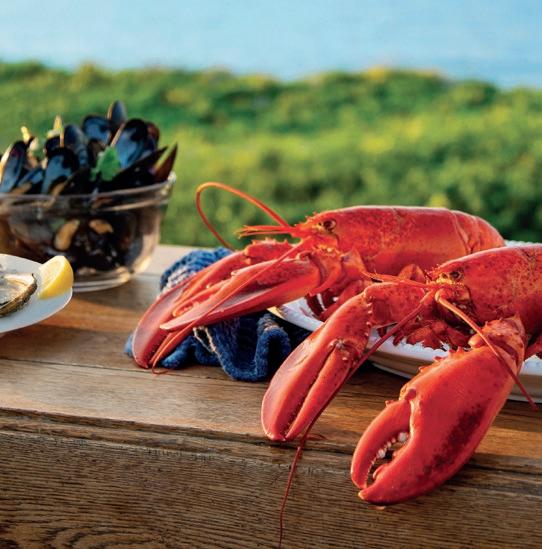
The Lobster Fish and Feast tour gives visitors the opportunity to experience the life of a lobster fisher, learning how to haul a lobster trap by the experienced captain. This is followed by a lobster roll picnic on the boat while enjoying the views of the coastline. •
To experience some of the best that Canada has to offer, pack your bags and head to its closest coast, says Peter Ellegard
Eastern Canada serves up a sensory feast, from lip-smacking seafood to captivating culture to centuries of maritime heritage to stunning scenery.
Five of the region’s six provinces border the Atlantic, encompassing more than 26,000 miles of coastline in total.
Québec by the Sea, as the province’s maritime coast is sometimes called, takes in the areas lapped by the Gulf of St. Lawrence and is Atlantic Canada with a certain je ne sais quoi.
Explore the Gaspe Peninsula’s dramatic coast, quaint fishing villages, brooding mountains and sandy beaches on the 575-mile Gaspesie Tour loop, one of Canada’s most iconic road trips.
Boat trips head out to Perce Rock, a huge natural arch, and Bonaventure Island, North America’s largest migratory bird refuge that is home to a northern gannet colony.
Halifax is Nova Scotia’s heartbeat, an urban hub with big city vibes yet a friendly, smalltown feel. Take in festivals, enjoy its vibrant restaurant and nightlife scene and catch the noon-day gun firing at the star-shaped Halifax Citadel fortress.
Tuck into fresh lobster 10 months of the year in coastal communities, take Canada’s most popular selfie at Peggy’s Cove lighthouse, visit the historic waterfront of Lunenberg, a UNESCO World Heritage Site, and linger along Cape Breton Island’s beautiful Cabot Trail.
Walk on the ocean floor below the towering Hopewell Rocks in the Bay of Fundy, which has the highest tides in the world, or kayak around them when the tide is high.
Go whale watching in the bay on a motorboat or tall ship to spot some of the dozen species found there along with seals and bald eagles.
Take a hike on trails including the 40-mile Fundy Footpath, seeing wildlife such as moose, bears and deer. Stroll through the capital





Get out and about to discover tiny PEI. See the island end to end biking or hiking the 168-mile Confederation Trail. Help oyster or lobster fishermen haul in their catches, followed by tasting the shellfish. Or play golf on some of its 28 facilities, paddle in a kayak or canoe and ride a horse on deserted beaches or through woods. Immerse yourself in an Anne of Green Gables experience where the children’s classic was set or visit one of its 61 lighthouses.
The largest Atlantic province is divided between mainland Labrador and the island of Newfoundland. Watch giant, 10,000-year-old icebergs as they drift along the coasts through ‘Iceberg Alley’ in spring and summer, also a good time to spot migrating humpback whales. Hike or take a boat trip to see the marshlands, boreal forest, soaring mountains and deep fjords of Gros Morne National Park.




And don’t miss the recreated Viking village at L’Anse aux Meadows where Norse settlers lived 1,000 years ago.
Agents are being urged to consider the vast range of experiences and overnight options available in Canada’s national parks and heritage places
Parks Canada protects and manages a huge network of cultural and natural heritage places, including 171 national historic sites, 48 national parks, five national marine conservation areas, and one national urban park – 13 of which are UNESCO World Heritage Sites.
Taken together, that’s around 343,377 sq kms of lands in Canada, located in every province and territory and ranging from mountains and plains to boreal forests and tundra to lakes and glaciers, and much more.
Heritage sites include Banff National Park, Canada’s first national park (1885), Fundy National Park in New Brunswick and Signal Hill National Historic Site in St. John’s, Newfoundland and Labrador, which in 2026 will celebrate the 125th anniversary of Canada receiving its first transatlantic signal.
“We are easily Canada’s largest provider of natural and cultural tourism products,” says Guy Thériault, Chief Travel Media Relations, Corporate Communications Directorate at Parks Canada Parks .
Accommodation in the parks are varied and creative: there are traditional rustic cabins, yurts (a round hut with beds, furniture and heating), canvas tipis and oTENTiks, a hybrid cabin-tent. Another option is Ôasis, a teardrop-shaped cabin with a suspended hammock and a bed.
“We have all kinds of incredible and unique places where you can sleep overnight,” enthuses Thériault. “For example, you can stay at the Fortress of Louisbourg National Historic Site in Cape Breton, Nova Scotia, in one of the reconstructed historic buildings.
“Imagine waking up next to the Atlantic and having the entire fortress to yourself until the staff start arriving around 08.00.”

In other news for agents, since September 2025 Parks Canada has been offering an Advanced Reservations Service on its website, with on-account payment options available in 2026. Discovery Pass, which provides unlimited access to all Parks Canada sites, can be purchased at net rates, with experiences and on-account payment options available in 2026.


Parks Canada also administers historic canals and waterways, in Ontario, Québec and Nova Scotia. On the Rideau Canal, a World Heritage Site that is the oldest continually operating canal in North America, you can travel all the way from Ottawa to Kingston with Le Boat, a Parks Canada partner that offers 10% to agents – and no sailing or seamanship skills are required.
Also returning for 2026 is the Canada Strong Pass, which offers free admission and discounted overnight stays during the periods December 12, 2025 to January 15, 2026, and summer 2026.
The pass also provides free travel for children on VIA Rail, discounts for young adult and free entry for children to participating national museums. parks.canada.ca











NORTHERN LIGHTS WITH NANUK OPERATIONS OR DISCOVER
CHURCHILL: Spend winter nights chasing the Aurora Borealis in true northern style. Cozy up in Nanuk’s aurora yurt, where warmth meets wonder, or join Discover Churchill’s Northern Lights call list to make sure you never miss a midnight sky show if you’re already in town. When the lights begin to dance, it’s pure celestial theatre. The best viewing months are January to March.
NORTHERN LIGHTS DINING AT DAN’S DINER: Dine beneath the stars at Dan’s Diner, a glass restaurant with panoramic windows and skylights set in the heart of the frozen wilderness. Feast on “Tundra fare” such as elk, caribou and Arctic berries, as the aurora ripples across the night sky – proof that Churchill serves its magic with a side of fine dining. The pop-up stays

In Churchill every season tells a story, from sleeping on the tundra in winter to spotting polar bears in summer
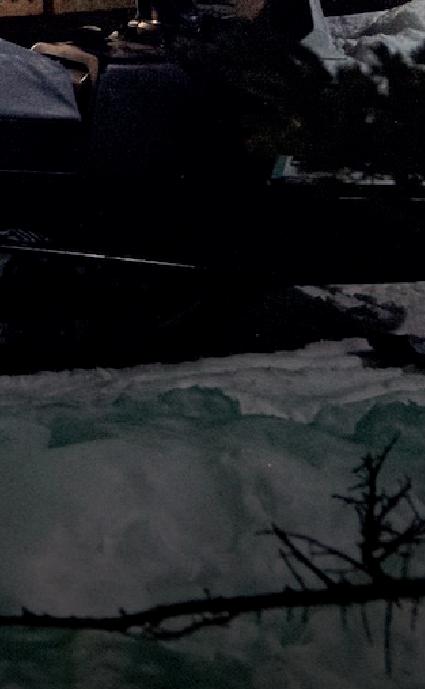
up from February to March, to coincide with the best Northern Lights viewing months.
CLOUD WOLVES OF THE KASKA
COAST: This surreal safari offers a rare chance to witness wolves in the wild while contributing to groundbreaking research. Over 10 nights, join National Geographic photographer Jad Davenport to observe these enigmatic predators. March marks the wolves’ breeding season, when courtship unfolds in crystalline winter light and the crisp air carries howls across the silent bay. This is the prime time for unforgettable sightings followed by lively fireside chats. Clients can book onto the safari in March.
BIRDING WITH THE CHURCHILL
NORTHERN STUDIES CENTRE: Each spring, tens of thousands of migratory birds fill Churchill’s skies, making it a paradise for

birders. Spread your wings on this five-day trip and join the experts to explore the diverse habitats, home to more than 175 species. While the elusive Ross’s Gull is the star attraction, you’ll also spot favourites like the Willow Ptarmigan, Arctic Tern, Snowy Owl, Tundra Swan and more.
The experience is available across June.
SPOT POLAR BEARS IN SUMMER WITH LAZY BEAR
EXPEDITIONS: Think polar bears are just for winter? Think again. On this incredible week-long adventure, which also includes kayaking and spotting beluga wales, you’ll hop aboard the Matonabee and cruise to Fireweed Island, where summer bears bask on the grassy coast. It’s a front-row seat to the gentler side of Churchill’s most famous residents, and no snow is required. Lazy Bear Expeditions runs tours from July to August.



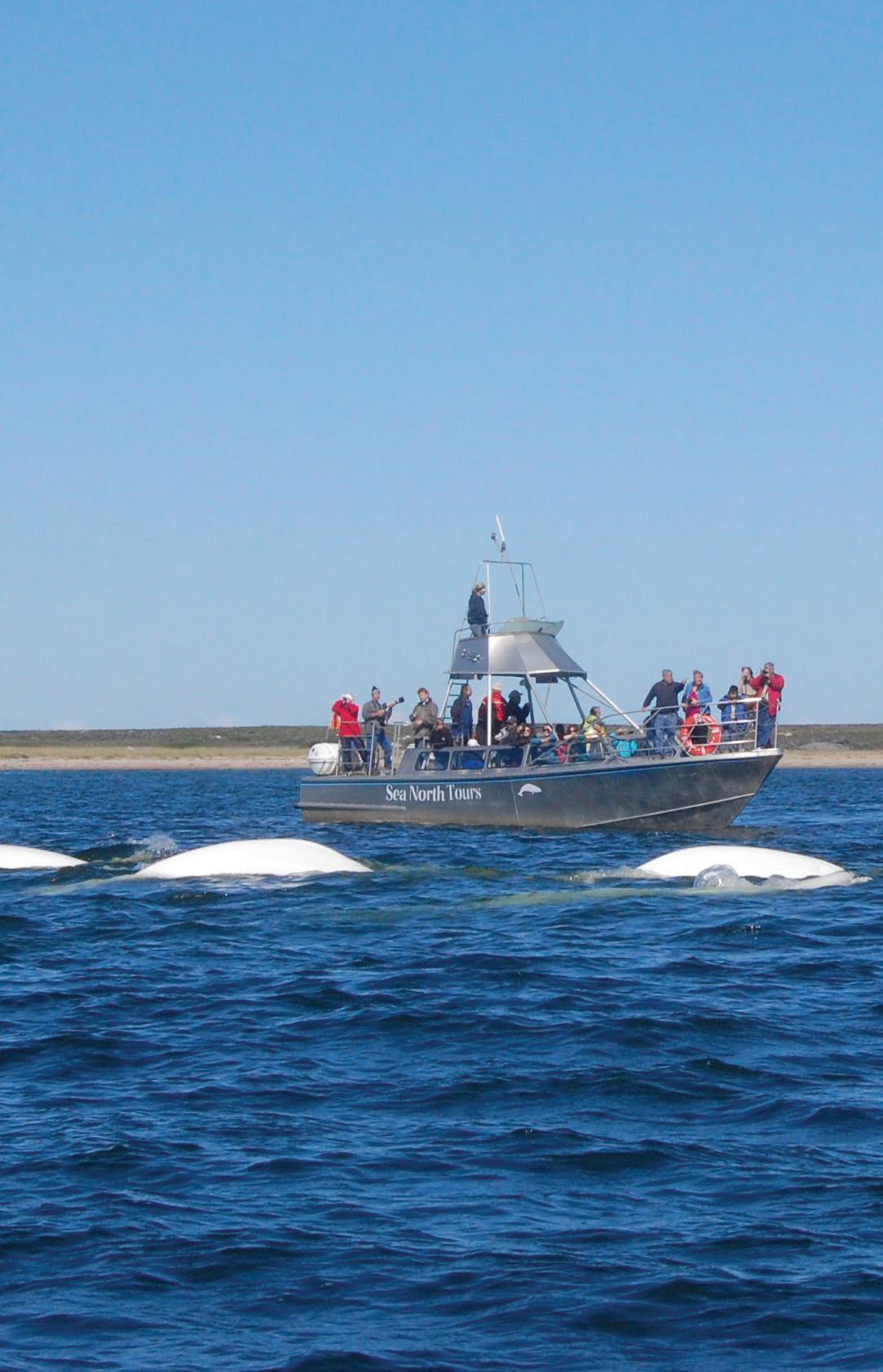
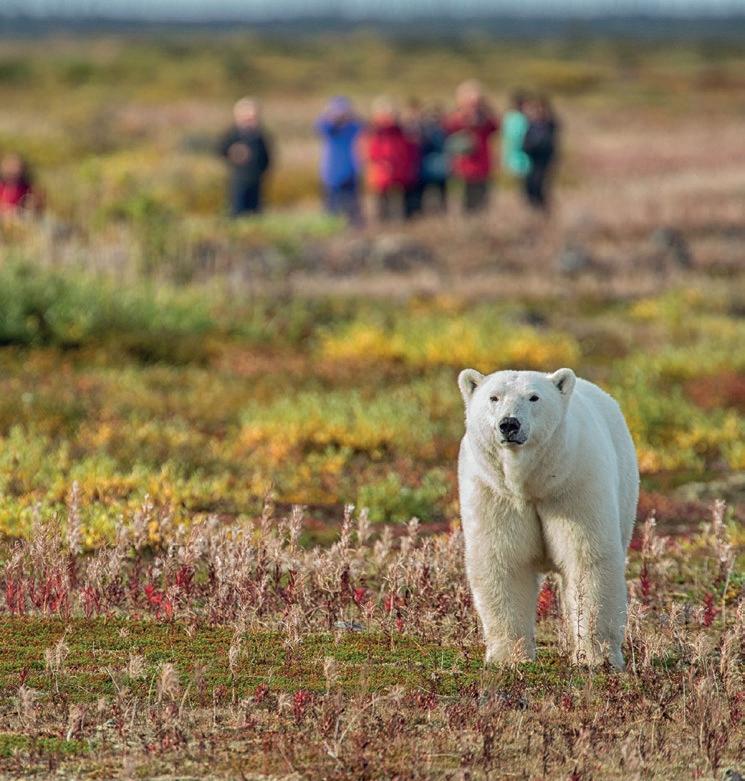


“Spotting polars bears in summer is a front-row seat to the gentler side of Churchill’s most famous residents”
AQUAGLIDING WITH LAZY BEAR
EXPEDITIONS: Dive into one of Churchill’s most unique experiences: AquaGliding. Slip into a wetsuit and lie belly-down on a floating mat, towed gently behind a Zodiac, as belugas swim beneath you – an utterly enchanting sight. This three-hour adventure is like a flying carpet on the water, and designed to be unintrusive to the whales while getting as close as possible. Available June to August.
BELUGA WATCHING WITH SEA
NORTH TOURS: Each summer, more than 6,000 playful beluga whales gather in
the Churchill River estuary, and they’re sure to steal your heart on this unforgettable two-hour tour. Beluga’s are the sirens of the whale world, and you can listen to their lively song through hydrophones as they glide beside your boat or kayak; it’s truly a whale of a time! Sea North Tours can facilitiate from June through August.
WALKING WITH POLAR BEARS
DURING AN ARCTIC SAFARI WITH CHURCHILL WILD: Venture into the wild tundra landscapes to walk with polar bears in their natural habitat on an Arctic safari. September’s golden light and migrating wildlife make it one of Churchill’s most breathtaking, soul-stirring experiences. Then decamp to a cozy lodge for a couple of nights followed by a few nights in a tundra camp, sleeping out in nature. Churchill Wild offers the experience in September.
TUNDRA BUGGY TOURS WITH FRONTIERS NORTH ADVENTURES:
Climb aboard an iconic Tundra Buggy with Frontiers North Adventures and roll across the wild where polar bears prowl and Arctic foxes dart in the snow. Choose from family-friendly, photography, or conservation-focused tours. Round out the adventure with dog sledding at Wapusk Adventures – the perfect mix of polar power and puppy love. Drives happen from October to November.
STAY IN A TUNDRA BUGGY
LODGE: Stay where the wild things are. The Tundra Buggy Lodge places you right on the tundra, surrounded by roaming polar bears – who often outnumber people – and glowing Arctic sunsets. Cozy, close and completely unforgettable, it’s like a floating hotel for wildlife lovers. Operated by Frontiers North Adventures, guests can stay between October and November.•
Toronto and Vancouver will both stage FIFA World Cup 26 matces and fans travelling for the football will find plenty to enjoy in those cities and beyond, says Stuart Forster
Canada is one of three host countries for the FIFA World Cup 26, which will run between June 12 and July 19, with Toronto staging six matches and Vancouver seven.
In Toronto these include the Canada national team’s first-ever World Cup finals game on home soil and one Round of 32 fixture.
Meanwhile, Vancouver’s fixtures include one game in Round of 32 and one in Round of 16.
The 45,736 capacity Toronto Stadium – more commonly known as BMO Field, where Toronto FC play their Major League Soccer (MLS) home games – is located in Exhibition Place, by the shoreline of Lake Ontario, just west of downtown. The stadium is easily reached from the downtown area and handily placed next to Billy Bishop Toronto City Airport, where Air Canada and Porter Airlines operate flights to destinations across Canada.
Two of Canada’s matches will feature among the five group games at Vancouver’s BC Place, a downtown stadium with a retractable roof.
Seating up to 54,000 spectators, it hosted the final of the FIFA Women’s World Cup 2015.
BC Place is in the Yaletown neighbourhood, a short distance from Stadium-Chinatown station, which means fans can travel on Vancouver’s SkyTrain metro network, with its links to the international airport.
The city’s Pacific Central Station is just one stop from the stadium on the Expo Line.
Host city highlights
Fans will have time to combine the football action with some city sightseeing and tours.
Toronto’s Islands can be stunning on summer days and sightseeing cruises offer skyline views dominated by the CN Tower. The tower’s observation decks are ideal for a city orientation while its EdgeWalk provide adrenalin thrills for visitors with a head for heights.
Family-friendly highlights include Ripley’s Aquarium of Canada, the neighbouring Toronto


Railway Museum and Royal Ontario Museum, whose collection ranges from art to natural history. The historic Distillery District, with its cobblestones, eateries and brew pubs, will be a popular option on match days.
Vancouver’s Gastown, Granville Island and Kitsilano will also be thronged with visitors, while a seawall popular among runners and cyclists and with unbeatable skyline views will be on offer in Stanley Park, whose Brockton Point is the province’s most-visited tourist attraction thanks to First Nations art and totem poles.

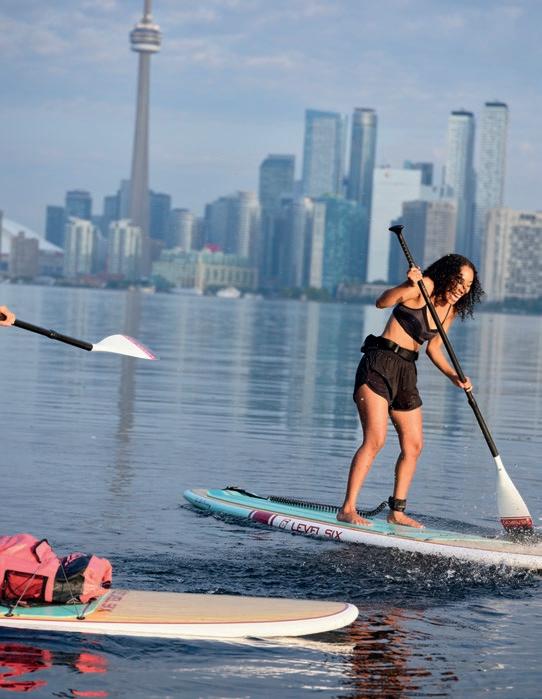








The Vancouver Lookout provides an elevated view of the city. Other popular attractions include Capilano Suspension Bridge, VanDusen Botanical Garden and nearby Grouse Mountain.
Canada’s often relatively traffic-free roads and reliable transport network make staying outside of the host cities a viable and more affordable option. The pretty town of Niagara-on-the-Lake is just two hours from Toronto and 30 minutes from Niagara Falls. The town places visitors in the heart of the country’s biggest winemaking


region while the Shaw Theatre Festival will offer drama away from the football action.
Just over an hour out from Toronto, Hamilton will appeal to military aviation enthusiasts who will pencil in a visit to the Canadian Warplane Heritage Museum.
The colourful Devil’s Punchbowl is one of more than 100 waterfalls in and around Hamilton. Many, including those in the Dundas Valley Conservation Area, are accessible via hiking trails.
Gravenhurst, a town two-and-a-halfhours’ drive from Toronto, is nicknamed ‘the Gateway to Muskoka’, a tranquil region of lakes and forests where Canada’s great outdoors is at its prettiest.
Similarly, three hours east of Toronto, Kingston’s attractions include its historic penitentiary and Fort Henry.
At the mouth of the Great Cataraqui River, Kingston is on the Rideau Canal and boat journeys along it, or into the Thousand Islands region, will prove a popular option between World Cup games.
On the west coast, additional accommodation will be available in Burnaby, North Vancouver, Richmond and across Metro Vancouver, all areas easily connected to downtown and BC Place Stadium via Skytrain and bus services. Further afield, ferries and seaplanes will provide good regional connections, with seaplanes linking Vancouver with destinations on Vancouver Island in less
than an hour. The town of Ucluelet provides access to the Pacific Rim National Park Reserve and hiking on the rugged Wild Pacific Trail, while grizzly bear and whalewatching tours are offered from Campbell River. Wildlife viewing is also an option from Tofino, whose rainforest boardwalks, indigenous experiences and world-class surfing are other major draw cards.
The newly unveiled elevated walkway along Squamish Canyon, a 1.5-hour drive from Vancouver along the scenic Sea-toSky Highway, is a way to experience the
Fans will be in the Zone Public screenings of games will take place in FIFA Fan Festival zones throughout the tournament.
Live music and art, as well as food and drink, will help amp up the vibe and colour in the fan zones.
The Bentway and Fort York National Historic Site will play host to Toronto’s FIFA Fan Festival while Vancouver’s will be at Hastings Park, home of the PNE Amphitheatre, which is within walking distance of the outdoor swimming pool in New Brighton Park.
Information on ticketing and dates for the fan areas showing games in both cities will be released closer to the tournament.


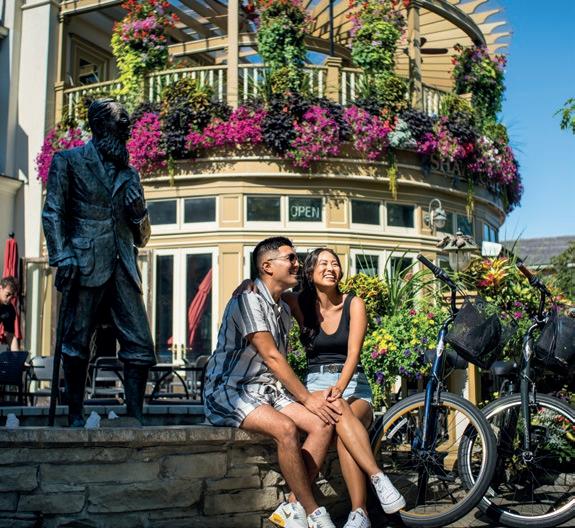



Howe Sound Biosphere’s coastal rainforest, Mamquam Falls’ prodigious power and the Squamish Nation’s culture.
Abbotsford, another of the many possible bases or day-trip options around Vancouver, is an 80-minute drive fron the city and buses operate along the route. Staying there opens up opportunities to explore the Fraser Valley and unwind in the mineral-rich water of Harrison Hot Springs.
Whatever happens on the pitch, football fans can be winners by experiencing the FIFA World Cup 26 in Canada. •
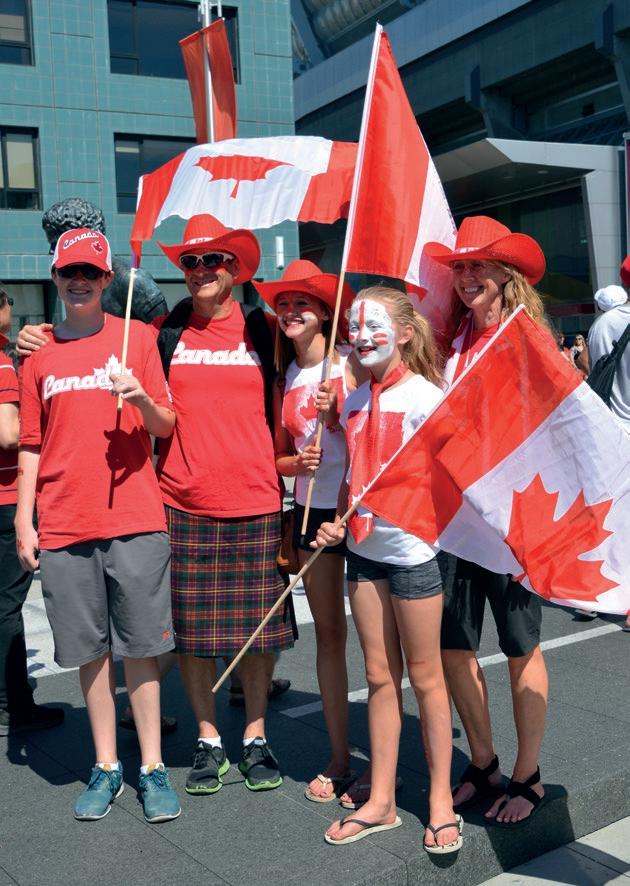

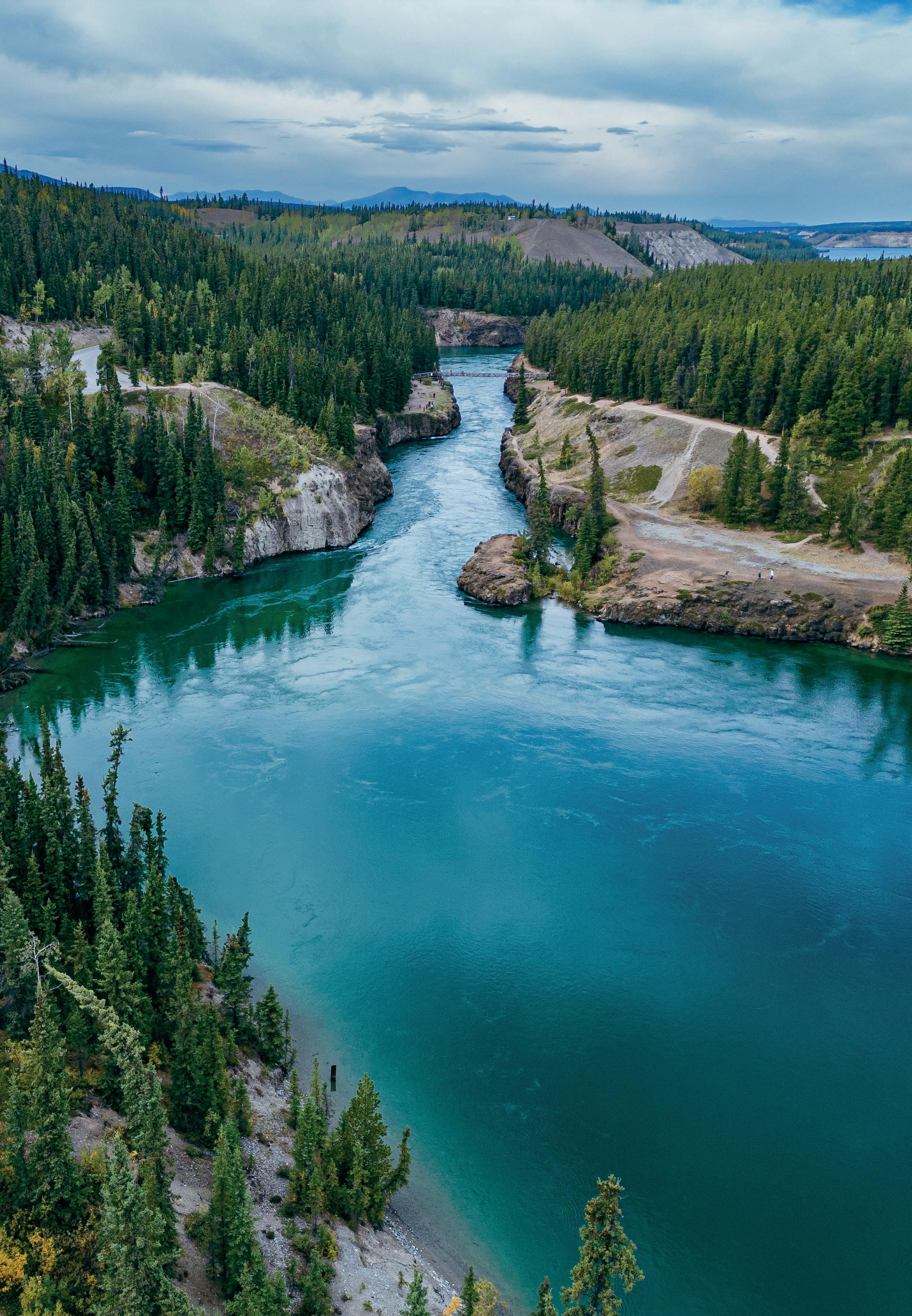
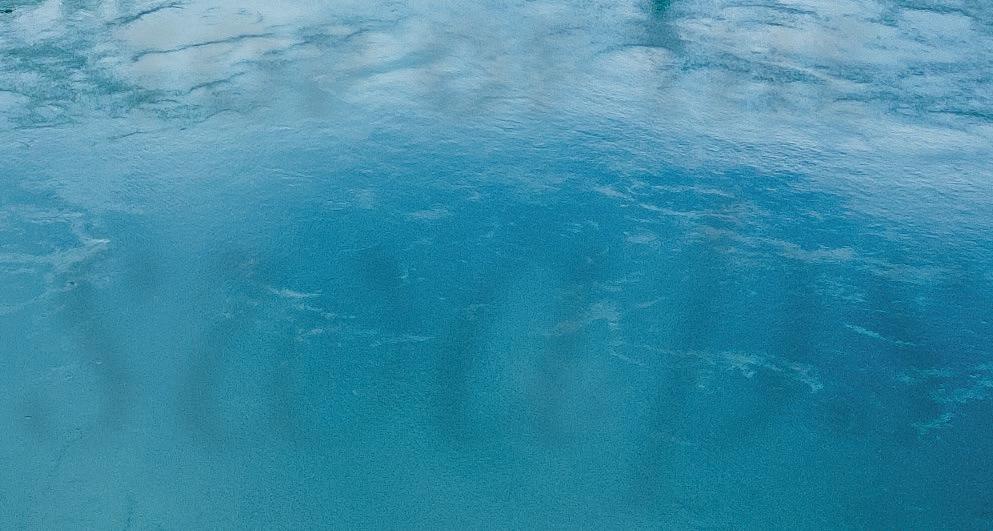
North America is packed with quintessential experiences. Here’s where to find 20 of the most sought after in Canada, says Lauren Jarvis

IF YOU LOVE A PACIFIC COAST CITY BREAK... swap Seattle for Vancouver. Looking for a place with a mild climate that is surrounded by mountains and the ocean, with easy access to the Great Outdoors and the chance to go whale watching from the city? Seattle offers these but Vancouver, where Orcas and humpback whales pass through from May to October, ticks all the same boxes. Seattle is known as the birthplace of the American coffee scene, while Vancouver’s coffee culture is also strong, driven by its multicultural population.
IF YOU LOVE ROAD TRIPS... swap Route 66 for the TransCanada Highway. Marking its centenary in 2026, America’s Mother Road is going to be a hectic highway so consider Canada’s longest national road, the provincial highway system that travels through all 10 of the country’s provinces, extending east-west from Victoria, B.C. to St. John’s, Newfoundland. Car ferries link both Newfoundland and Vancouver Island to the mainland.
IF YOU LOVE COWBOY CULTURE... swap Texas for Alberta. Home to the world-famous Calgary Stampede, Alberta’s cowboy culture was born from its 19thcentury cattle-ranching roots. Visitors with a hankering for the Old West can saddle up for ranch stays, a strong country music scene and horse riding along The Cowboy Trail in the foothills of the Rocky mountains.
IF YOU LOVE FARM TO TABLE DINING... swap Portland for Montréal. The Oregon city is known for prioritising locally sourced ingredients, organically grown produce and sustainable, ethical dining – as is Montréal, which is now something of a Mecca for foodies committed to eating responsibly. From the urban farms and “buvettes” (neighbourhood cafés) of Montréal, you’ll find regional seasonal cuisine that (literally) won’t cost the earth.
IF YOU LOVE BEARS AND WOLVES... swap Alaska for the Yukon. The breathtaking wilderness of the Yukon is more than a match for Alaska’s national parks. Tour operators in Whitehorse offer

Québec City, which have numerous urban parks and nearby scenic spots.
IF YOU LOVE THEATRE BREAKS... swap New York for Toronto. “Off Broadway” has a whole new meaning for those wanting a North American theatre break. Toronto has both grand theatres, where visitors can catch major touring shows, and intimate venues for independent plays. The city’s Theatre District is a major hub, with venues such as the Princess of Wales and Royal Alexandra Theatre.


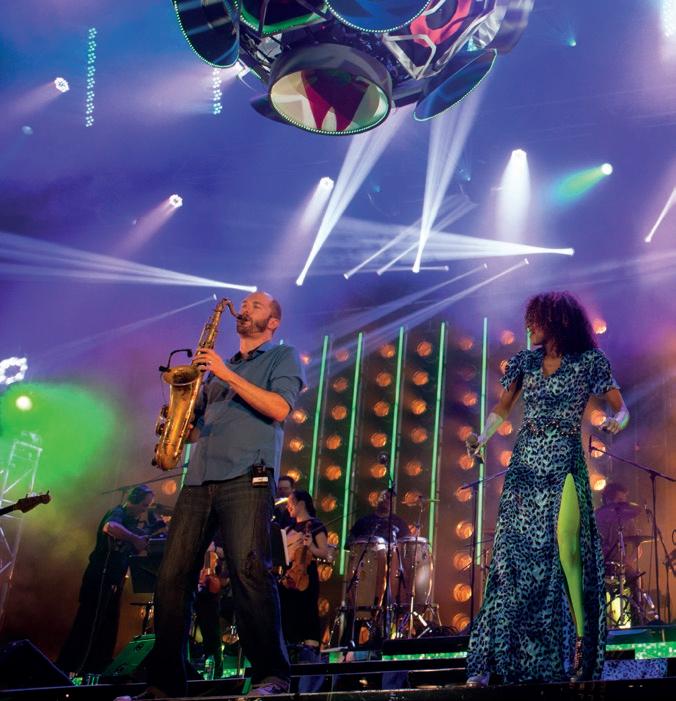
a range of eco-friendly excursions to watch grizzly and black bears, as well as wolves and lynx. Paddle the mighty Yukon River and you’ll likely see eagles, ospreys and beavers along its banks.
IF YOU LOVE JAZZ AND BLUES... swap New Orleans for Montréal. The jazz and blues scene is thriving in the bars and music venues of Montréal, where you’ll find cool and casual speakeasies showcasing rising stars and world-class auditoriums hosting international big-name acts. Montréal has a rich Jazz heritage: its most famous “son” of the genre is the legendary Oscar Peterson, with a downtown plaza dedicated to him.
IF YOU LOVE AUTUMN COLOURS... swap New England for Québec. Québec is a great choice to experience the dazzling colours of a North American fall without the crowds. Popular areas to view the foliage include national parks like MontTremblant and cities such as Montréal and
IF YOU LOVE INDIGENOUS EXPERIENCES...swap New Mexico for Ontario. Southwest USA is home to numerous federally recognised pueblos, nations and tribes that welcome visitors, but Indigenous culture in Ontario is equally diverse, with distinct languages and distinct artistic traditions (primarily Algonquian and Iroquoian). For example, Manitoulin Island is home to several First Nations communities which host tours, pow wows and festivals throughout the year.
IF YOU LOVE CITY MARKETS... swap Philadelphia’s Reading Street Terminal for Vancouver’s Granville Island Public Market. Philadelphia’s famous indoor market provides fresh produce and lunchtime snacks to locals and visitors alike – and Granville Island, with its 50 unique vendors, does the same but from a more aesthetically pleasing location that boasts waterfront and coastal views.
IF YOU LOVE A BALL GAME... swap the New York Yankees for the Toronto Blue Jays. Every trip to North America should include a baseball match
and in Canada the team to watch is the Toronto Blue Jays, who reached the sport’s World Series in October 2025. See them play at the Rogers Centre.
IF YOU LOVE THE GREAT LAKES... swap Lake Michigan for Lake Superior. The world’s largest freshwater lake, Superior stretches across the USA and Canada and offers exciting outdoor adventures along its Canadian shores. Stargaze in Lake Superior Provincial Park, hike the Casque Isle Trail or camp at Sleeping Giant Provincial Park, amidst some of the most incredible landscapes in North America.
IF YOU LOVE WHALE WATCHING... swap New England for Atlantic Canada. Ishmael, the lead character in Moby Dick, joined the whaling ship Pequod in Nantucket, Massachusetts, but the nutrient-rich coastal waters around Canada’s maritime provinces also yield opportunities to get out on the water to observe the giant leviathans. The Bay of Fundy is another prime whale-watching spot, due to its high tides that churn up plankton and krill.
IF YOU LOVE CREOLE CULTURE... swap Southern Louisiana for New Brunswick. The Canadian Maritimes were home to one of the first European colonies in North America, French settlers or “Acadians” who arrived in the 17th and 18th centuries. With their own history, culture and dialect, the Acadians of New Brunswick speak “Chiac” or “Brayon”. Visitors can celebrate all things Arcadian at the annual Festival Acadien in Caraquet, New Brunswick, in August.
IF YOU LOVE GIANT ICONS... swap the Grand Canyon for the Rocky Mountains. The grandeur of
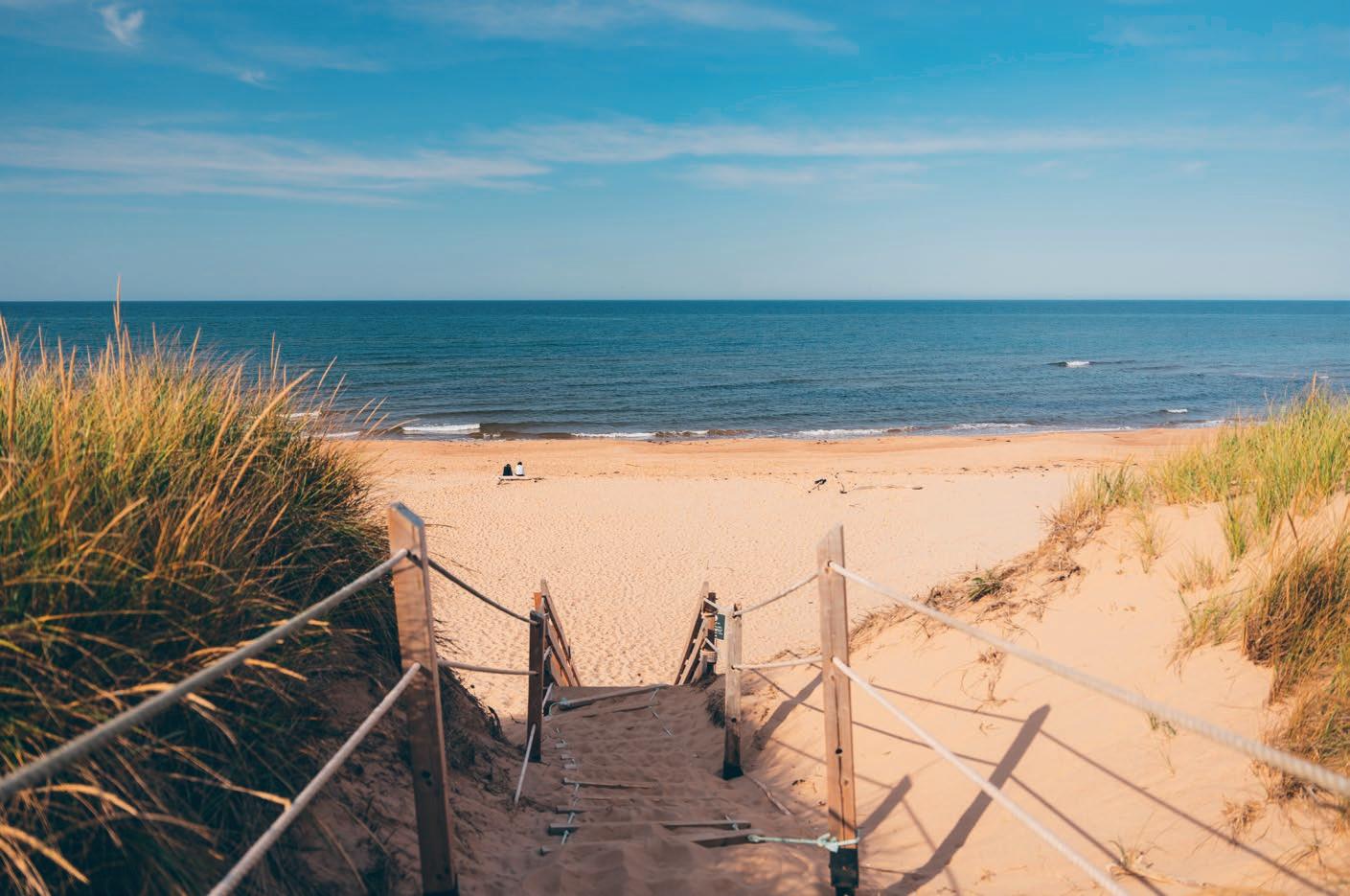
America’s Grand Canyon is rivalled by the soaring snow-capped peaks of Canada’s Rocky Mountains, a monumental chain that runs for around 1,000 miles southeastward from the northern tip of B.C. Explore on foot or by bike in summer, and strap on skis or snowshoes in winter.
IF YOU LOVE DREAMY BEACHES... swap Alabama for Prince Edward Island. Think the pristine white-sand beaches of the Gulf Shores can’t be beaten? Then visit Prince Edward Island’s central and north shores. Cavendish Beach is a popular long stretch of white-gold sand within PEI National Park, known for its connection to L.M. Montgomery’s Anne of Green Gables.
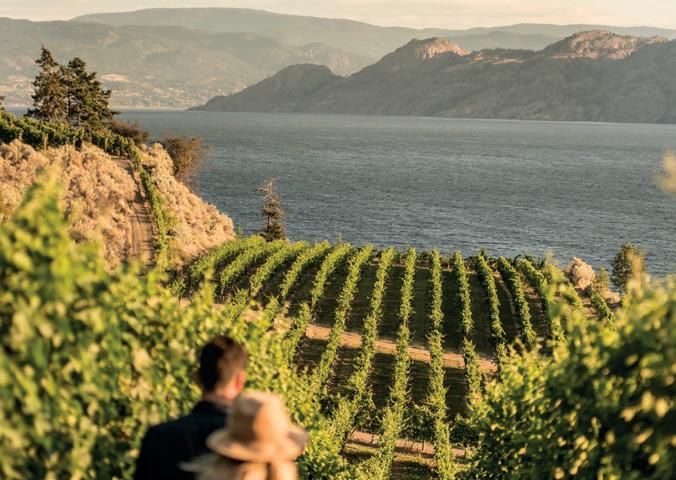





Festival has become a highlight of Nova Scotia’s events calendar. The weekend gathering includes ceilidhs, a kilted golf tournament and games from the Highlands such as the caber toss and tug of war.



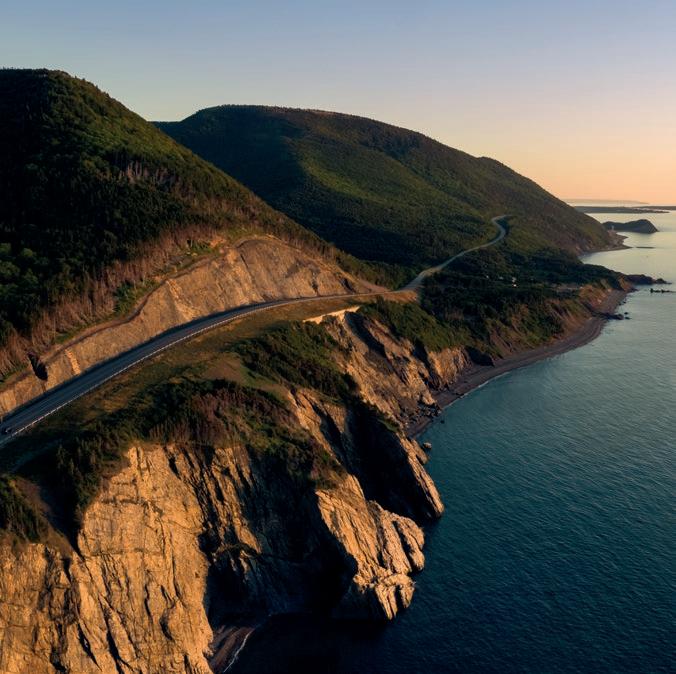
IF YOU LOVE LGBTQ+ NEIGHBOURHOODS... swap San Francisco for Vancouver. “San Fran” may have a long history of LGBTQ+ influence and activism but Vancouver’s Davie Village is home to gay-friendly bars, clubs, restaurants and shops. In the city’s West End, south-west of the downtown core, it’s an area of pink bus stops, rainbow banners, gay businesses, gay-friendly events and over 30 Travel Alternatives Group (TAG) hotels. Each August, the city hosts one of Canada’s best Prides.
IF YOU LOVE HIGHLAND GAMES... swap North Carolina for Nova Scotia. Pipes, kilts and Celtic songs come out in force at Grandfather Mountain, which hosts one of North America’s largest Highland Games, but when Scottish settlers began arriving in Atlantic Canada in the 18th century they bought with them a similar set of traditions. Today, the annual Antigonish
IF YOU LOVE WINE COUNTRY... swap Napa, California, for the Okanagan valley, B.C. California’s Napa Valley has done a grand job of marketing itself as America’s King of the Vines but there’s no better way to while away a sunny afternoon than in a stylish vineyard in the beautiful Okanagan Valley, home to more than 200 wineries, cellar-door tastings and a farm-to-table culinary scene.
IF YOU LOVE SCENIC DRIVES... swap the California coast for Cape Breton Island. Rivalling the twisting coastal views of the Pacific Coast Highway, the Cabot Trail is a 185-mile scenic highway which offers a scenic way to explore Nova Scotia’s famous island. From the rugged northern shore to Cape Breton Highlands National Park and the Gulf of St. Lawrence, the trail offers breathtaking views at every turn.
The family-friendly Sun Peaks resort, located in British Columbia’s interior, makes for a fun stopover in a driving itinerary across the province
Surrounded by pine tree-clad mountains in the heart of British Columbia, Sun Peaks is a haven for holidaymakers who enjoy fresh air and green open spaces.
Its origins lie in winter-sports, but this purpose-built village is now home to a thriving mountain community, with a focus on outdoor fun all year-round.
Located midway between the Rockies and Vancouver, Sun Peaks makes an ideal stopping off point for visitors on a self-drive trip across British Columbia.
With welcoming hotels and a choice of dining in its compact, pedestrianised village core, overnight visitors can forget their vehicles and simply take a leisurely stroll around to soak in the relaxed ambience.
Or, if they wish, guests can ride the chairlift to take in the views across the mountains and perhaps grab a selfie surrounded by the magnificent alpine flora.
Choosing to stay a little longer opens up a wealth of activities for visitors.
Hikers can explore the rolling peaks around the village, while golfers will enjoy teeing off on the highest-altitude 18-hole course in British Columbia. Visitors can try their hand at a range of activities, from fly-fishing to discgolf, perhaps followed up with a Jeep tour or a horse-drawn carriage ride.
More adventurous guests may opt to try out downhill mountain biking on the resort’s stellar trails, or saddle-up for a horse-back ride before taking to the water on a paddle-board.
Those competent in a canoe can even rent a boat and head out on the water for a truly Canadian experience. Other ways to explore include cross-country cycling and Jeep tours. Evenings are low key, with laid-back dining, casual bars and chilling out the order of the day. This relaxed vibe sets you up for a good night’s sleep before tucking in to a hearty breakfast ahead of the next day’s adventures.
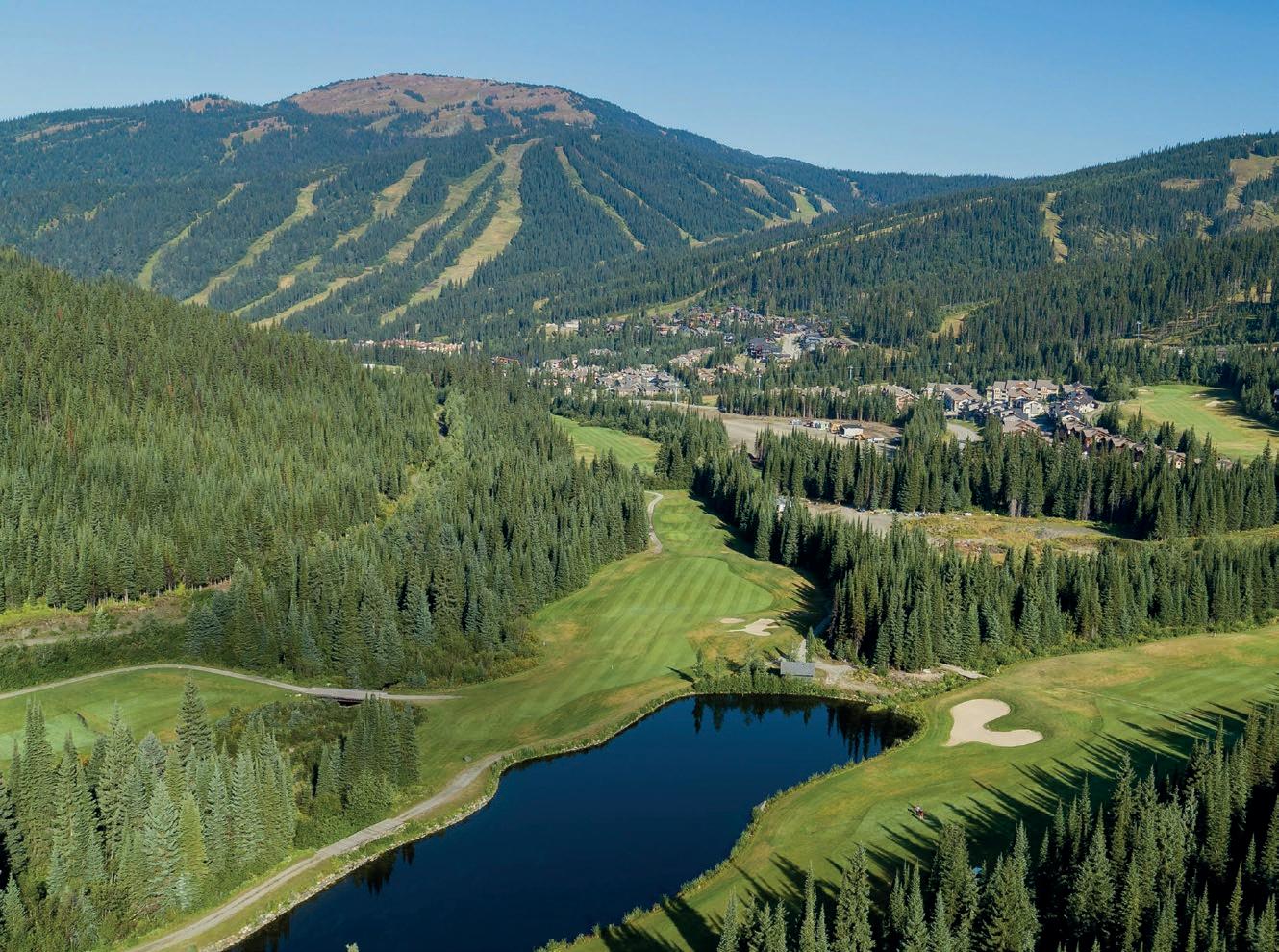





With its pedestrianised core and range of family-friendly lodging and dining, as well as family-oriented activities, the resort will appeal to those travelling with children.
As a scenic break during a longer self-drive schedule across British Columbia, you can forget the kids asking “Are we there yet” for a couple of days!
As many of the activities begin in the village, you can walk straight out from your accommodation to start your day of fun.
The resort is still relatively undiscovered as a summer destination, meaning the hotels offer a warm welcome with an equally friendly price point during the warmer months.
The activities in the village also offer attractive rates and many can be booked ahead by agents on behalf of their clients.


No matter what the season Sun Peaks has plenty to offer. For many who find their way here and enjoy the fresh mountain air and their outdoor time, the question they ask is often “Why aren’t we staying longer?” •
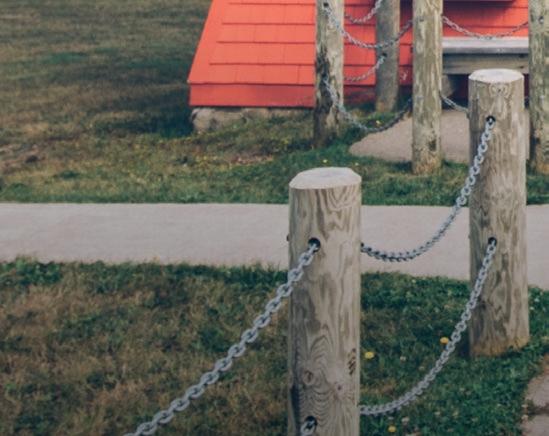
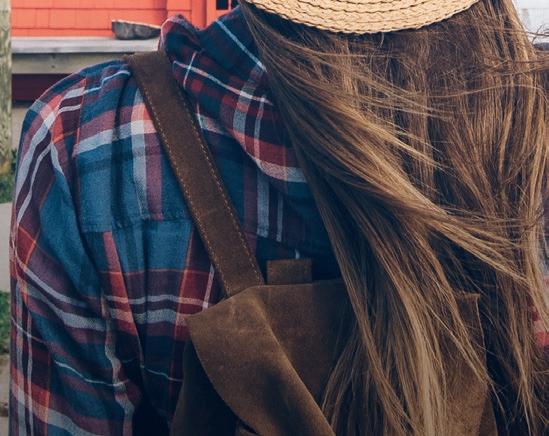

Marvel at the world’s highest tides, watch whales breach, or take a visit to the days of yore
Visit the world’s highest and lowest tides: Be astounded by the giant “flowerpot” rock formations at Hopewell Rocks Park. When the tide is low, explorers can stroll the ocean floor surrounded by this otherworldly natural phenomenon, to feel the full effect of the world’s highest tides. When the tide is high, kayaks can be steered through the tunnels and passageways created by the rising sea level in the Bay of Fundy. Baymount Outdoor Adventures offers a two-hour kayaking experience between June and September, with a rare opportunity in mid-August to paddle in the midst of thousands of migratory shorebirds. Baymountadventures.com
Overindulge on fresh seafood: New Brunswick’s proximity to the ocean gives it a home advantage when it comes to seafood. Shediac, known as the Lobster Capital of the World, hosts an annual celebration dedicated to the delectable crustaceans, with thousands of visitors




descending on the town to join a 600-guest outdoor lobster dinner on Main Street to verify the quality for themselves. tourismnewbrunswick.ca/food-and-drink Celebrate diverse cultures: With a multifaceted cultural fabric, New Brunswick embraces its Indigenous peoples, French influences, and the mark left by its British, Scottish and Irish settlers. Over the past century this melting pot has diversified with Italian, Greek, Lebanese, Asian, Indian, Pakistani, Syrian and African Canadian communities establishing themselves in the big cities. Numerous festivals celebrate cultural heritage including the annual Tintamarre, in Caraquet on August 15, which pays homage to the Acadian community through music, food and flamboyant costumes. tourismnewbrunswick.ca/our-roots Wander vibrant cities: The province’s cities are always down for a good time. Fredericton plays host to the Harvest Music Festival each autumn, with


hundreds of world class musicians, buskers, acrobats, food trucks, and art vendors taking over the streets. Moncton, the geographic centre of the maritime provinces, is home to Magnetic Hill Winery, a 19th century historic site where award-winning wines can be sampled against the city backdrop. Saint John’s is worth a visit simply for Uptown, which should be explored on foot to take in narrow, steep streets lined with historic buildings, restaurants and museums. tourismnewbrunswick.ca/cities-regions Hit the road: Drive the Acadian Coast, with 750 km of rich history and bountiful nature to discover. There are plenty of warm, sandy beaches enroute, along with quaint coastal communities including Bouctouche, the Acadian Peninsula and the Chaleur region, or take a detour to Miramichi. An absolute must is an extended stop at Kouchibouguac National Park. Stay for the golden sand dunes, estuaries brimming with life, warm ocean beaches,


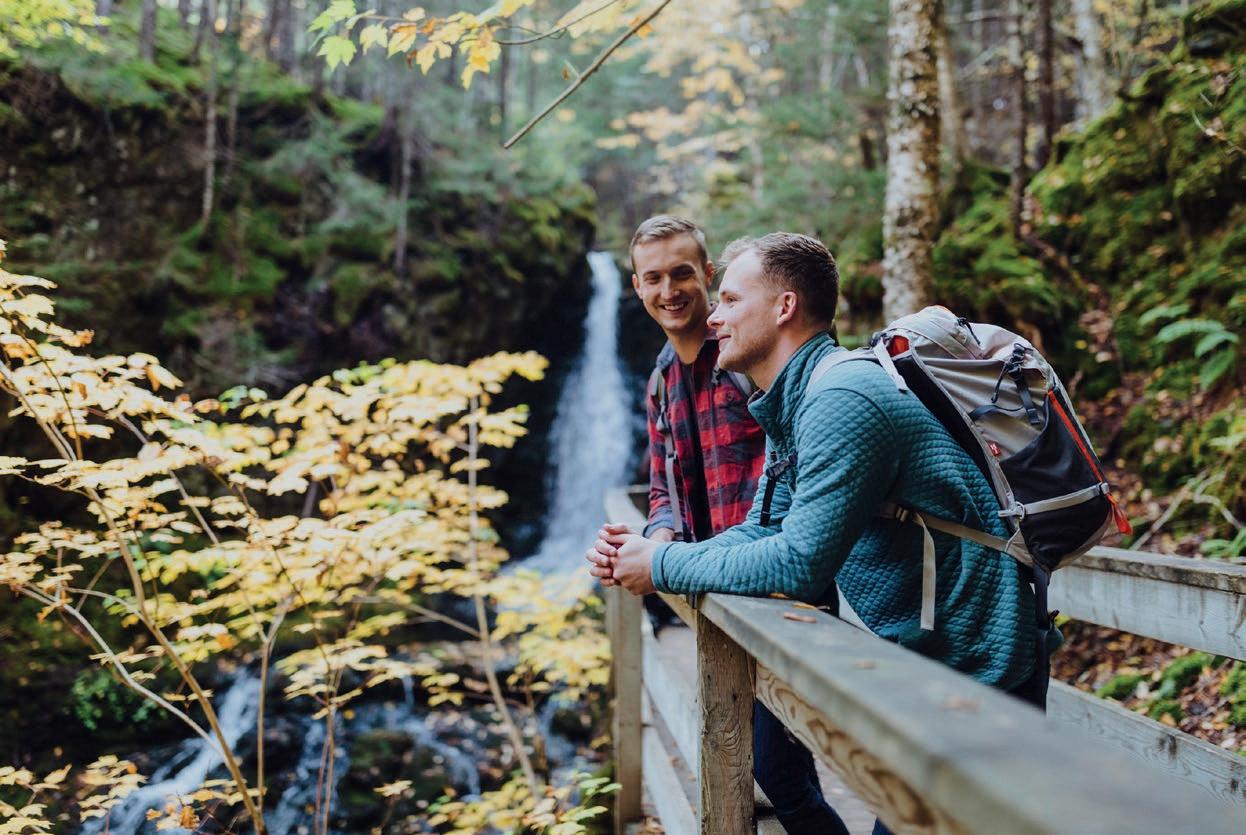
Mi’kmaq and Acadian culture, the starry spectacle of a Dark Sky Preserve and snow-focussed winter activities. tourismnewbrunswick.ca/roadtrips
Be at one with wildlife: New Brunswick is home to some of the best whale-watching in the world. Rare species like the endangered North Atlantic right whale come to give birth, feed, and rest in The Bay of Fundy. They are joined by finbacks (the second largest whale in the world), humpbacks, minkes, porpoises, seals, and seabirds. Take a sailing vessel out on the water with an expert guide, safe in the knowledge that the wildlife is shown the utmost respect. tourismnewbrunswick.ca/ whale-watching
Hike the wilderness: Check out the wildernesses of Fundy National Park where over 120 km of hiking trails take walkers through the dense Acadian forest, with mountains, parks, rivers, and waterfalls around every turn. There are a choice of five

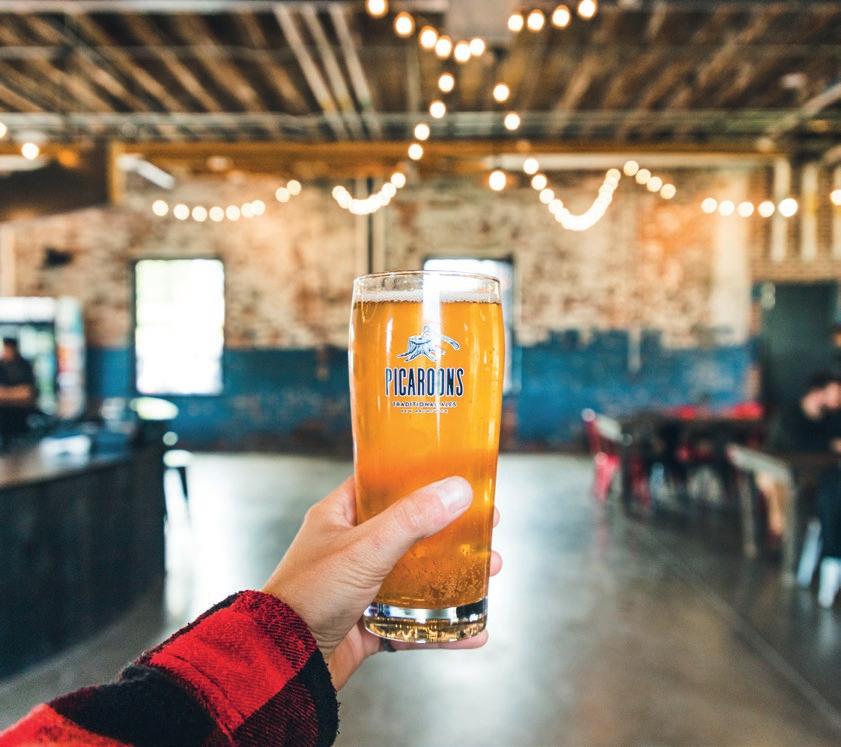


campgrounds, plus a number of B&Bs, inns and glamping experiences. Then head to Fundy Trail Provincial Park, where the famous Fundy Footpath begins, offering up a multi-day hiking experience. Both parks are connected by a scenic route which allows access along the enture stretch of the Bay of Fundy. tourismnewbrunswick.ca/ outdoor-adventures
Light up the darkness: The Pays de la Sagouine enchanting Lumina Night Walk is inspired by Acadian culture, stories and the region’s iconic landscapes. This 60-90-minute light and sound experience happens after nightfall along a 1.5-km footpath in the woods near the Pays de la Sagouine, in both English and French. The whole family is invited to discover the Lumina experience from mid-May to mid-October. sagouine.com/en/lumina Brew up a storm: New Brunswick is home to a staggering 50 plus craft breweries, and also has the highest
concentration of microbreweries in Atlantic Canada. Beloved microbrewery brands are often inspired by local folklore and can be found in some unexpected locations such as a historic community church or former auto garage, to name but a few. Ales, lagers, and Pilsners are crafted by brewmasters, often using locally-sourced products like wild blueberries or maple syrup. tourismnewbrunswick.ca/breweries
Live in history: Go back in time with a visit to the Village Historique Acadien, a living museum with 40 historic buildings. Bilingual interpretive guides convincingly reconstruct the daily lives of the Acadian people from 1770 to 1949 for those curious to see scenes from the past. This is also a chance to taste authentic Acadian cuisine, either outdoors in the sunshine with a quick snack, or sitting down to a homemade meal in the air-conditioned restaurant La Table des Ancêtres. villagehistoriqueacadien.com/en/ •
Canada enjoys excellent flight access from the UK, with direct services to seven cities opening up the country for exploration – from its Atlantic coast to the Pacific
Why go: Arguably the world’s most multicultural city, Toronto has more than a dozen ethnic neighbourhoods with over half of its residents born outside Canada.
Flights: Toronto’s Pearson Airport is well served from London’s Heathrow with yearround services operated by Air Canada, British Airways, Virgin Atlantic and WestJet, while Gatwick has year-round flights with Air Transat. Seasonal flights are operated by Air Transat from Manchester and Glasgow and from Edinburgh by Air Canada.
Getting downtown: Get to the city from Pearson Airport by train on the UP Express service ($12.35), by bus ($3.35) or by taxi (around $62).
Trending: The CN Tower celebrates its 50th anniversary in 2026. Canada’s National Tower is the tallest building in the Western Hemisphere and is a third of a mile tall from its base to the top of the antenna.
Don’t miss: Explore Chinatown and other neighbourhoods. Take a culture trip at the Royal Ontario Museum and be entertained in the Distillery Historic District.

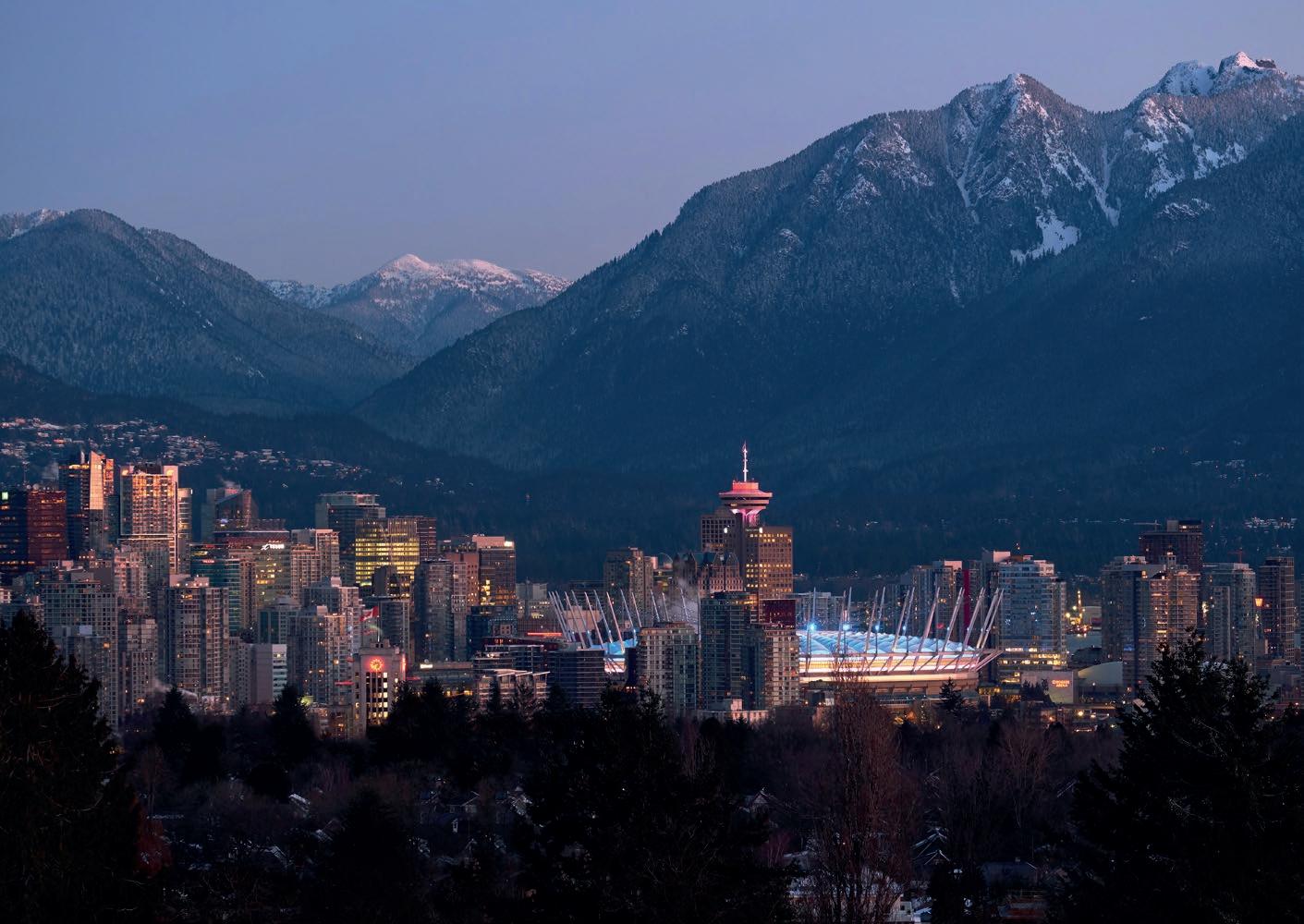
Why go: Vancouver is Canada’s most scenic and eye-catching city, a mix of green spaces and shimmering glass and where the Pacific Ocean meets the Coast Mountains.
Flights: Vancouver is served by flights from London year-round by British Airways and Air Canada.
Getting downtown: Take the Canada Line Skytrain for the 25-minute journey from Vancouver Airport to downtown or a taxi, which costs $55-$65 depending on traffic.
Trending: Grouse Mountain welcomed two major new attractions in summer 2025: the North Shore’s only chairlift-accessed Mountain Bike Park and a gravity-defying Mountain Coaster.
Don’t miss: Among its top attractions are Stanley Park, where Vancouver Aquarium is located, funky Granville Island and the Museum of Anthropology. Popular spots just outside the city are Capilano Suspension Bridge Park, while the busy four-season destination Whistler is two hours away via the Sea to Sky Highway.
Why go: Its appeal lies in it blend of European charm and North American modernity, underpinned by a rich history evident in Old Montréal’s architecture and cobblestone streets.
Flights: British Airways, Air Canada and Air Transat all fly non-stop to Montréal-Trudeau International Airport.
Getting downtown: The 747-bus service ($11.25) takes passengers from the airport to downtown 24/7 in around half an hour. After its completion in 2027, the city’s new REM will link downtown and the airport in just 20 minutes. Taxis (a fixed fare of $35) and ridesharing services are other options.
Trending: For thrill seekers, Montréal Bungee in the Old Port is the highest urban bungee jump in North America, with nighttime jumps new for 2026.
Don’t miss: While in Québec’s largest city, visit Old Montréal and its Gothic Revival Notre-Dame Cathedral, climb up to MontRoyal Park and explore neighbourhoods such as Le Plateau and the Old Port.

Why go: Outdoor adventures, Western Heritage, a vibrant arts scene, top cuisine and an Olympic Games legacy make for a unique mix.
Flights: Rockies’ gateway Calgary has year-round flights from Heathrow with Air Canada and Westjet, with a seasonal WestJet service from Edinburgh.
Getting downtown: Express buses ($10.75) and taxis ($40-$65), take around 20 minutes from the airport to downtown
Trending: Its Western heritage, which comes to the fore each July with the 10-day Calgary Stampede extravaganza, has earned the city the soubriquet “Cowtown”, although oil laid the foundations for its growth.
Don’t miss: Experience its past in the openair living history museum Heritage Park, take to the top of the Calgary Tower, whizz down a zipline from the top of the ski jump tower at Calgary Olympic Park and head to Banff National Park, 90 minutes away.
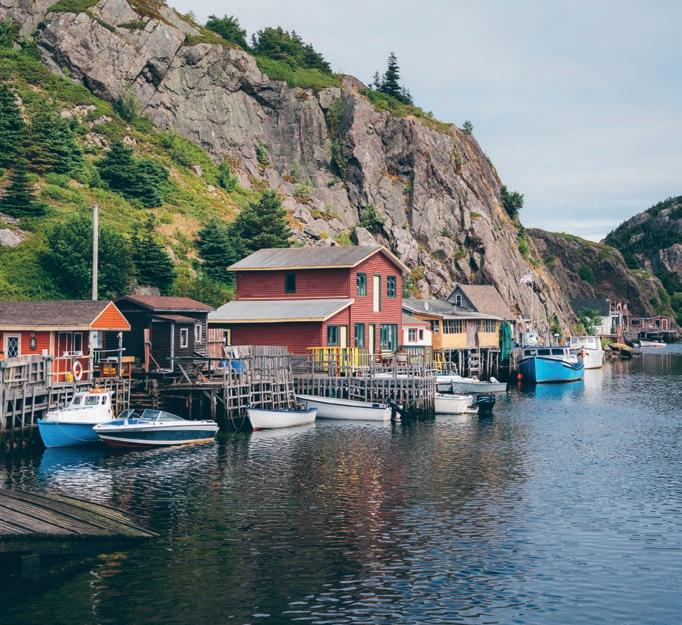
Why go: Canada’s capital is the country’s cultural, historical, and political heart, with a host of national museums and galleries.
Flights: Air Canada now operates a yearround service from Heathrow. For the first time, starting May 15 2026, Air Transat will offer a non-stop, three-times-a-week service from Gatwick.
Getting downtown: Ride the O-Train ($4) from the airport to the city or take a bus ($4) or taxi (around $40).
Trending: September 2026 will see Ottawa host the wheelchair Basketball World Championships, featuring 28 nations. Through venue upgrades, Ottawa 2026 will establish new accessibility standards and position the city as a premier inclusive sporting destination.
Don’t miss: Parliament Hill’s architecture, the Rideau Canal and world-class museums are top draws, while seasonal events include Winterlude and the Canadian Tulip Festival.
Why go: Visit for its mix of waterfront attractions, historic sites, top seafood and outdoor activities like whale watching and visiting picturesque fishing villages and Canada’s most photographed lighthouse at Peggy’s Cove.
Flights: Fly to Halifax from Heathrow with Air Canada and from Gatwick and Edinburgh with Westjet.
Getting Downtown: Get to the city centre from the airport by express bus ($4.75), shuttles ($4.50) and taxis (around $65).
Trending: The Halifax Busker Festival returns to the Halifax Waterfront from July 29-August 3, 2026, showcasing talent from buskers around the world.
Don’t miss: Explore the hilltop Halifax Citadel and stroll the city’s Waterfront Boardwalk, stopping off to visit the Canadian Museum of Immigration and the Maritime Museum of the Atlantic.





Why go: It has the shortest flight time between Canada and the UK, at under five hours. With a quaint charm, North America’s oldest city boasts a distinct cultural heritage with strong Irish and British influences.
Flights:.Seasonal flights (April to October) are operated from Gatwick by WestJet Getting Downtown: Take the Metrobus ($2.50), taxis ($25-$35) or ride-sharing services to get to the city from the airport
Trending: 2026 sees the 25th anniversary
of 9/11. Make the three-hour drive from St. John’s to Gander next summer (June 4-13) to see the show performed in the very town that stars in the uplifting musical.
Don’t miss: Explore the colourful homes in The Battery neighbourhood before hiking up Signal Hill for scenic views and to learn of the conflicts waged here during the Seven Years’ War (1756 to 1763), when British and French troops vied for control of the continent. Also see its Railway Coastal Museum. •




With its oceans and rivers, rich agricultural sector, Indigenous and multiethnic influences, Canada is a four-season playground for chefs and gastronomes alike. Aman Dosanj takes us on a culinary tour






Nova Scotian lobster rolls are a must recommendation for clients heading to New Brunswick, Nova Scotia, Newfoundland and Labrador and Prince Edward Island (PEI). The popular lunchtime staple showcases tender Atlantic lobster meat, which is often dressed with creamy mayo and perhaps chives, dill, garlic and zest of lemon and served on a toasted bun. Other high-quality, sustainable seafood readily available in the region includes, scallops, snow crab, Atlantic cod, Atlantic halibut, mussels and shrimp.
This quintessential Canadian treat dates back to the early 1900s and has inspired self-guided tours and annual festivals, like Ontario’s Butter Tart Festival (June 13, 2026) in Midland, Ontario. Bà Nôi micro-bakery in Toronto has arguably the tastiest old-school butter tarts around. The flaky caramelized crust encases a gooey, shimmery, not-toosweet filling, while a gentle pinch of sea salt on top lifts each bite.
B is also for Beaver Tails. This all-weather treat consists of whole-wheat dough stretched into an oblong shape (hence the name), then deep-fried and tossed in cinnamon sugar or icing sugar for purists. Since debuting in Ottawa in 1978, Beaver



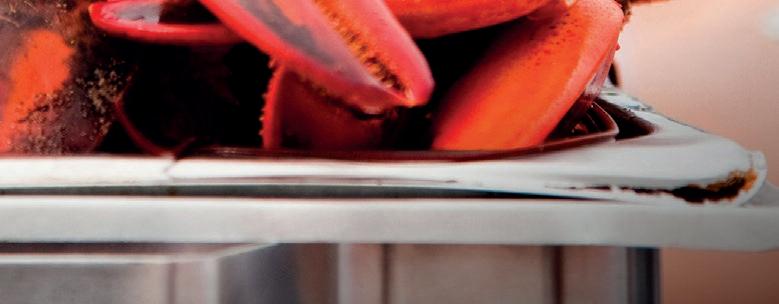
Trails Pastry has spawned more than 140 locations worldwide.
Over the past decade, the Canadian craft beer industry has exploded, growing from 564 breweries in 2015 to over 1,200 today.
In British Columbia alone, the Ale Trail features around 220 local breweries across 22 routes, but several other provinces have also set up guided walking tours, self-guided itineraries, downloadable trail maps and interactive apps to help visitors plan the perfect “beercation.”
Cidermakers are blending local and foraged fruits, funky homegrown botanicals and natural fermentations for a unique taste of place. Chain Yard in Halifax, Nova Scotia, sources its apples from orchards in the Annapolis Valley.
Poutine, maple syrup and ketchup-flavoured crisps are only the beginning.
Canada is a mosaic; a patchwork of food traditions and distinct identities united by the common ingredients that the country’s varied, sometimes extreme, landscapes offer. Toronto, the fourth-largest city in North America, is home to more than 230 nationalities with over 140 languages spoken




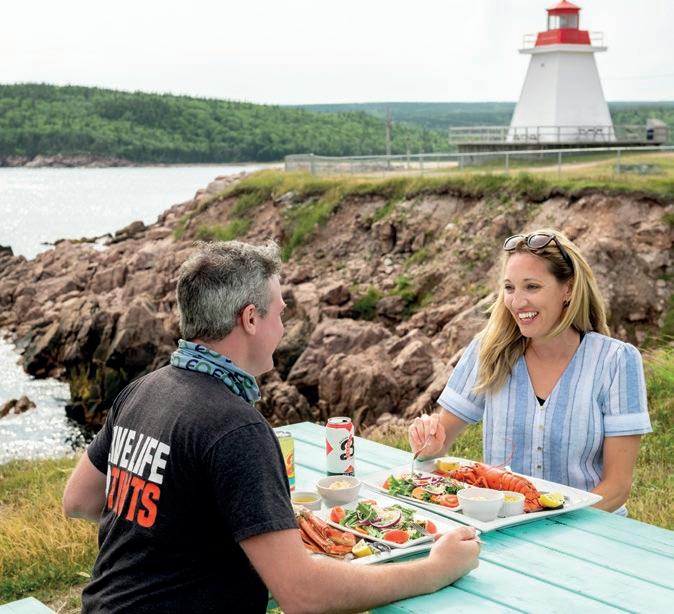
– and that’s reflected in its ever-evolving foodways. Throughout the country, secondand third-generation chefs are reimagining their heritage cuisines and flavours with local ingredients in bold new and creative ways.
Wild food experts offer interactive foraging walks, workshops and field camps to discover the plant-based wonders that can be found at our feet. After a stroll along a riverbank or trek in the boreal forest, you’ll be able to stock your home pantry with wild edibles like shaggy mane mushrooms, Labrador tea and nodding onion. Options to suggest to clients include From the Wild tours, which are hosted by the James Beard Award-
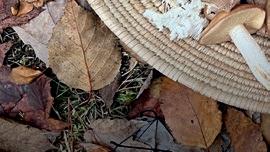

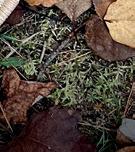


nominated filmmaker Kevin Kossowan in Alberta, and Food Culture Placed workshops, organised by Lori McCarthy, a cultural ambassador for Newfoundland.
Canada is home to shape-shifting soils and diverse microclimates. It enjoys four distinct seasons and with such an emphasis on eating seasonally and locally, it’s easy to find produce-packed markets featuring a wide range of products such as fresh produce, jams, pickles, vinegars and oils, cheeses and hot sauces. Standouts include the Founders’ Food Hall in Charlottetown (PEI), Jean-Talon Market in Montréal, Penticton Farmers’ Market in B.C. and Fredericton Boyce Farmers’ Market on the St. John River in New
Brunswick. Farmers’ markets are good for picking up road trip snacks, or gifts such as maple syrup or mustards at prices more affordable than at the main airports.
Canada experiences summer temperatures in the Okanagan Valley, B.C., hot enough to ripen Cabernet Sauvignon yet also has cold enough weather in the winter to produce world-class icewine in Ontario.
The country has long been known for its icewine production – a popular choice of gift to take home – and varietals like Pinot Noir, Chardonnay and Riesling. But from British Columbia to Nova Scotia, wineries are making a mark globally with their stellar bubbly: of the 600-plus cool-climate wineries










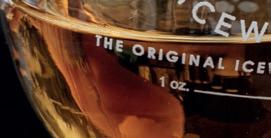












dotted across the country, about 200 now produce sparkling wine.
Wendell Estate in Roblin, Manitoba, is the gold standard for beekeeping. The result? A striking white, raw, naturally soft-set honey with floral aromas, a buttery texture and a slightly tart flavour profile, which makes for a unique souvenir. For a more immersive experience, head to Miels d’Anicet, located 275 km north of Montréal in the HautesLaurentides region. You can tour the dreamy 1,200-hive apiary, watch the bees in action and sample products in the boutique.











Experiences and food tours that celebrate and preserve Indigenous culture and wisdom are available across the country.
Whether you grab a pint at Inuk-owned Red Tape Brewery in Toronto, feast on modern Indigenous cuisine led by Scott Jonathan Isheroff (a Mushkego chef from Attawapiskat First Nation) at Bernadette’s in Edmonton or go for a tasting at Nk’Mip Winery in Osoyoos, B.C., every act of support is a step toward meaningful reconciliation.
Indigenous chefs whip up delicious meals based on traditional recipes or fusion delights like stinging nettle gnocchi, boar bacon or bison cheeseburgers.
For centuries, Métis, Inuit, and other First Nations communities have transformed key staples such as wild salmon and bison into jerky to address food security challenges and preserve their cultural heritage.
Wanuskewin Heritage Park in Saskatoon is a natural sanctuary where the land echoes with the stories of its First Peoples that date back more than 6,000 years.
One Arrow First Nation crafted a tasty BBQ or Teriyaki Bison Jerky made with local Saskatchewan bison. In B.C., Authentic Indigenous Seafood offers a variety of naturally cured products, including Candied Wild Pink Salmon. Jerky options are high in protein, making them excellent snacks for camping, hiking and other backcountry activities – and make good homecoming gifts.
Kozlik’s has been a beloved pantry staple since 1948. The family-owned Toronto brand’s handmade products – including a zippy classic Dijon, a spicy honey mustard and the whole-seed Triple Crunch, featuring Canadian whisky and Ontario honey – start with top-quality mustard seeds grown in their own backyard. Head to their stall in St. Lawrence Market in Toronto, where you can taste as many varietals as your palette can take before making your selection.
Montréal takes its bagels seriously – and for good reason. The city’s most famous, rivalrous bakeries are St-Viateur and Fairmount, with both within walking distance of each another. Every chewy ring of dough has been handmade, dipped in honeysweetened water and then wood-fired until golden. That means they’re sweeter, smaller and crispier than their New York















counterparts, and they also have a larger hole. The Montréal bagel – which is available from the city’s airport – is more than a breakfast staple; each mouthful is steeped in the history and immigration of the city’s Jewish communities, originally from Poland and other Eastern European countries.
It takes about 40 litres of sap to produce approximately one litre of maple syrup – and Canada produces roughly 78% of the world’s 100% pure maple syrup, with Québec alone responsible for around 92% of the country’s total production.
A typical “Sugar Season” roughly runs from late February until the end of April.
Wabanaki Maple is a female- and Indigenous-led business in New Brunswick that makes its barrel-aged maple syrups using generations-old techniques passed down by the Wabanaki Confederacy (Wolastoqiyik, Mi’kmaq, Penobscot, Abenaki and Passamaquoddy Peoples). Wabanaki Maple is available at stockists across Canada.






“Cidermakers are blending local and foraged fruits, funky homegrown botanicals and natural fermentations for unique tastes of place”
The city of Nanaimo on Vancouver Island, B.C., may have a tiny population but it is big on name recognition. And that is all down to the iconic triple-layered treat, which consists of a thick graham cracker, cocoa and coconut base, creamy custard layer, and a rich chocolate ganache topper. They are sold everywhere from British Columbia Ferries to coffee stands. Vancouver’s Northern Bars – a premium version – has bite-sized squares sold in giftable boxes, available at their store at Granville Island Public Market.
No room in your suitcase? You can pick up a box post-Security at Vancouver, Calgary, Toronto Pearson or Billy Bishop Airport.






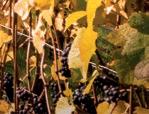


Canada’s pristine waters stretch from coast to coast to coast, making it easy to find 100% traceable seafood at local fishmongers and restaurants.
The country borders three oceans – the Atlantic, Pacific and Arctic – and even the sea salt varies. West Coast finishing salts tend to be milder and more delicate; the crystals in Bonavista, hand-harvested by Newfoundland Salt Company, have a crisp, clean, and briny profile. Don’t miss out on Atlantic lobster, Quahog clams, B.C. spot prawns, wild Chinook salmon, oysters and halibut, and more. For fishinados, the PEI International Shellfish Festival has earned a reputation as the biggest kitchen party in Atlantic Canada. Manitoba and The Northwest Territories are both renowned for their fishing lodges.
Explore diverse regional African flavours in Toronto at Rachel Adjei’s The Abibiman Project; dine on top of a frozen river in Winnipeg with RAW:almond; immerse yourself in soul-enriching storytelling at the Han Wi Moon Dinners at Wanuskewin Heritage Park in Saskatoon; or feast to the backdrop of the Bay of Fundy’s tides via Dining on the Ocean Floor in Nova Scotia. P is also for is Poutine, the French-Canadian
classic of golden fries loaded with savoury gravy and cheese curds. Each February, La Poutine Week is a national celebration of the dish, while Le Grand Poutinefest in Montréal in the summer features several weeks of poutine, family activities, booths and outdoor concerts.
It’s no secret that the residents of Québec love to eat well – and in style. Year after year, small-scale artisanal cheese-makers here rack up accolades for their cheeses,


which rank among the best in the world. Fromagerie La Station, Fromagerie Oka and Fromagerie le Mouton Blanc are three to keep an eye out for. Québec is also the newest addition to the Michelin guide in Canada. Eight terroir-driven establishments, including Montréal’s Soninabayon (a 14-seat micro restaurant), has received one star while Tanière³ in Québec City earned two.
Canadians enjoy rye bread, especially Winnipeg-style rye and other varieties like Canadian rye. It is considered a beloved staple in many households and is popular for sandwiches, toast, and more.
Winnipeg’s rye bread, in particular, has a national reputation for its unique quality.
Based in Winnipeg, City Bakery has been producing rye bread since 1948 and now ships to other provinces like BC, Alberta, and Saskatchewan. Dimpflmeier Bakery, a German-Canadian company in Toronto, is a large producer of rye bread and other baked goods that can be found throughout Canada.

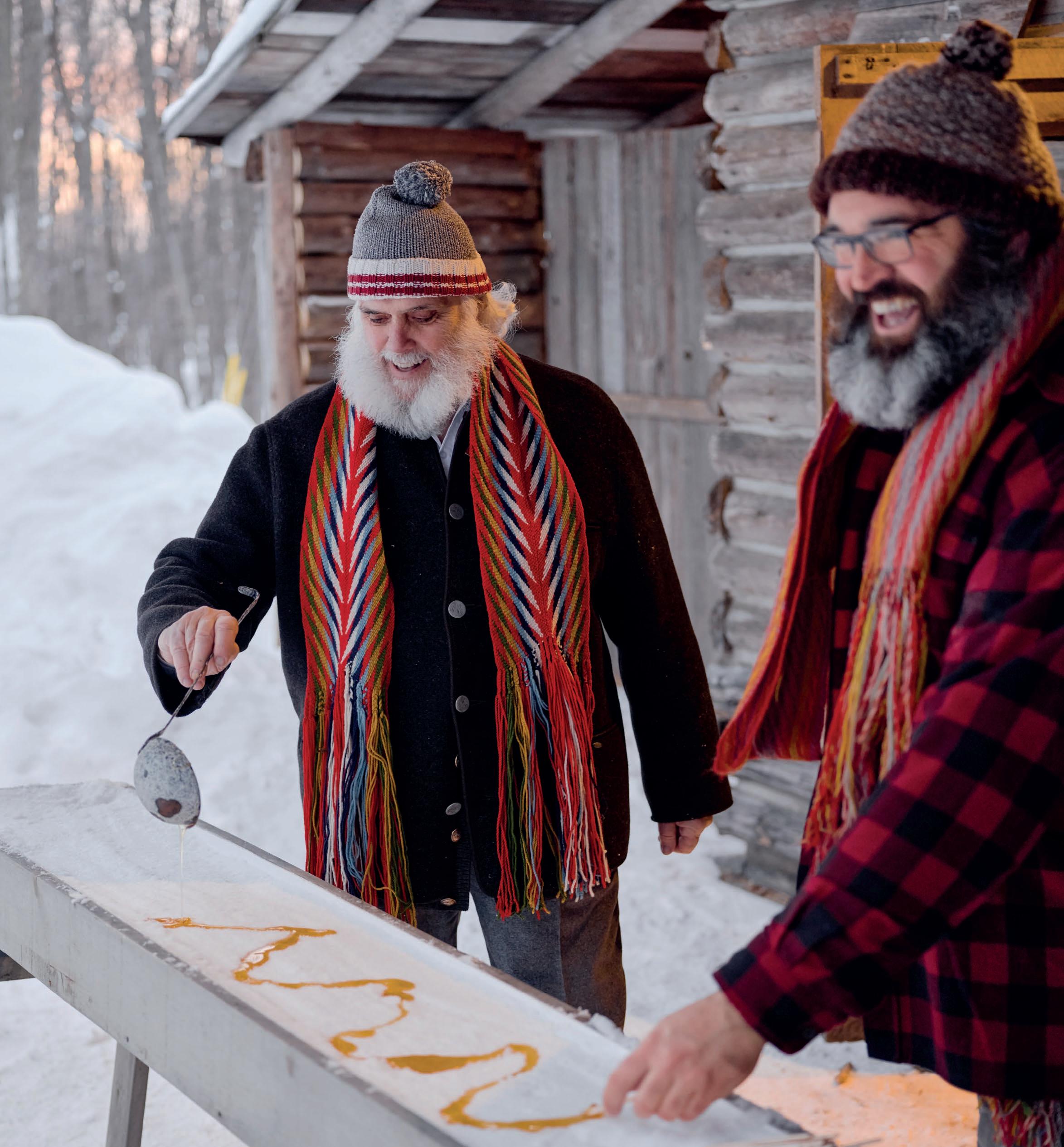
“Canada produces roughly 78% of the world’s 100% pure maple syrup, with 92% of that total coming out of Québec”
Visiting a sugar shack is an iconic experience. The Sucrerie de la Montagne in Québec, designated an official “Site du Patrimoine Québécois” (Québec Heritage site), is open year-round and offers tours, tastings and lunch accompanied by live music.
Each course on the menu features maple, whether it’s a hearty bowl of yellow pea soup flavoured with maple-glazed ham hock or maple-syrup covered tourtière (Québec’s famous meat pie).
A highlight of a sugar shack visit is maple taffy, where boiled maple syrup is poured into fresh snow and rolled into a lollipop.
Canada’s Thanksgiving day, a national holiday, falls on the second Monday of October and is all about celebrating the autumn harvest and offering thanks for the food it provides before winter sets in.
A “traditional” meal consists of roasted


turkey, yams or mashed potatoes, veggies, cranberry sauce, gravy and, of course, pumpkin pie. Several Canadian hotels, particularly those within the Fairmont Hotels & Resorts chain and Canadian Rocky Mountain Resorts, are known for their elaborate Thanksgiving spreads.
This comforting Western Canadian treat, which is more commonly known as pierogis, is often filled with mashed potatoes and cheese, pan-fried or boiled, then served with sour cream and bacon. There are also sweet options, including versions filled with tart Saskatoon berries. Canada has the second-largest Ukrainian diaspora and top restaurants and delis are found across the country – such as Kozak Ukrainian Restaurant in Vancouver, Borscht Kitchen in Toronto,
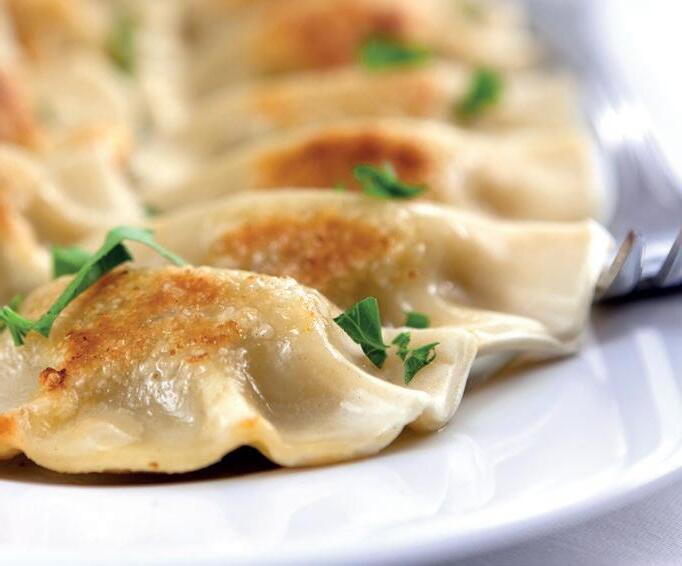

Perogie Lili in Montréal and Ukrainian Fine Foods in Calgary.
Drive two hours northeast of Edmonton to the tiny Alberta town of Glendon and you will find a giant 27-foot statue of a pierogi, complete with a fork. Built in 1993 it honours Eastern European immigrants and the cultural importance of the pierogi.
Canada is an excellent choice for vegetarians and vegans, particularly in the larger cities where plant-based dining options, festivals, and grocery store selections are abundant and a still-growing trend.
According to a study by Western Grocer, a Canadian trade magazine, Victoria, B.C., With an average of 17.85 vegan-friendly restaurants per 10,000 people, ranks as the “most plant-based city in Canada”.
Michelin Guide recommended vegetarian restaurants include The Acorn – try the tasting menu – and Bonjour Vietnam Bistro, both in Vancouver, and Gia, a popular Italian eatery in Toronto.
Even large chains like Boston Pizza and Earl’s Kitchen + Bar now provide plant-based sections on their menus
Government regulations stipulate that Canadian whisky (yep, no “e”) must be

produced from cereal grains in Canada, using a process of continuous distillation.
The rules state that Canadian whisky must be aged in small wood for at least three years. Canadian whiskies may be lightbodied in style, but they are shining bright on the international stage. For example, Okanagan Spirits, a family-run distillery in Vernon, B.C., swept the whisky categories at the 2025 World Spirits Awards in Germany.
There’s nothing more festive than strolling through a snow-dusted collection of street stalls all decked out with twinkly lights and filled with unique artisanal gifts and goods. Soak up a dollop of festive cheer at magical

markets and enchanting experiences, from the Banff Christmas Market in the Canadian Rockies to the Toronto Christmas Market in the city’s Distillery District.
Others offering a traditional Xmas vibe include the Vancouver Christmas Market, located along the waterfront, and the Québec City German Christmas Market, with its splash of Old-World charm.
With roasting chestnuts, grilled Bratwurst, carolers and a steaming cup of mulled wine in hand, you could be forgiven for thinking you were in Frankfurt of Cologne.
Specialist food in the Yukon includes a host of dishes and ingredients that make use



“Visit a farmers’ market to purchase Canadian takehome gifts such as jams, pickles, chutneys, vinegars, oils and more”
of local ingredients like wild game (such as moose and caribou, which is often found in stews or grilled), salmon, berries, and foraged plants, often prepared using traditional methods such as smoking or grilling.
And yes, Yukon Gold potatoes – Yukon Gold was the first Canadian-bred potato variety to be promoted and marketed with its name on the pack – make the creamiest mash imaginable. Find them in a variety of dishes, whether shredded, roasted or grilled. Just look out for their signature bright yellow skin
This is the age of the health-conscious nondrinker and Canadian restaurants, bars and pubs have pivoted accordingly.

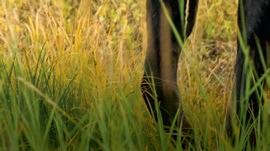
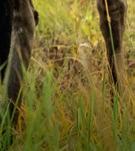

Enjoy drinks such as refreshing alcohol-free wine spritzers, botanical-forward alt-gins and tasty craft beers – and let the pros work their magic at top establishments like Bar Clementine in Edmonton, Simpl Things in Toronto and Nola in Winnipeg.•
























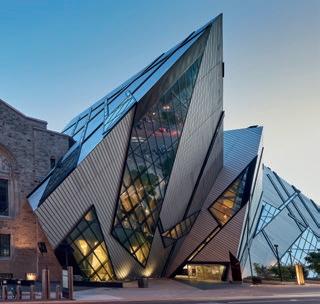




Canada has over 2,300 museums and galleries exhibiting everything from prehistoric dinosaurs to contemporary Canadian art. Don’t miss these...
Royal Ontario Museum, Toronto


Home to 18 million artworks, cultural objects and natural history specimens, the museum features 40 gallery and exhibition spaces. It also hosts workshops, tours, movie nights, talks and scavenger hunts. “Psychedelics” opens in June 2026, promising an immersive exhibition that “explores the importance of altered states of consciousness”. rom.on.ca





Montrèal Museum of Fine Arts

Artworks by Rembrandt, Picasso and Monet sit alongside those from Canadian artists. There’s around 47,000 paintings, multimedia installations, sculpture, prints, drawings, furniture and photographs to browse. The museum also runs batik workshops, sketching classes, film screenings and musical performances. mbam.qc.ca


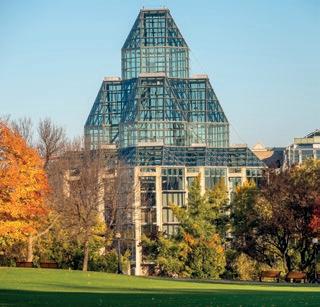



National Gallery of Canada, Ottawa


At this light-filled landmark site close to the ByWard Market area, visitors can peruse one of the finest collections of Indigenous and Canadian art in the world, as well as artworks from other artistic traditions. One of the gallery’s most beautiful spaces is the Michael and Sonja Koerner Family Atrium, which features a glass-bottomed pool and soaring skylights. gallery.ca









Tyrrell Museum, Drumheller

Royal BC Museum, Victoria






The prehistoric past comes to life in Alberta at Canada’s only museum dedicated to the study of ancient life. In addition to seeing one of the world’s largest dinosaur displays, kids will love a sleepover in the shadow of these creatures or enjoy hunting for real dinosaur fossils in the Alberta Badlands. tyrrellmuseum.com
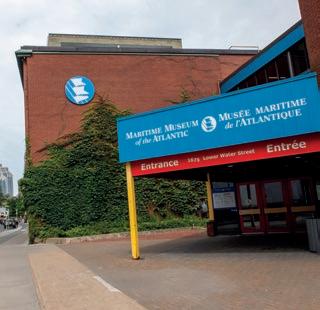


One of the oldest continually operating museums in Canada aims to broaden visitors’ understanding of British Columbia through collections, exhibits and talks. Over seven million objects include photographic, audio and video collections. See John Lennon’s Psychedelic Rolls-Royce and learn about the migration journeys that shaped Chinese- Canadian identities. royalbcmuseum.bc.ca

Maritime Museum of the Atlantic, Halifax

Hear the stories, events and people that have shaped Nova Scotia’s rich maritime heritage. Take a seat in a replica Titanic deck chair and visit the permanent exhibition, Ta’n me’j Tel-keknuo’ltiek: How Unique We Still Are, which reflects how Mi’kmaw people remain connected to the lands and waters. maritimemuseum.novascotia.ca


As its name suggests, the Infinite Coast offers up over 25,000km of shoreline with endless natural beauty and cultural attractions along the way
On British Columbia’s Infinite Coast, rugged mountains meet lush coastal rainforests and deserted sandy beaches.
Visitors can explore inlets, fjords, glaciers and islands, go bear spotting in the Great Bear Rainforest and discover the numerous rich Indigenous cultures.
The Infinite Coast follows British Columbia’s dramatic shoreline along the Pacific Ocean, encompassing Vancouver Island, the Gulf Islands, Great Bear Rainforest, the North Coast and Sunshine Coast.
Ocean, mountains and rainforest converge to offer visitors endless opportunities to experience moments of rugged beauty. A creative spirit thrives here, shaped by the Indigenous Peoples that call this place home.
50 First Nations steward the coastline, preserving deep-rooted culture and traditions that are woven into the landscape. Immerse yourself in cultural learning and ecotourism experiences to hear stories of art, creativity, food and sustainability that invite visitors to connect with the region on a deeper level.
At Hazleton’s ‘Ksan Historical Village and Museum, seven longhouses recreate a Gitxsan village that stood on the same riverbank for centuries. Each of the houses, set in a row facing the river, reveals a different aspect of Gitxsan culture, from feast traditions to tales of the distant past.
Explore the region by car on an iconic road trip or travel by ferry, foot, floatplane and boat. From the air visitors can witness breathtaking fjords, islets, glaciers and waterfalls.
By boat you’ll sail past quaint seaside communities, secluded beaches and intriguing islands, home to wildlife and life-affirming outdoor adventures.
In the convivial town of Tofino on Vancouver Island, surfers gather to catch some of the best waves in the region. Come autumn, go storm chasing and watch the huge swells and moody


skies put on a wild natural display. Inland, visitors can walk deserted mountain trails that lead to an unmatched wilderness, explore Old Growth Rainforests and marvel at the mighty Salmon Glacier, the fifth largest in Canada.


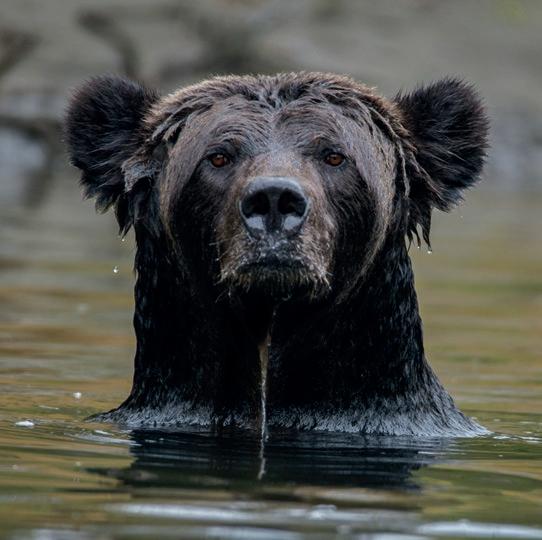
Wildlife is all around you on the Infinite Coast, no more so than in the Great Bear Rainforest. Forming one of the world’s largest intact forests and covering a vast 6.4 million hectares – an area larger than Ireland – visitors shouldn’t miss one of North America’s most untouched wildernesses.
The rainforest is home to grizzly bears, black bears, wolves and the elusive spirit bear – a rare, white-coated subspecies that’s sacred to British Columbia’s Indigenous Peoples.

Discover the numerous waterways, forests, waterfalls and hot springs that are all managed by local First Nations. Northern BC Jetboat Tours offers charter-based tours of the area where it’s not uncommon to spot bears and
whales along the way. Getting there is all part of the journey.
Begin in Campbell River or Port Hardy on the northern tip of Vancouver Island, then cross to the mainland via ferry or floatplane. From there, small-ship cruises and eco lodges offer immersive ways to explore. Look out for sea lions and eagles on a kayaking adventure.
In the bays and inlets, don’t be surprised if you see migratory humpback whales breaching in the bays and orcas swimming in the crystal-clear waters.
Lodges like Tweedsmuir Park Lodge offer low-impact ways to observe bears from dedicated platforms – best seen in spring.


Each spring, around 20,000 grey whales migrate along the Infinite Coast. Prince Rupert, Bella Bella, Bella Coola and Vancouver Island offer guided tours that provide a safe way to witness the journey while supporting local marine research and stewardship efforts.
From Victoria to Prince Rupert, British Columbia’s coastline affords visitors a glimpse of untouched nature and unique landscapes framed by the mighty Pacific Ocean.
Along its craggy coastline you’ll find thriving coastal communities and a vibrant arts scene. Across the region, artists and changemakers take inspiration from the coastal contrasts, crafting stories and experiences that reflect both



In the artsy Southern Gulf Islands, visitors are encouraged to go in search of quiet leisure. Cowichan Bay is the first Cittaslow-designated “slow community” in North America. The charming seaside village is home to foodies, galleries, boating enthusiasts, artisans and a bohemian local community.
Similarly, Chemainus, the Sunshine Coast, Prince Rupert, Terrace and Bella Coola showcase experiences inspired by place. Chemainus, for example is famed for its murals, holds gallery shows and rotating public art displays. While annual events like the Sunshine Coast Art Crawl and Skeena Salmon Arts Festival are lively local events that are worth seeking out.
Further north, seek out the remote oceanfront hot springs, only accessible only by boat from Bella Coola or Kitimat – a must-do experience. From Campbell River, wildlife tours offer visitors a glimpse of elusive bears and whales in their natural habitat.




ancient traditions and modern transformation.
Take an iconic train ride through spectacular landscapes of canyons and never-ending valleys on the VIA Rail from Prince Rupert along the Skeena River Valley.
British Columbia’s Indigenous Peoples impart their cultural and ecological knowledge of the region – at stops like Kitselas Canyon, the Ts’msyen share stories about the river’s role in trade, migration and everyday life.
•
The Valleys and Vineyards region’s abundant sunshine cultivates fertile lands which dazzle with natural beauty, rich culture and exceptional cuisine
In British Columbia’s southern interior, wine country meets wilderness. Glaciercarved lakes shimmer below sunny slopes, while Canada’s only ‘pocket desert’ leads to fertile valleys.
Cross the Coast Mountains eastward from Vancouver and watch the landscape change dramatically. Coastal rainforest falls away; something altogether unexpected emerges.
Here, volcanic soils nurture world-class vineyards; fat grapes ripening in a climate that records over 2,000 hours of annual sunshine.
The Indigenous people of the Syilx Okanagan Nation tend to the land, bringing millennia of tradition to their toil: every glass, every plate, every sun-baked path whispers of its history.
A date with adventure
Begin in British Columbia’s most celebrated valleys, Okanagan and Similkameen, a glorious contrast of fertile orchards, burnished scrubland and expansive sapphire lakes.
It’s the perfect playground for adventure, from an idle cycle down the scenic Kettle Valley Rail Trail, to paddleboarding the serene lakes of Osoyoos and Okanagan as the sun rises, to exploring the peculiarly alien, yet beautiful, desert landscape of Oliver, the winemaking capital of Canada.
Or hike one of the region’s myriad trails: from gentle lake loops to voyages through alpine forests, valley-view ridges near Knox Mountain.
In early autumn, Hardy Falls in the South Okanagan witnesses the return of spawning kokanee salmon, transforming the valley’s streams into ribbons of brilliant red, a natural spectacle which draws nature lovers and photographers alike.
Feast on regional food and drink
Gourmands will find themselves spoiled in Valleys and Vineyards. Over 200 wineries craft award-winning vintages, as the region’s terroir — the alchemical marriage of soil, climate, and topography — lends each wine a distinctive depth. Progressive producers are increasingly








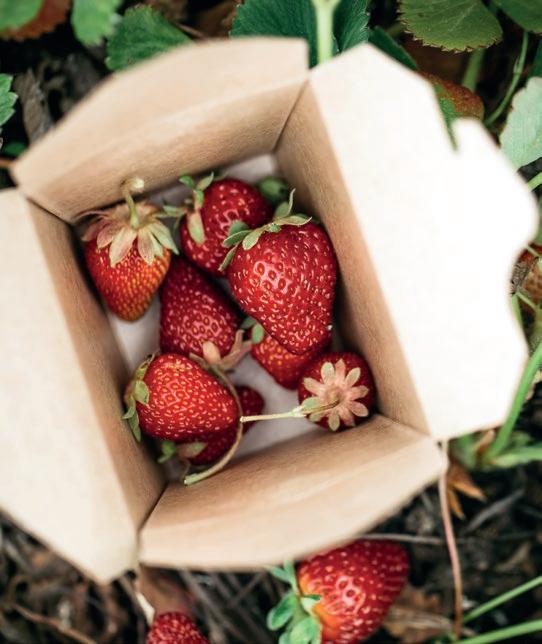
embracing sustainable methods.Beyond wine, the land yields abundant harvests. Orchards sag under the weight of cherries, peaches, apricots, and apples.
Taste the bounty of the land through fruit and nut picking experiences at local orchards, where produce ripens under the sun’s warmth. The region’s thriving honey farms celebrate native pollinators, offering tastings that showcase how bees transform the flora into liquid gold.
An exciting new culinary movement is emerging, too, as innovative chefs merge South Asian flavours with Okanagan tradition to create fusion dishes (turmeric-spiced halibut paired with cool-climate whites, tandoori techniques applied to local lamb) that marry heritage with local bounty.
From the warmth of family-run dhaba-style kitchens to fine dining on patios overlooking vineyard rows, the area offers both impeccable produce and elevated cuisine.


But this isn’t merely a destination for wine and cuisine. It’s a place where culture breathes
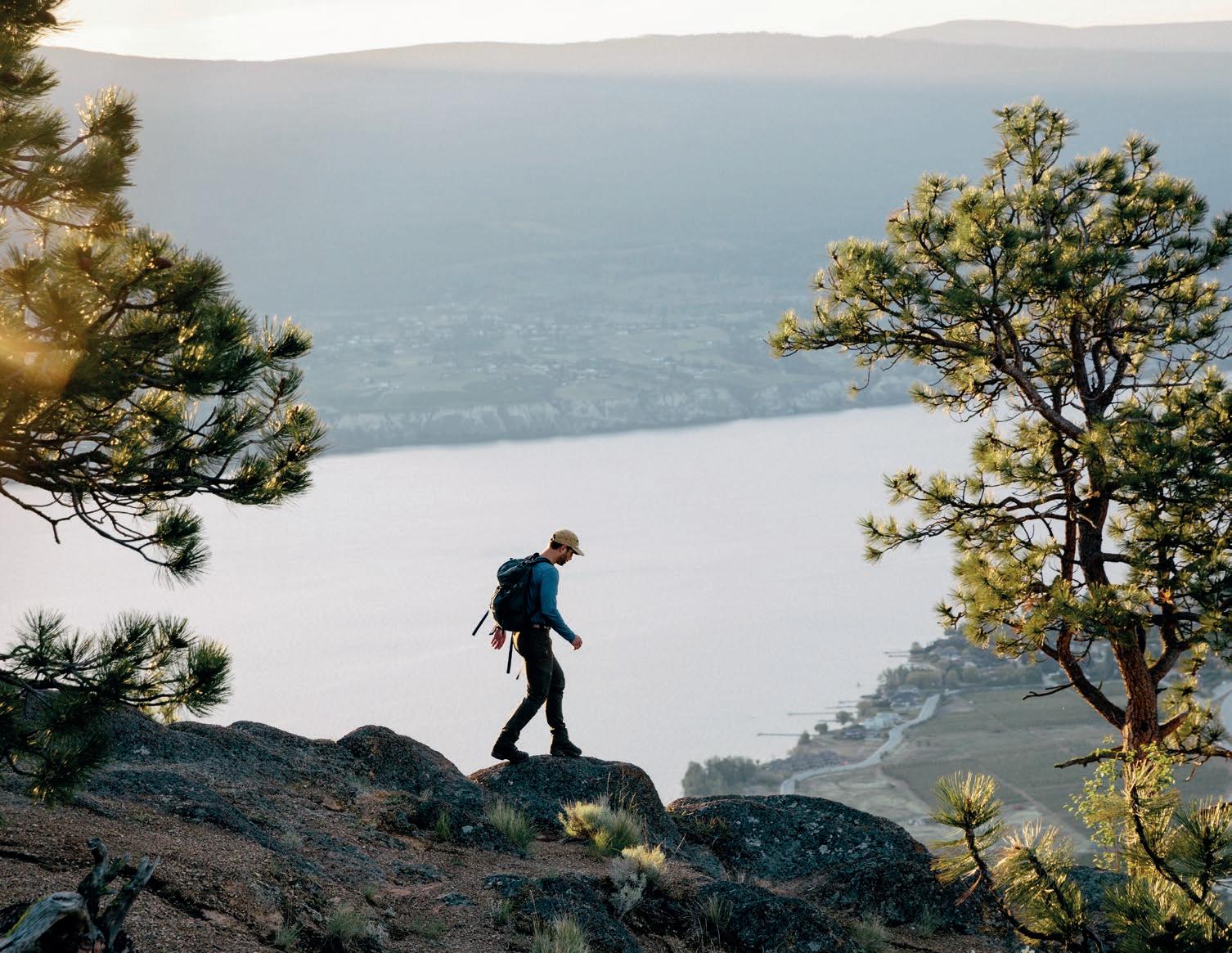
as vividly as the land itself, thanks to the stewardship of its Indigenous people.
The knowledge of the Syilx Okanagan Nation is vibrant and living. First Nations stories are woven into every element – from N’ha-a-itk, the legendary spirit dwelling in the depths of Lake Okanagan, to the lifegiving waters that sustain communities.
The region honours Indigenous leadership through initiatives such as the Seven Generations Pledge, a promise to care for today with tomorrow in mind.
Connect with cultural experiences led by Syilx guides who share traditional teachings about the land’s gifts, the stories of creation, and the delicate balance that has protected this place for thousands of years.
Visit the Nk’Mip Desert Cultural Centre in Osoyoos, where the pocket desert’s ecosystem is explained through Indigenous eyes, revealing not just what grows here, but why it matters, how it endures, and what it asks of those who walk upon it.
The Kettle Valley Rail Trail is one of Canada’s most rewarding cycling experiences.
Originally built to connect remote mining communities in the early 1900s, this historic railway route now winds through tunnels carved into mountainsides and across wooden bridges suspended high above dramatic gorges.
The crown jewel is the Myra Canyon

section near Kelowna, where cyclists traverse 18 trestle bridges and two tunnels, drinking in panoramic views of Okanagan Lake glistening far below.
Suitable for all levels, the trail transforms with each season.
Wellness here isn’t confined to treatment rooms but spills into the landscape itself.
At Sparkling Hill Resort near Vernon, European-inspired rituals harness the shock and restoration of contrast therapy – fire
With the shifting seasons, every visit will feel like a new discovery.
Arrive in spring (April–June), and you’ll find orchards erupting in blossom, the valleys awash in pink and white blooms that promise summer’s harvest.
In the summer months (July–August), the region transforms into a sun-soaked paradise of beach days, paddleboarding on crystalline lakes, and long evenings on vineyard patios.
But locals know that autumn (September–October) holds a particular magic: harvest time, when the valleys glow amber, the grapes are crushed and the air carries the sweet perfume of fermenting fruit.
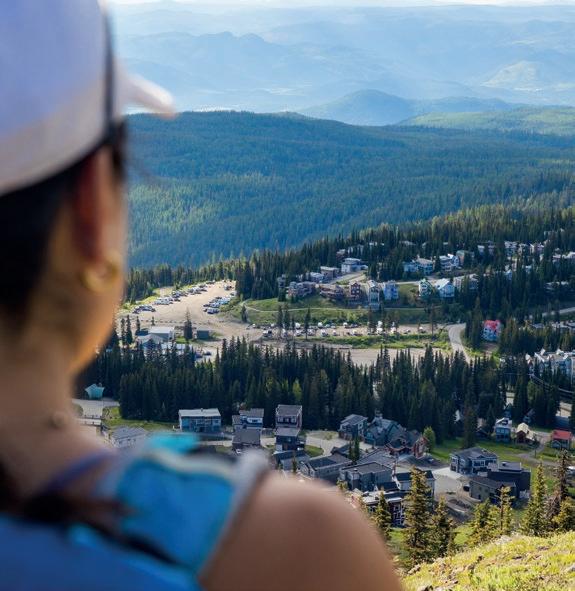





and ice, heat and cold, the body jolted awake, then soothed into surrender.
In Osoyoos, desert spa experiences draw on the pocket desert’s unique energy, blending Indigenous practices with contemporary treatments for a restorative experience. Or try gentle yoga overlooking the vineyards, meditation in wildflower meadows, or therapeutic massage with botanical oils pressed from local plants.
The practitioners here understand that true restoration comes not from escape, but from connection. •
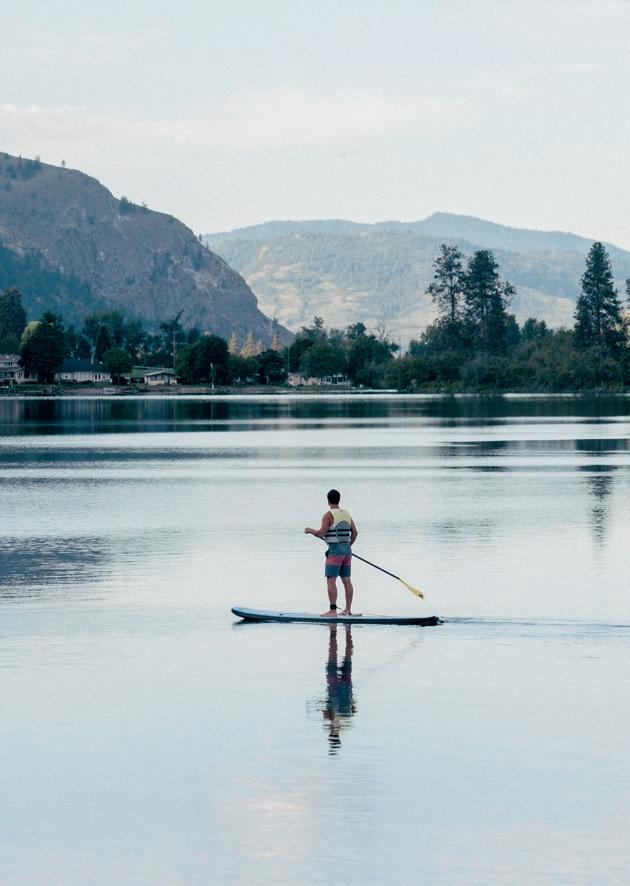








Whether dark skies and northern lights gazing, wildlife viewing, wilderness lodges or art retreats, Indigenous owned and operated experiences are on offer across Canada, says Clare Dodd

Opening the doors, Liz Davidson proudly welcomes us to the sacred heart of the village, a building her father constructed by hand.
“When you enter a big house, you always head to the right,” she says. “I think it stems from the rotation of the earth.”
Dimly lit, dappled light streams from gaps in the roof above a fire pit. The floor is earth and sand. The air is sweet with the smell of cedar. Two giant ancient trees have been used to create richly carved poles that hold up a sort of stage. A bank of built-in benches run round every edge of the room and painted masks and blankets sewn with hundreds of buttons hang on the walls. From bears to ravens, there are eyes everywhere.
I’m on the west coast of Canada, and like many other tourists I am hoping to spot bears. And at Knight Inlet Lodge – a floating wilderness lodge located deep in a fjord 150 miles northwest of Vancouver – my days have been centred around them.
Each morning, I get into a small boat and cruise the coastline. It doesn’t take long to spot a female Grizzly and her two cubs.
Many other sightings follow as we bob a suitable distance away, silently watching on, exploring deeper into the inlet on other boats, forest hikes, or viewing platforms.
Bought by a partnership of the Da’nada xw A’wa’ettala, Mamalilikulla, Tlowitsis, Wei Wai Kum and Kómoks Nations in 2017, Knight Inlet is fully Indigenous owned. Members of the Da’nada xw A’wa’ettala community share culture with nightly presentations and storytelling, as well as leading tours.
Today, sporadically escorted by orcas, dolphins, rafts of otters, sea lions, and even humpbacks, we’ve sailed to the end of the inlet to the Pacific Ocean. Clouds drift down the forested hillside like cobwebbed fingers as we dock at Tsatsisnukwomi, a tiny village of just 10 residents and a cluster of houses. Towering totems, one topped by a mythic thunderbird, stand in the corners of the windowless big house. Paintings of men and women look out over the ocean.
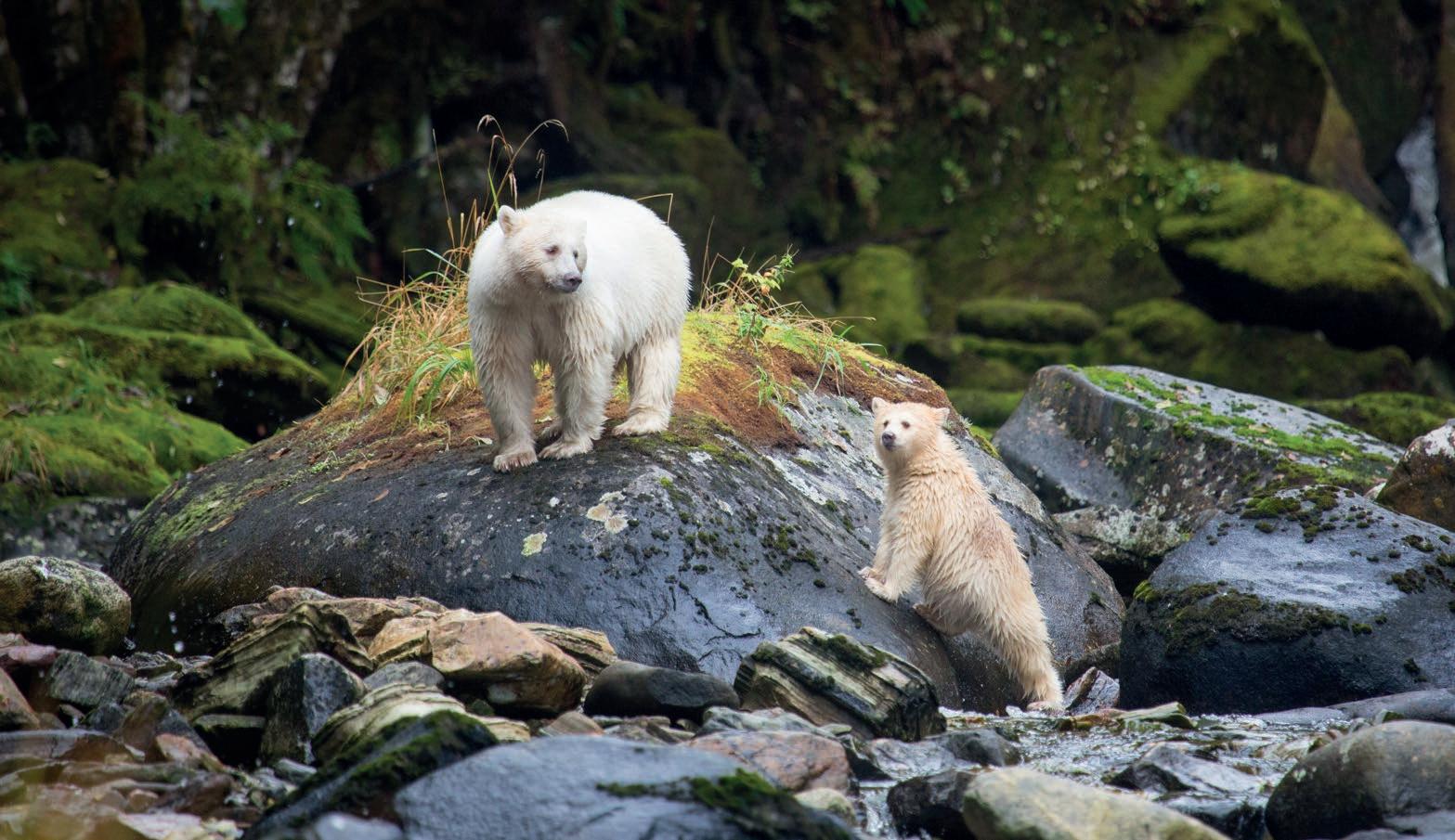
The atmosphere feels charged with meaning; a vibrant but quiet energy. Here, on the remote coast of British Columbia, this village is practising and passing on a culture that has survived millennia.
Over the next hour Liz runs us through stories from the community and the meaning of dance carved masks.
“We’re very theatrical,” she says.
“At a potlach [a ceremonial feast or assembly] the fire burns for the duration,” Liz explains. “Then, for the first ceremony, you bring in your ancestors. You bring in anybody that has passed. You’ll call them by name, open the front doors and they come in.
“If you show up in a community that’s holding a potlatch, you can walk in. People are never turned away, even if you’re not First Nations...everybody is welcome.”
From northern lights viewing, whale and bear watching, wilderness lodges, medicine walks, fishing lodges, art retreats and far, far more, the breadth Indigenous owned and operated
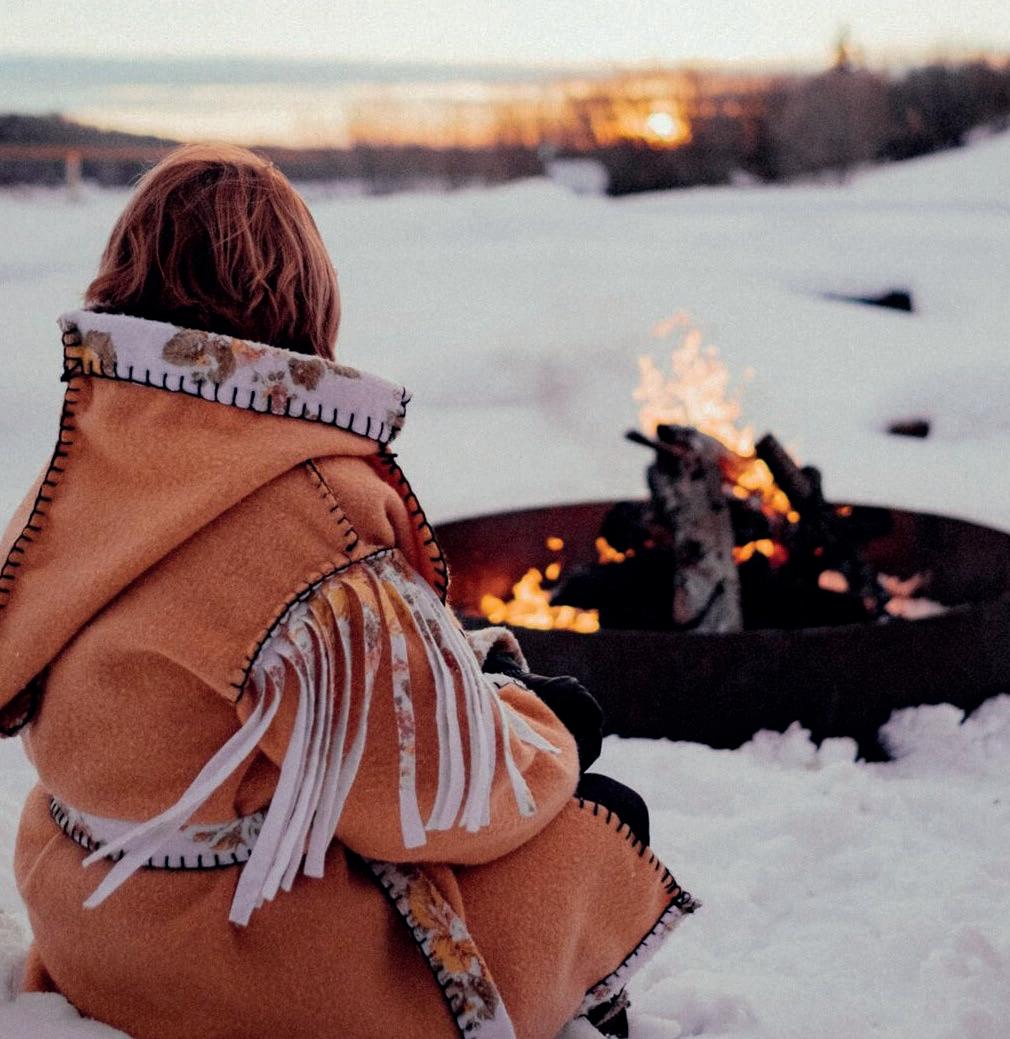
experiences on offer across the breadth of Canada is large, and getting bigger.
Work by the Indigenous Tourism Association of Canada (ITAC) to support both emerging and established businesses has seen the creation of the Original Original Accreditation. A benchmark of quality, to date 262 businesses have been accredited for providing authentic and quality experiences for visitors. It’s a useful resource for agents. And with over 451 applications received, many more will be added in time.
“At First Class, we look for connections with the environments in which our guests are travelling,” says Keir Ashley, Destination Manager at First Class Travel Group, adding that sustainability is becoming more important for guests, something which is a key focus of many Indigenous businesses.
“Bear viewing lodges such as Spirit Bear Lodge and Klahoose Wilderness Resort (both in B.C.) that have a strong connection to indigenous lands are a good seller for us.”
Jayne White, Product Manager at Premier Holidays agrees. “The experiences that truly stand out are those that blend Indigenous tourism with wildlife encounters,” she adds, noting that cultural experiences are now coming to the fore.
“I’m inspired by the growing presence of Indigenous experiences. I met Keith Diakiw, from Talking Rock Tours. He blends earth sciences with Indigenous storytelling in a way that’s both educational and deeply moving. His passion was infectious.”
For agents, it’s key to know the breadth of experiences on offer, and that you can find them in every province and territory.
Anneka Desrosiers, Co-Director & Tailormade Travel Consultant at Southern Cross
Travel, and an Elite Canada Specialist says: “Some clients are keen on Indigenous experiences, whereas others don’t consider it unless I highlight the experiences available.
“Interest has increased over the last few years. I think more than ever travellers are looking for an enriched holiday experience when visiting Canada now.
“My own favourite experience was being taken out on to Shuswap Lake (near Kelowna, B.C.) and having an elder sing and drum to us – it felt so special, so unique.”
Chris Roberts from Travel Counsellors agrees. “More of my clients are asking about immersive experiences.
“On one of my most memorabe trips I learnt all about life on the plains and the importance of bison to First Nations people in Saskatchewan,” he recalls. •
More than just a boutique hotel, Skwachàys Lodge in Vancouver is also a gallery and residence for Indigenous artists. Enter through the gallery which sells jewellery, paintings, textiles and more. Each hotel room features works from Indigenous artists and the profits enable Indigenous artists, actors and musicians to live and work here.
Opened in 2022 with a 40-room boutique lodge overlooking the North Saskatchewan River, Alberta’s Métis Crossing has since added luxury Sky Watching Domes. Ideal for star-gazing and northern lights viewing, guests can learn how the Métis people used the stars and sky to navigate, and how the sky was used as an essential clock


and calendar for farming and hunting. The site also includes a campground, heritage species wildlife park and the Cultural Gathering Centre.
Located just outside of Québec City, the Wendat Nation (Tourisme Wendake) is home to a hotel, restaurant, and illuminated forest walk. The Hôtel-Musée Premières Nations, which includes the Huron-Wendat Museum and Ekionkiestha longhouse, has new forest inspired rooms.
Nearby, the Onhwa’ Lumina is a 1.2km immersive multimedia forest walk that tells the story of the Wendat nation through light, sound and video projections.
Sub Arctic Tours is an Inuit-owned company that runs small-group tours and wildlife spotting in the polar bear capital of the world, Churchill, Manitoba. Guests also seek beluga whales, arctic foxes, caribou, seals, arctic hares and snowy owls.
Pêmiska Tourism in Saskatchewan offers ATV rides with a difference: guests ride through the scenic terrain of Beardy’s and Okemasis’ Cree Nation, with guides, stopping at landmarks and historical sites. On the site are winter camping and glamping-style lodges.
Mahikan Trails in Alberta has expanded
its seasonal offerings. Known for its medicine walks in Canmore, Banff or Sundre, where guests learn about the Indigenous use of plants, the company now offers a Warmth of Winter tour, with a two-night cabin stay, snowshoeing and guided walks with traditional cooking experiences and teas from local plants. Its Sense of Snow tour focuses on winter medicine, with boreal forest walks.
Aurora Village in Yellowknife, Northwest Territories, says guests who stay for three or four nights have a 98% change of seeing the northern lights. Indigenous-owned Aurora Village keeps you warm in a Teepee until the lights come out, and has heated outdoor seating, guides and a restaurant.
The Nibiischii Corporation has new winter activities. At its cabins at Waconichi Lake in Northern Québec, guests can snowshoe, follow ski trails, stargaze, warmup in the sauna and take part in cultural activities such as moose-hide tanning. Mamattuk opened in 2025 to offer an immersive dining experience that celebrates the land, people and culture of Labrador. Partnering with local artists and craftspeople, the focus is on seasonal and locally-sourced food.
Whether it’s feasting al fresco beside a lake or checking out MICHELIN approved dining in the city, Ontario’s diverse foodie offering has it covered
Ontario isn’t just Canada’s cultural hub it’s also one of North America’s most exciting and diverse culinary destinations.
From creative, cutting-edge city cuisine to farm-fresh feasts enjoyed beside tranquil lakes, this eastern province serves up a rich blend of sophistication, innovation and unmistakable Canadian warmth.
Here are just some of the wonderful places to visit that your taste buds will never forget.
The MICHELIN Guide shines a spotlight on world-class chefs redefining Canadian cuisine, from sleek downtown tasting rooms to creative neighbourhood bistros inspired by Toronto’s multicultural roots.
Highlights range from Sammarco’s Nova Scotia lobster, finished with vermouth and tarragon butter, to the rich Punjabi goat shank at Bar Goa – proof that there’s something to satisfy every foodie’s whim.
To the east, the nation’s capital, Ottawa, blends politics with palate-pleasing perfection. Join C’est Bon food tours to sample artisanal treats from the lively ByWard Market, where local and international flavours mingle.
Just an hour’s drive west of Toronto, in Waterloo, you will find St. Jacob’s Farmers Market, Canada’s largest year-round market.
Across three bustling buildings and an openair market, hundreds of local vendors offer farm-fresh produce, artisanal foods, maple syrup and handmade treasures.
Beyond the city lights, Ontario’s rural regions celebrate home-grown flavour and community spirit. In Prince Edward County, the farm-totable movement thrives; boutique wineries and rustic kitchens serve seasonal menus shaped by local farmers and producers.
Follow the Apple Pie Trail in the Blue


Mountains for a sweet odyssey through orchards, bakeries, and cideries.
This self-guided route pairs breathtaking views of the Blue Mountains, Meaford and Beaver Valley with bites to remember.
A celebration of all things apple, the trail explores orchards, bakeries and artisan shops, sampling everything from oven-warm apple pies to crisp local ciders.

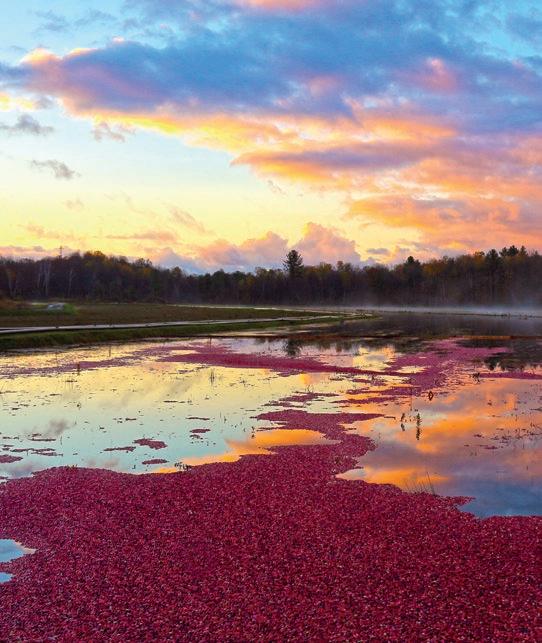

Niagara-on-the-Lake pairs culinary craftsmanship with world-famous vintages. Visitors can tour elegant wineries such as Inniskillin or Peller Estates, tasting Ontario’s signature icewine among the vines before settling in for vineyard-to-table dining overlooking the rolling countryside.

Further north, Muskoka, Ontario’s beloved ‘cottage country,’ serves up lakeside dining at favourites like Crossroads in Rosseau, 3 Guys and a Stove, and Tall Trees. Pair your meal with a cranberry wine tasting at Muskoka Lakes Farm and Winery, or sip a craft pint from Sawdust City, Lake of Bays, or the delightfully offbeat Muskoka Beer Spa. •

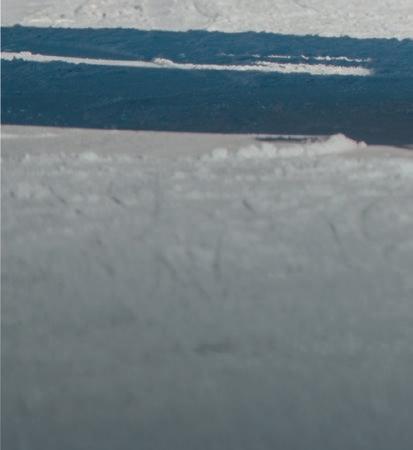

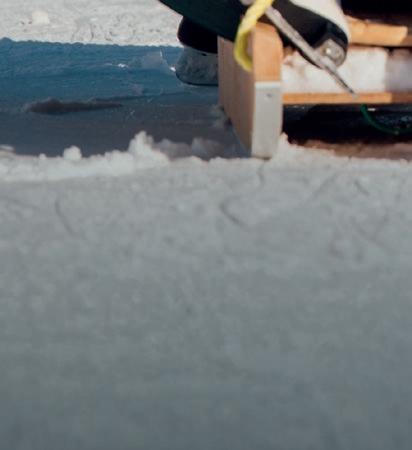

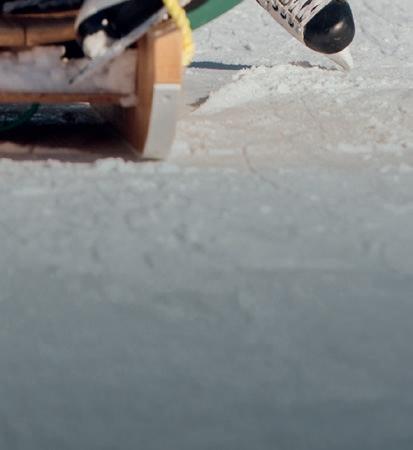
Manitoba’s capital has a host of attractions that add up to an experience-packed city stay, says Steve Hartridge

This multi-use retail, cultural and historical development – so named because it is located where the Assiniboine River flows into the Red – is a modern-day ‘gathering place’, in keeping with its rich history. It was here that Indigenous peoples traded and where Scottish settlers, railway pioneers and thousands of immigrants arrived in the city. Highlights include an indoor marketplace, with quality gift shops and food outlets. Take a walk back through its green spaces that connect The Forks to the city centre. On the way you will pass the Children’s Museum and Canadian Museum of Human Rights. theforks.com
Located at The Forks, this small centre offers education and a balanced understanding of the various land treaties between the First Nations and the Crown. Exhibits and archival tools plot the history of

First Nations people in Manitoba, their laws and customs. One of its key messages is: “We Are All Treaty People” in the hope it will help Canadians increase their understanding and appreciation of Treaties and their shared responsibilities as “Treaty partners”. indigenoustourismmanitoba.ca
CANADIAN
RIGHTS Spread out over eight floors the museum shines a light on the struggle for equality and civil liberties. Take a guided tour – billed as a “Journey from Darkness into Light” – to hear the stories of those who were determined to overcome prejudice and discrimination or attempts to obliterate their cultures, political views or sexual preferences. Winnipeg is an appropriate choice for a museum dedicated to human rights: Manitoba was the first province to pass both an Indigenous Bill of Rights and grant women the vote. humanrights.ca

Manitoba is the “home” of polar bear watching in Canada, but you don’t have to fly up to the southern edge of the Arctic to see the beasts as the zoo’s Journey to Churchill exhibit has polar bears, Arctic fox, muskoxen, wolves and other northern species. But it is the rescued bears – orphaned or vulnerable cubs – who are the stars of the show as they swim in huge overhead tanks. assiniboinepark.ca
Located downtown are several blocks of characterful turn-of-the 20th century buildings that once formed the commercial heart of the city. Today, these well-preserved heritage buildings are home to some of the city’s coolest art galleries, brew pubs, cafes, restaurants and one-of-a-kind boutique shops that on a Friday or Saturday evening transform this just-off-downtown area. exchangedistrict.org





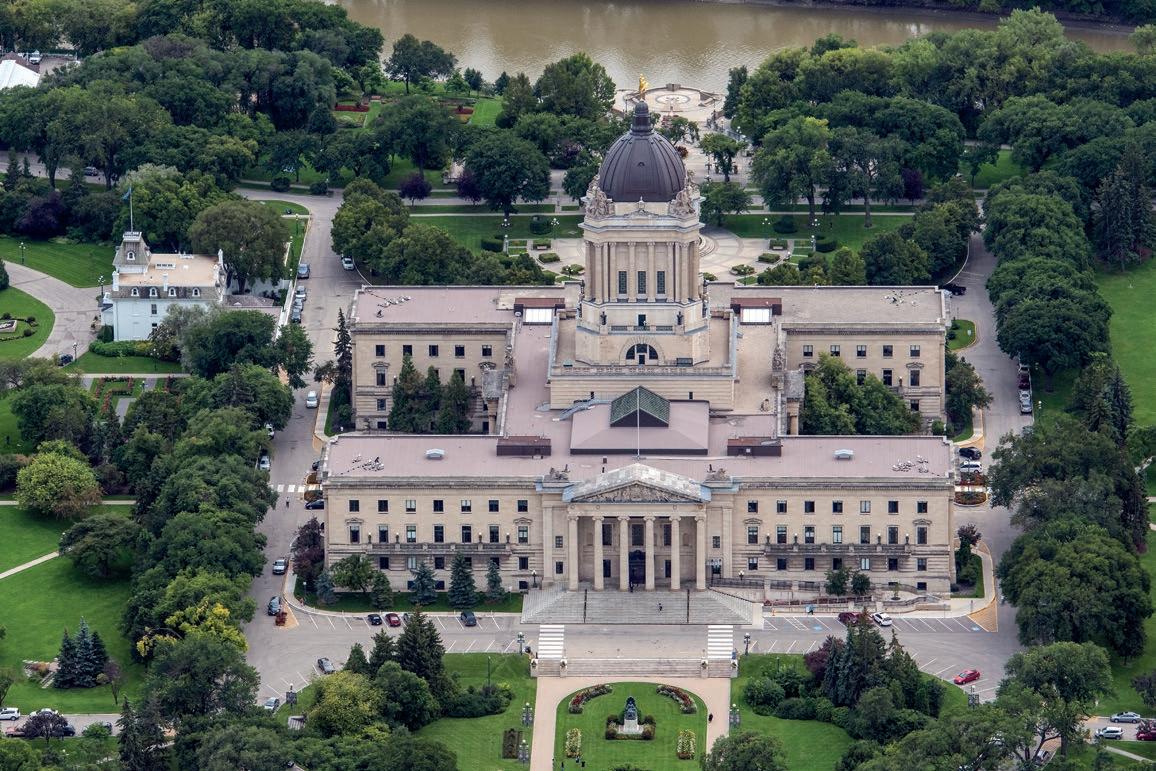

As a world leader in circulation coin design, the Royal Canadian Mint is always on the money. Established in 1976 as a hightech, high-volume manufacturing facility, every single Canadian coin in circulation is minted here – which adds up to billions each year. Visitors can sign up for an informative guided tour to discover the complexities and wonders of how the coins roll off the press. mint.ca
Located at Winnipeg’s international airport, this eclectic collection of more than 90 aircraft includes a replica of a Lockheed Model 10 Electra, the aircraft Amelia Earhart was flying in 1937 when she disappeared over the Pacific Ocean while attempting to complete a round-the-world flight, and a Stinson SR-8CM, CF-AZV, which flew supplies to Canada’s remotest outposts. You can also
climb aboard a 1970s Air Canada Vickers
Viscount passenger plane. There’s also an example of an early helicopter prototype, whose creators knew they were onto something but didn’t live long enough to see it, quite literally, get off the ground.
royalaviationmuseum.com
See vehicles, weapons, uniforms, handcuffs, police medals and other crimebusting artefacts, and hear stories about notorious criminals and much more in a facility that charts the history of the city’s police force, which dates to 1874.
The largest item on display is a 1925 REO Police Patrol Wagon, used to convey prisoners. There is also a 1978 Harley Davidson motorcycle, complete with sidecar, a hovercraft briefly used for water rescues, and a display in honour of those who laid down their lives in the line of duty. winnipegpolicemuseum.ca
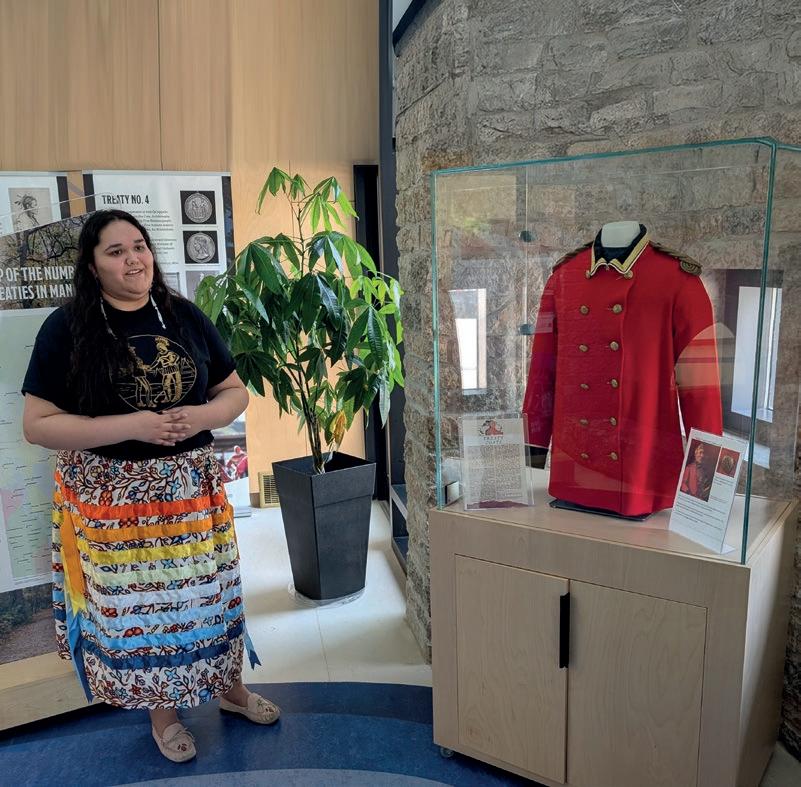

Stroll the Westaway River Trail, a six-kilometre path that spans the Red and Assiniboine Rivers that is popular year-round for strolling and cycling. The trail once held the Guinness World Record for the longest naturally frozen skating trail in the world.
On a typical winter’s day, it attracts up to 50,000 skaters and cross-country skiers.
Take a self-guided or group tour of the regal Legislative Building to see sculptures, pink marble floors, a grand stairway and the pure-gold Golden Boy statue. It is a building steeped in mystery, with claims of hidden hieroglyphic inscriptions, numerological codes and Freemasonic symbols in the carvings and statues – which is why the Hermetic Code tour is the most popular way to see the building. In December the Capitol is festooned with Christmas lights. gov.mb.ca •
With its powder-rich ski hills, Christmas markets, street parades and festive events, the Rocky Mountains region offers plenty of cold comforts
Winter is a wonderful time to visit Canada’s Rocky Mountains region.
Whether you’re sloping off to its ski resorts for downhill thrills and apresski fun or simply want to savour snowy days and frosty nights in stunning surroundings, there’s plenty to do in the region’s mountain villages and towns.
Lively Banff lies within Banff National Park in Alberta, its three nearby resorts known collectively as SkiBig3. Together, Banff Sunshine, Lake Louise Ski Resort and Mt. Norquay have almost 7,750 acres of skiable terrain, accessible with a single lift ticket The ski season can run November-May.
Mountain town Jasper has Marmot Basin on its doorstep, while the family-friendly Nakiska Ski Area is Calgary’s closest mountain resort.
British Columbia’s resorts include Fernie, Kicking Horse, Revelstoke and Sun Peaks.
Away from the ski hills, other winter activities on offer include snowshoeing, cross-country skiing, ice climbing, cat-skiing, heli-skiing, snowmobiling, tobogganing and snow tubing.

Holiday Market, Alberta’s longest-running all-indigenous market, runs over three days each November at the Alberta Aviation Museum, with stalls and entertainment.
Rockies gateway Calgary weighs in with a Christmas market as part of Once Upon a Christmas, an eight-day event in December at Heritage Park, with wagon rides, Santa visits and entertainment.

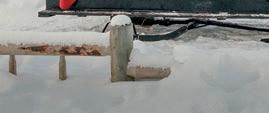



Christmas markets add festive charm to the Rockies. Banff Christmas Market runs for 13 days over four weekends in November and December at the Banff Heritage Railway Station. It kicks off with Twinkle Night, featuring live music, an outdoor fire lounge and shopping under tens of thousands of Christmas lights. Santa’s House and Workshop is a treat for young ones.
Edmonton Christmas Market in Fort Edmonton Park runs over 12 weekend days, starting in late November.
Also in Edmonton, A Very Indigenous

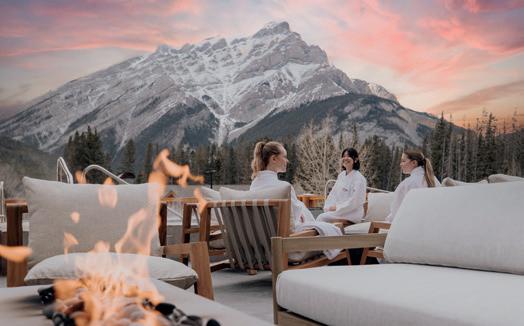
The all-action SnowDays Festival (from mid-January to early February) sees the streets of Banff transformed into a winter wonderland of giant snow sculptures, while spectacular ice sculptures adorn Lake Louise. Galloping horses pull skiers and snowboarders along Banff Avenue in thrilling skijoring races and stunts, while SnowNights features dining and events after dark. For kids, there’s a dedicated area with activities like ice slides, sledding hills and a Play Zone.
Edmonton’s Silver Skate Festival is a free 10-day, family-focused event each February on the banks of the Northern Saskatchewan River that offers skating and snowshoe races, snow and fire sculptures and a heritage village. •
A land of snow-capped peaks, exceptional ski resorts, and memorable accommodation. With first-hand local knowledge, Ski Independence will tailor-make your client’s perfect Alberta adventure. We feature 3 amazing resorts, each offering a unique experience, from the vibrancy of Banff and tranquillity of Lake Louise, to the rugged escapism of Jasper.
Superb Early Booking Savings when booked by 30 November.



The night sky in Alberta is home to five designated Dark Sky Preserves – including two of the largest in the world. Here’s how to sell them
With five dark sky preserves with zero light pollution, stargazers in Alberta will witness something many others never will – seeing the stars with the naked eye.
One of these, Jasper National Park, is home to the Jasper Planetarium Experience, which transports visitors to the edge of the universe inside the dome theatre.
Then add on a Telescope Experience or enjoy a Stargazer’s Lakeside Dinner at Pyramid Lake Resort. Some of the best places to stargaze in the park include Medicine Lake, Pyramid Lake, Maligne Lake and Lake Annette.
Waterton Lakes National Park, another Dark Sky Preserve in the southwest corner of the province, is the only place you’ll find a UNESCO World Heritage Site, International Peace Park, Dark Sky Park and Biosphere Reserve rolled into one destination.
Some of the best places to spot constellations include the Red Rock Parkway and Cameron Bay. Learn from an expert with a Dark Sky Guides tour and try out telescopes, binoculars and stargazing equipment for the best view.
At Métis Crossing Dark Sky Preserve, explore how the Indigenous Métis used the stars and sky to navigate, how the sky was used as a clock and a calendar and how it provided critical instructions for understanding when to plant, hunt and

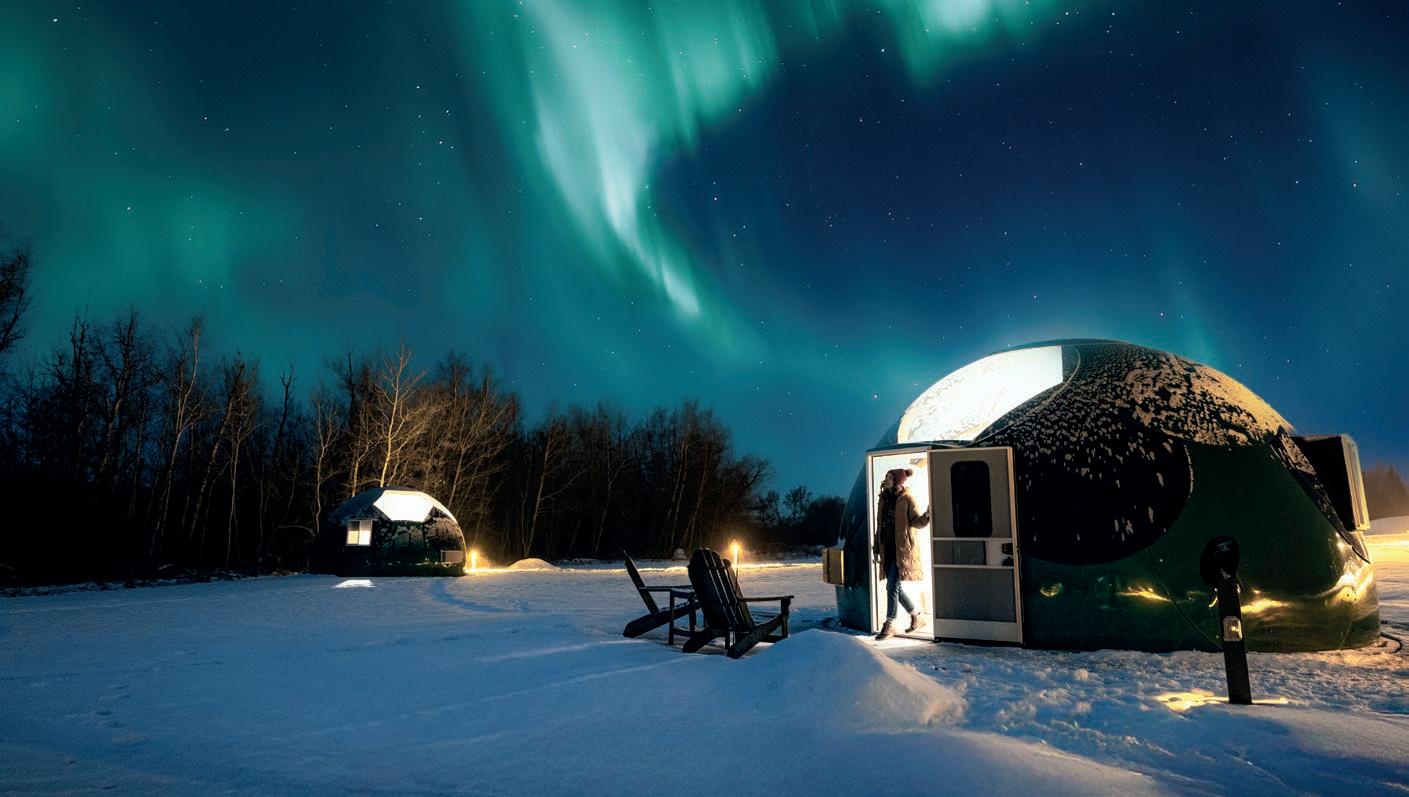
work the land. To elevate the experience, a Legendary Night Sky Package ican be booked, while onsite accommodation options include sleeping under the stars at a luxury Sky Watching Dome.
The long, dark nights from October to March offer the best chance to see the northern lights. Advise clients to monitor weather and geomagnetic conditions through an app, such as My Aurora Forecast, SpaceWeatherLive and hello aurora.
Home to the second-largest Dark Sky Preserve in the world, Jasper celebrates all things dark sky, especially during the annual Dark Sky Festival in October, making it an
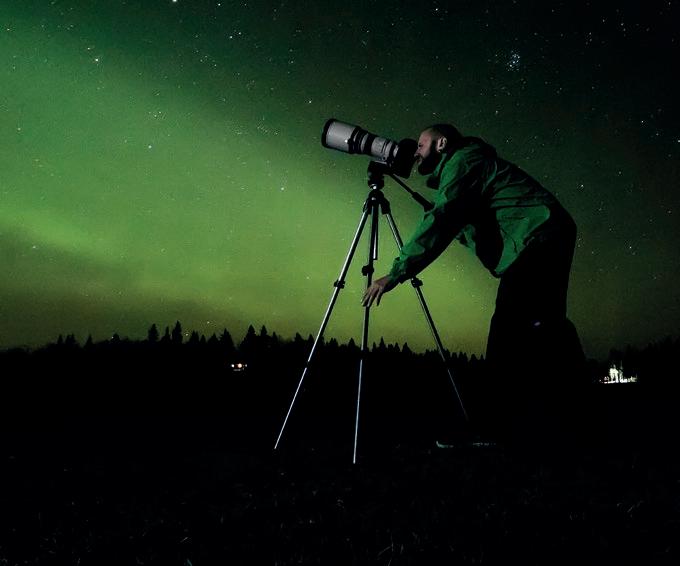
ideal time to visit. Elk Island National Park, also a Dark Sky Preserve, is an ideal place to enjoy night sky experiences. A guided Snowshoe and Stargaze tour during winter winds around the picturesque Astotin Lake before learning all about the night sky around a campfire.
Make clients aware that some of the most magical nights can be found in places you might not immediately think of.
For example, the Stars and Stories tours at Dinosaur Provincial Park pair ancient landscapes with the wonder of the night sky, while the Star Sessions at Jasper SkyTram combine stargazing and dining under a canopy of glittering stars.
While there can be times when you can see the Aurora Borealis from Alberta’s big cities such as Calgary and Edmonton, to optimise the stargazing experience, travellers should head to places with little light pollution. Book clients away from the city as much as you can and advise them to choose clear nights.
The opportunity to take incredible photos is another great sell. Newer smartphones can capture decent photos of the northern lights, but the best bet is a DSLR camera. •







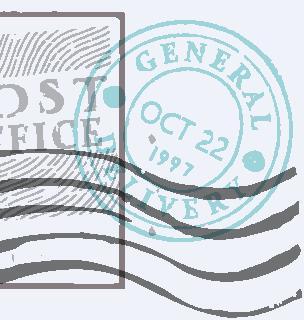



It’s 06.00 and I must be mad. Stepping out of my cabin and keeping an eye out for wildlife I set off. No bears. No elk. Good.
Brrrr...it’s September in Jasper, and that means you never really know what weather to expect. The last time I was here was almost exactly two years ago, when snow was falling in thick flurries.
But this time, packing my suitcase full of jumpers was a mistake. It’s been 30⁰C and today it’s just the morning air that’s fresh.
As I make my way to the lake in a bathrobe, the stars – plenty of them – are still out. With a large group of us staying at the Fairmont Jasper Park Lodge, someone had the bright idea of a dawn dip in the property’s glacial lake, and I signed up.
That’s something I’m slightly regretting as an instructor from the hotel teaches us some breathing techniques we’ll need to cope with the cold. I lower myself off the dock and, for 20 seconds or so, it’s not nice. I remember those breathing tips as my water shoes make contact with the pebbles on the bottom of the lake.
But then something curious happens. I get used to it. And a few minutes in, I begin to enjoy it. Bobbing around, watching the sun begin to highlight the individual gullies, grooves and glaciers atop the surrounding






























Alberta’s popular mountain town has the welcome mat out for both visitors and wildlife as, a year on from devastating wildfires, it resumes its role as one of Canada’s most awe-inspiring destinations, says Claire Dodd

mountains, I decide I love it. And my reward for sticking it out? A few seconds in a lakeside sauna that I’m informed by a staff member was left by the production crew of The Bachelor, which was filmed at Jasper Park Lodge in 2024.
Stepping into the Lodge again is a little déjà vu for me. When I first came to Jasper – over 15 years ago, on my very first trip to Canada – I stayed here.
Back then, pulling up in its long meandering driveway, passing lakes and woodland, making it to the main lodge with its mix of taxidermy and colossal rock fireplaces, and seeing its log cabins dotted around the lake, I remember thinking ‘Gosh, I’m in DirtyDancing’.
So picturesque is the setting, so ‘classic’ the mountain escape décor, that something about this place did, and still does, feel filmic. At least to me.
Built in 1922, the railway brought

the hotel’s first wave of tourists to this mountain playground in the Canadian Rockies and it’s easy to see why visitors have been coming here ever since.
Is there a prettier spot in the world to tee off from? The golf course at Jasper Park Lodge celebrates a centenary this year. It too hugs the neon blue waters of the lake, and is surrounded by the peaks.
In winter, sport shifts to the slopes. Marmot Basin is just 20 minutes out of town, with over 90 named runs suitable for all skill levels.
Today, people come for the stars too. Nightly, on my way back to the cabin, I start a habit of taking a photo of the sky with the lake and mountains in the foreground, my camera picking out seemingly endless constellations. With minimal light pollution and at over 11,000 km2, Jasper National Park is the second largest dark sky preserve in the world. Each October, Jasper holds a Dark Sky Festival with concerts under the stars, drone light shows and



gazing with astronomy experts. Jasper Planetarium – located at Jasper Park Lodge itself – also offers stargazing alongside films of the stars and northern lights. Every now and again, the lights make an appearance for real in these parts.
Some things haven’t changed: this is still a popular stop off for those arriving from VIA Rail’s The Canadian train or the Rocky Mountaineer. Jasper is also a start point and terminus for those driving the legendary Icefield’s Parkway – a 227 km stretch of mountain road that connects the town with Lake Louise.
Some things have changed. Looking out across the lake at the charred tree trunks that stand starkly like spent match sticks, it’s sobering to see how close the hotel was to being lost in the wildfires in July 2024. Walking around the centre of this closeknit community it’s easy at first to feel like things are normal. Jasper is open for business and as a town reliant on tourism, it needs visitors to rebuild.
the forest floor. Now, green shoots are emerging, and animals are returning. The trees will too in time.
And secondly, with whole swatches of forest gone, the area is transformed.
Walking paths that would have previously afforded views of tree trunks now offer views for miles, to landmarks and geological features previously completely buried in the trees. It’s a revelation.
We make it to the viewpoint, though I’m not ashamed to admit that the last climb was tough. I’m blaming the altitude: Jasper town itself is over 1000m above sea level.



“So picturesque is the setting, so ‘classic’ the mountain escape decor that something back then felt filmic - and it still does today”
The flames largely spared Jasper’s main hub of stores, bars, restaurants, and historic buildings. Yet, turn a corner of main drags such as Connaught Drive or Patricia Street and you see it.
On the southern edge of town, whole streets of homes were destroyed and families displaced. Building work is underway but for those residents, it will take time to recover and rebuild.
Yet across the over 32,000 hectares of affected parkland nature is already repairing. I join Jasper Food Tours and their guide, Nicolas Gosselin, on a Summer Wildfire Peak-Nic Tour, one of a couple of new wildfire tours that have launched since the park reopened.
We take the Old Fort Point Trail, steadily climbing to a lookout over the town. The whole way, we’re walking through blackened stumps, fallen timber made charcoal – a lost forest.
But Nicolas raises several points that put an alternative spin on things. Before the fire, the forest floor was barren. With wildfires – something needed in nature to keep forests healthy – ‘overdue’ for so long, the dense tree canopy was starving
But it’s worth it. The milky blue threads of the Athabasca River fan out like lace across a bed of ground glacial gravel, some illuminated silver in the late afternoon light. Floating gently down the river, inflatable rafts take now-soaked-through passengers back to shore. Though the section of the river that runs through town is calm, there’s plenty of white water nearby. Tours at varying classes of rapids – usually Class II or III –across both the Athabasca and Sunwap-ta rivers feature plenty of splashes, bumps, and waves.
Back at the lodge, I relax in a renovated Bayview Junior Suite, with a lounge area and patio looking out on the lake.
A week after I leave, the hotel closes for a major renovation. Due for completion in Spring 2026, it will see the main lodge updated and transformed – no taxidermy I’m told – some refreshed guest rooms, a renovated pool and a new dining venue. The renderings show a chicer, but still mountain-cosy facility.
To end the trip, it’s time for a do-over. Last time snow hampered my attempt to sail on Maligne Lake, the largest natural lake in the Canadian Rockies, but today, the sun is out.
I’ve been here before, but it’s still a jawon-the-floor moment to turn the corner into the “Hall of the Gods”. The cathedrallike, glacier-capped mountains that provide a backdrop for the sacred, tree clustered spit of land, Spirit Island, command awe.
Fire may have temporarily impacted life here but Jasper’s beauty remains as enticing and timeless as before. •





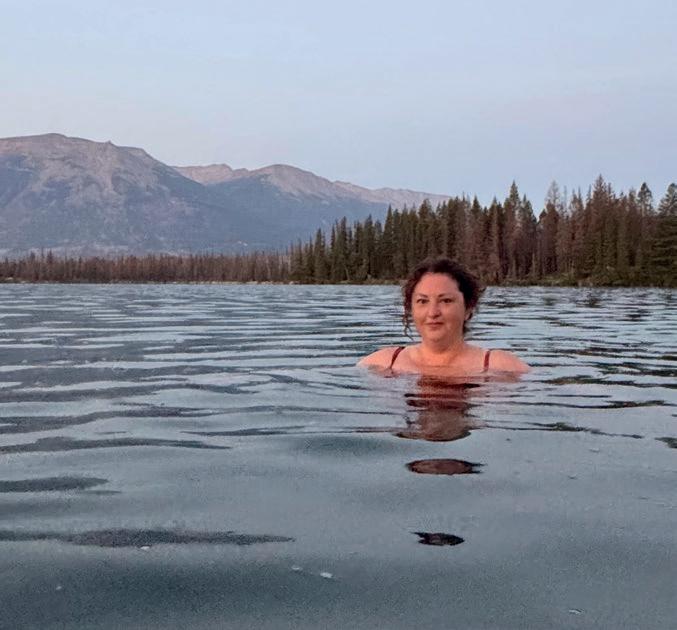







First Class Holidays took both ‘best sellers’ and agents looking to grow their Canada sales to British Columbia on a tailormade itinerary that offers a multi-destination road trip, says Steve Hartridge
We wanted to do something a bit different, a little bit off the beaten track. British Columbia is a beautiful province but a lot of it is still undiscovered,” Says Paula Martin, Head of Sales for First Class Holidays, reflecting on an agent fam trip she accompanied in autumn 2025.”
Starting in Vancouver, the week also took in the Sunshine Coast and Vancouver Island, featuring a combination of city highlights, local ferries, a Zodiac boat tour, whale-watching, wine tasting and much more.
In response to what the operator says is more requests for bespoke accommodation, the group made overnight stops at West Coast Wilderness Lodge (Sunshine Coast), Inn at Laurel Point (Victoria) and Prestige Oceanfront Resort Sooke (Vancouver Island).
“We are seeing more requests for the West Coast, particularly as a cruise add-on,” so this was a timely trip with agents…it was the first time we have taken a fam to the Sunshine Coast,” adds Martin.
Those agents won their place in a variety of ways. Some were drawn randomly at trade events, others through incentives run in association with different (agent) consortia. The operator also ran two promotions, Around the World and Quote to Win, where agents quoting or booking the operator were put into a draw.
The result was that the fam featured a mix of agents who were either established sellers or had the potential to grow their Canada sales.
One of those best-selling agents is Chris Roberts, a Guernsey-based Travel Counsellor who has visited Canada many times but not to Vancouver Island and the Sunshine Coast.
“I would encourage clients to consider a driving itinerary like the one we did and to spend two or three nights in some locations to get the best out of the region,” he advises.
“A highlights for me was West Coast Wilderness Lodge, which was beautiful and

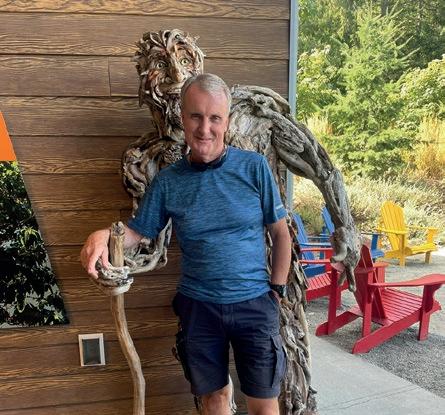
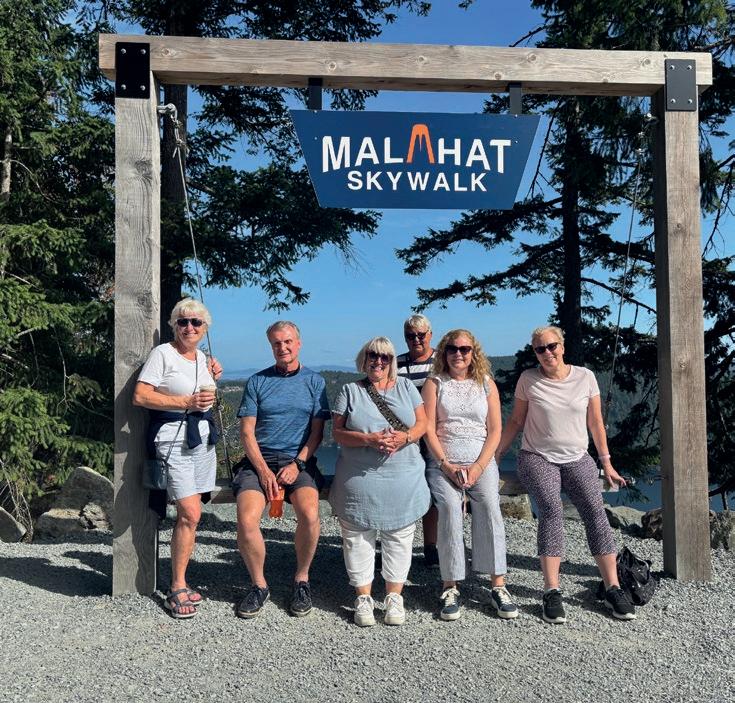
“I love Flyover Canada in Vancouver and try to include it in client itineraries as it’s a great advert for the rest of Canada”
“I really liked the Prestige Oceanfront Resort in Sooke, The scenery here is beautiful and I would have loved to have spent longer there”
“Our itinerary would make a great second trip to Canada, It offers quieter experiences away from more popular holiday spots”
“Anyone who likes to explore, be among nature and see amazing scenery would enjoy this region”

tranquil. But my favourite experience was our Eagle Wing Tours whale watching tour from Victoria. I have been lucky enough to do many whale watching trips but this was the best yet.”
Adds Martin: “The trip had many highlights. I loved the diversity of Victoria, with its bars and live music. And the wine tasting we had at Blue Grouse Winery was great, as was the Malahat SkyWalk. A few of us did the spiral slide – you could probably hear the screams miles away.”
First Class Holidays has a nine-day self-drive West Coast Wonders tour, departing May 4, 2026 that will take in Vancouver, Egmont, Parksville and Victoria. Prices start from £2,829pp, with flights, six days’ car rental, eight nights’ accommodation including two nights at West Coast Wilderness Lodge, and various attractions. fcholidays.com •
This treasure trove of natural wonders on Canada’s Vancouver Island is the ideal destination for customers with adventure in their sights, says Lauren Jarvis
The capital of British Columbia, Victoria –and the Greater Victoria region – offers an exciting blend of outdoor adventure, history and authentic Indigenous experiences.
Overlooking a scenic harbour and surrounded by forests with the Gulf Islands lying in the Salish Sea offshore, the stunning coastal capital offers a relaxed city break, with easy access to the Great Outdoors and the ocean adventures beyond the city limits.
Located on the ancestral lands of the Lekwungen-speaking people of the Esquimalt Nation and the Songhees Nation, Greater Victoria has achieved Biosphere certification from the Responsible Tourism Institute and encourages visitors to “tread lightly and breathe deep”.
“The perfect choice for those who prefer the road less-travelled, Greater Victoria captivates visitors with its unique blend of history, culture and lifestyle,” says Maggi Smit, founder and CEO of Canadian specialist operator, Canada As You Like It.
“It also offers an incredible range of experiences for nature lovers. Known as ‘The Garden City,’ Victoria’s mild climate nurtures lush green spaces, including the world-renowned Butchart Gardens, where a former quarry has been transformed into a breathtaking floral wonderland.”
Add to the mix a range of accommodation – from stylish historic icons like the Fairmont Empress Hotel to boutique resorts like the Oak Bay Beach Hotel – plus a thriving farmto-table dining scene and it’s easy to see why Greater Victoria is fast-becoming a popular choice for affluent travellers and those seeking out soft adventure.
“History fans will love exploring the Parliament Buildings, while the city’s Chinatown – the second-oldest in North America – highlights its global connections,” says Smit. “The traditions and artistry

of the region’s First Nations peoples are deeply woven into Victoria’s identity, too, shaping its culture and reinforcing its respect for nature.” Owned by the Songhees Nation, Songhees Tours offers immersive Indigenous-run tours, including the chance to paddle the city’s Inner Harbour in a traditional canoe while learning about First Nations history through stories and songs. The Malahat SkyWalk yields fantastic views of the island from a 10-storey spiral tower soaring 250 feet above sea level, while the 34-mile Galloping Goose Regional Trail is a repurposed railway line offering excellent e-biking from Victoria’s city streets through farmlands to forests of Douglas firs.

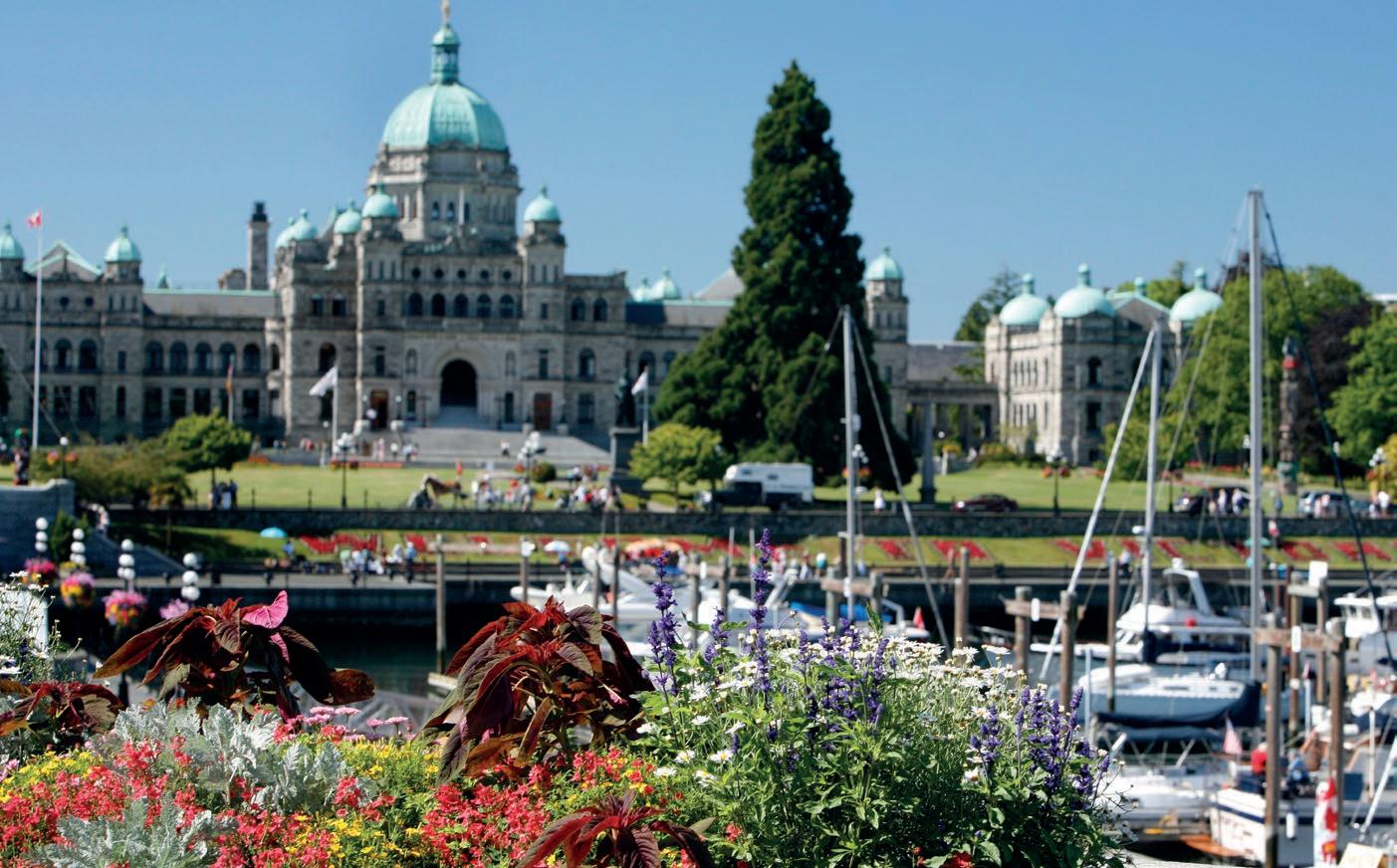
Combine a stay in Greater Victoria with a road trip around British Columbia. After exploring Victoria, head to Tofino on Vancouver Island’s rugged west coast and join a wildlife tour to see the black bears, grey wolves, otters and whales of the UNESCO-listed Clayoquot Sound Biosphere Reserve. Take a 30-minute float-plane flight or a 1.5-hour ferry ride from Victoria to the mainland city of Vancouver, before visiting the world-class wine region of the Okanagan, the alpine ski resort of Whistler and spending time in the province’s wonderfully wild Yoho or Kootenay national parks.











Canada As You Like It offers a four-night package at the Parkside Hotel & Spa in Victoria, including a one-way floatplane transfer from Vancouver with the return journey by bus and ferry, a Butchart Gardens Express return service from downtown Victoria, a 24-hour hop-on hop-off doubledecker bus tour of the city, and a half-day whale watching excursion. It is priced from £654pp, sharing a twin room. • canadaasyoulikeit.com destinationgreatervictoria.com
From nocturnal wildlife spotting to astrophotography, travellers will find endless wonder under Dark Skies

GRASSLANDS NATIONAL PARK: A Dark Sky Preserve since 2009, sections of the park are rated Bortle 1, the darkest classification the night sky can attain: a velvety pitch that occurs only when conditions are just right which renders stellar activity incandescent and the Milky Way spills a river of light across the heavens. Head to Parks Canada’s Beyond the Big Dipper sessions, where experienced astronomers lead viewers through informative and interpretative sky viewings.
CYPRESS HILLS INTERPROVINCIAL
PARK: As the highest point in Saskatchewan, straddling the AlbertaSaskatchewan boundary, the Cypress Hills offer visitors stunning vistas by day and mind-expanding views of the firmament by night. A Dark Sky Preserve for two decades, the Dark Sky Observatory opens for public astronomy nights from spring through autumn, where park interpreters guide

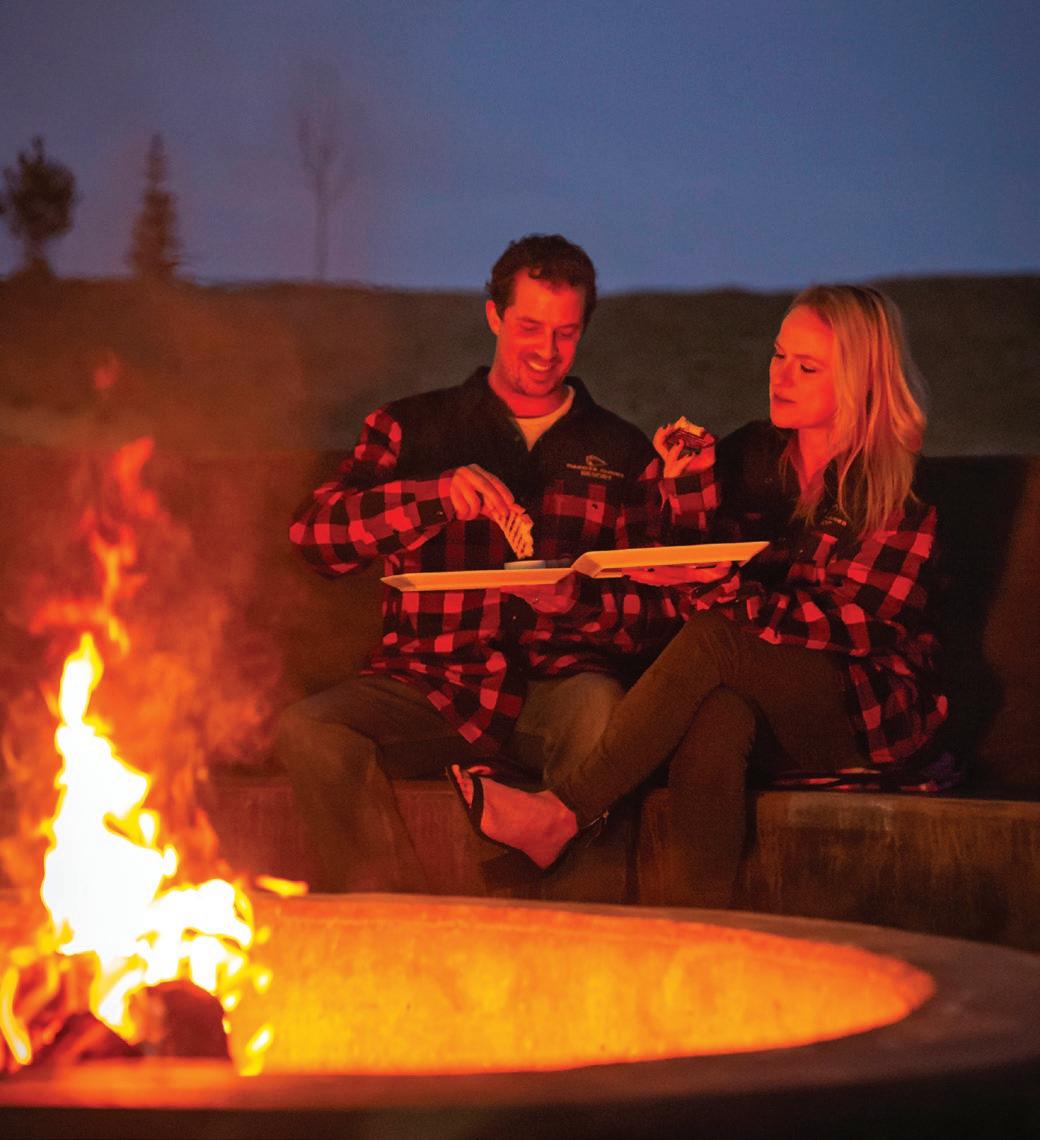
visitors through telescope viewing sessions that transform distant pinpricks into Saturn’s rings, Jupiter’s moons and nebulae glowing in impossibly vivid colours.
DAKOTA DUNES RESORT: Saskatoon’s first full-service resort, Dakota Dunes Resort elevates stargazing as guests enter the eight-metre geodesic Cosmic Dome for an immersive tour through the region’s astronomic wonderlands. This experience uses projections and storytelling to unveil how First Nations people interpreted the night sky. Resort guests can combine the Dome with cultural programming, Pow Wow events and heritage experiences. It’s education wrapped in wonder; technology serving tradition.
INDIGENOUS SKY STORIES: Indigenous perspectives are vital to Saskatchewan stargazing: First Nations people have been reading these skies for millennia. Beyond Dakota Dunes’ Cosmic
Dome, parks such as Prince Albert National Park weave constellation myths, star lore, and Indigenous astronomy into night-time programmes. Learn how to navigate by starlight, how local cultures read the sky for changes of the seasons and hear spiritually rich legends.
ASTROPHOTOGRAPHY: The wide-open prairies of Grasslands and the elevated plateaus of Cypress Hills are celebrated by astrophotographers as some of North America’s finest locations for capturing the cosmos. Here, in near-total darkness, cameras capture light that has travelled for eons – the flash of meteor showers, star trails spiralling around Polaris, and deep-sky objects emitting colours invisible to the naked eye. The endless horizon allows long-exposure compositions that frame badlands, prairie grasses, and distant buttes against a galactic canvas of constellations and stars.
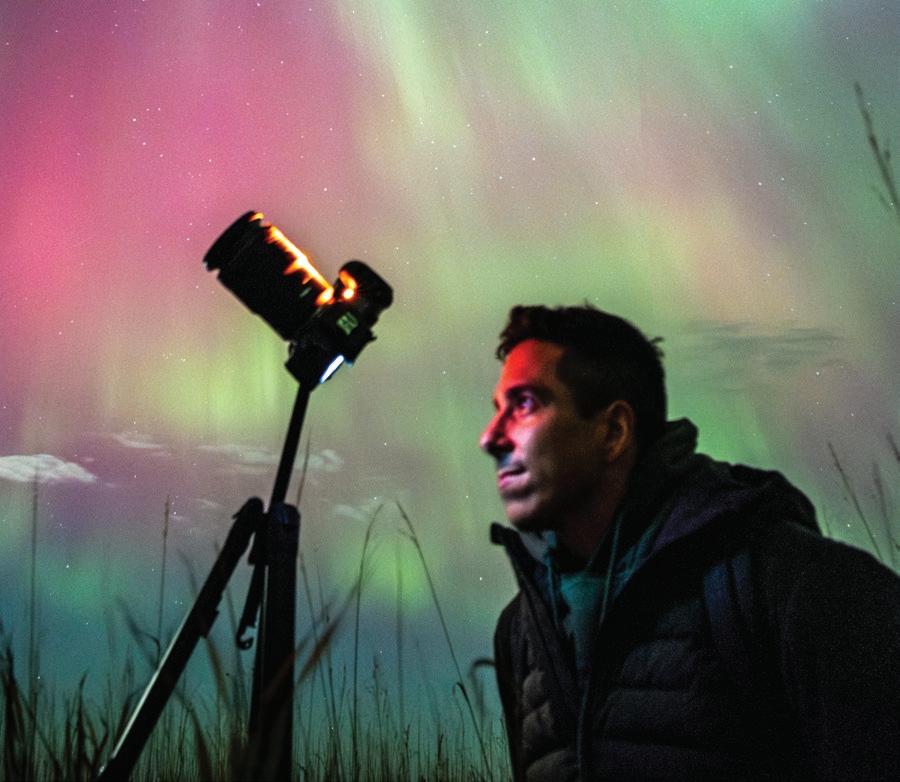




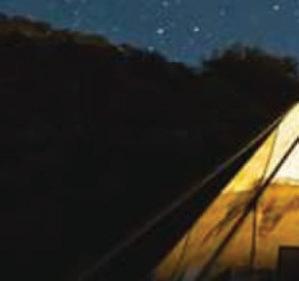







NORTHERN LIGHTS: While Saskatchewan lies south of traditional aurora zones, displays of this highly sought-after phenomenon are possible, particularly during autumn and winter when solar activity is high. The region’s advantage is its darkness: without competing light pollution even modest aurora displays are rendered spectacular. Green curtains unfurl above yawning prairie land, shot through with pulsating violet, red, and white ribbons – an unexpected bonus for visitors exploring outside the peak summer months.
DAY INTO NIGHT: Explore badlands and wildlife by sunlight, then watch the sky ignite with stars. Heritage Outfitting near Grasslands offers Sun and Stars Overnight Adventures: horseback rides, countryside lodgings, and a stargazing platform. The package includes riding lessons, twilight desserts, bunkhouse beds, and hearty country breakfasts. No



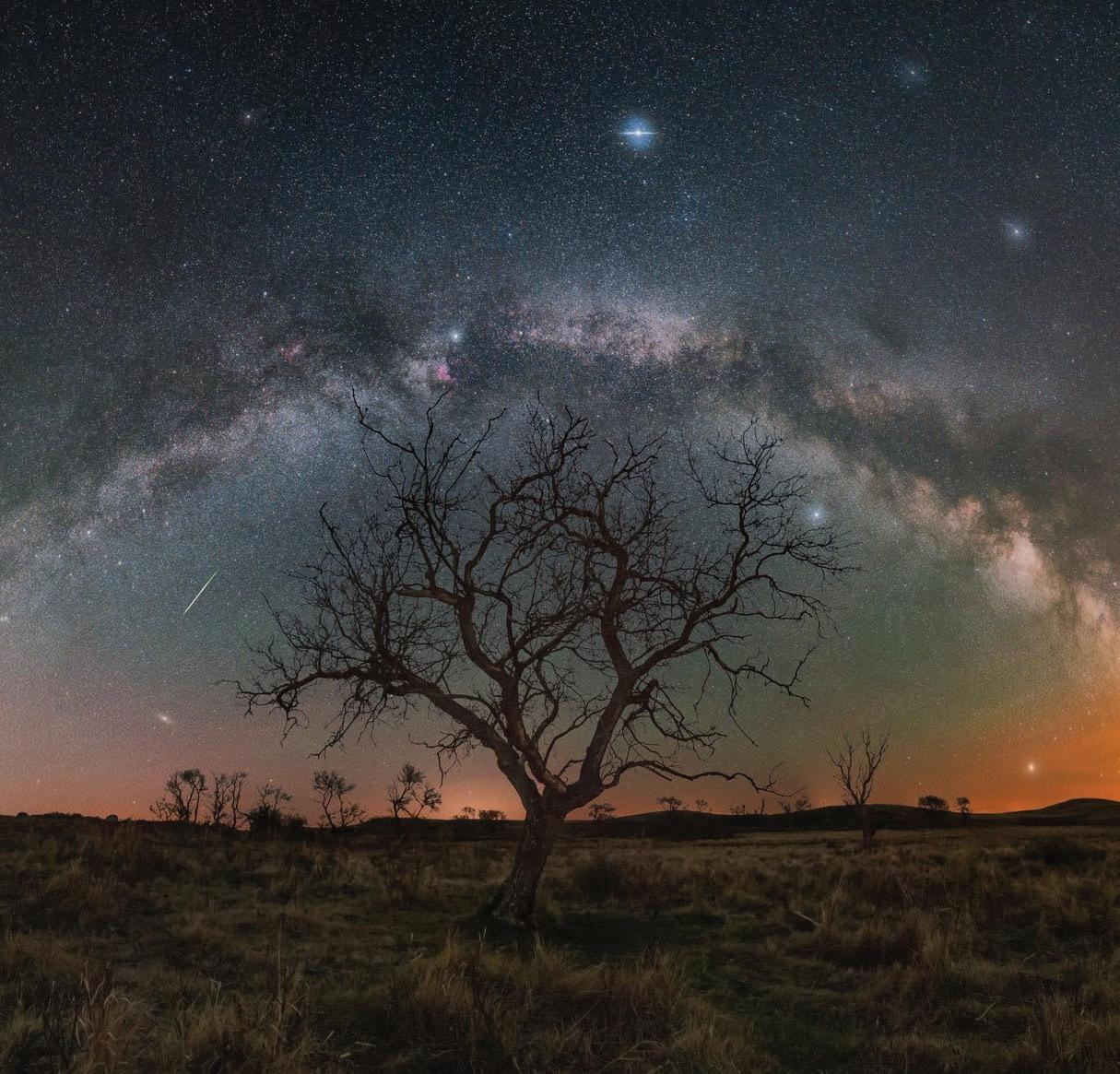
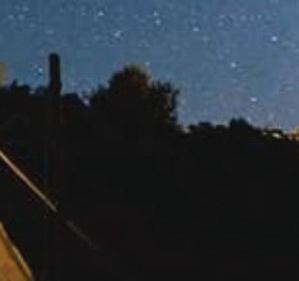



experience necessary. This is the West distilled: saddles and sky shows, ranching tradition beneath infinite cosmos, the prairie revealing its double life as darkness falls.
CAMPSIGHTS: Cypress Hills provides comfort camping and group sites, while Grasslands’ campgrounds at Rock Creek and Frenchman Valley provide immediate night access. For travellers seeking night-sky experiences without sacrificing comfort, recommend oTENTiks – Parks Canada’s canvas-and-wood hybrid shelters. They marry the immediacy of camping with the comfort of proper beds. The gates of the boutique lodge Crossing at Grasslands open to the edge of the park, where stargazers and astrophotographers can wander the hills chasing the perfect shot.
SUMMER STAR PARTY: Every August, Cypress Hills’ Centre Block hosts The Saskatchewan Summer Star Party, organised by the Saskatoon and Regina Centres of the
Royal Astronomical Society of Canada. Attracting over 300 stargazers, every light source is shrouded, and the ground transforms into a field of telescopes bristling skyward. Vendors showcase cutting-edge technology, and there’s a full schedule of speakers and activities. Seasoned professionals stand shoulder to shoulder with wide-eyed beginners, all equal beneath the wheeling stars. Wonder is the only credential required.
NOCTURNAL WILDLIFE: The prairie also offers thrilling night-time wildlife experiences. Nocturnal animals are often active during observation sessions, adding a further layer of intrigue to celestial wonder. Spy coyotes, as they yip across darkened valleys. Great-horned owls hunt silently overhead, their form revealed as a sudden contrast against the Milky Way, while white tail deer, ever restless, forage for food before bedding down. •
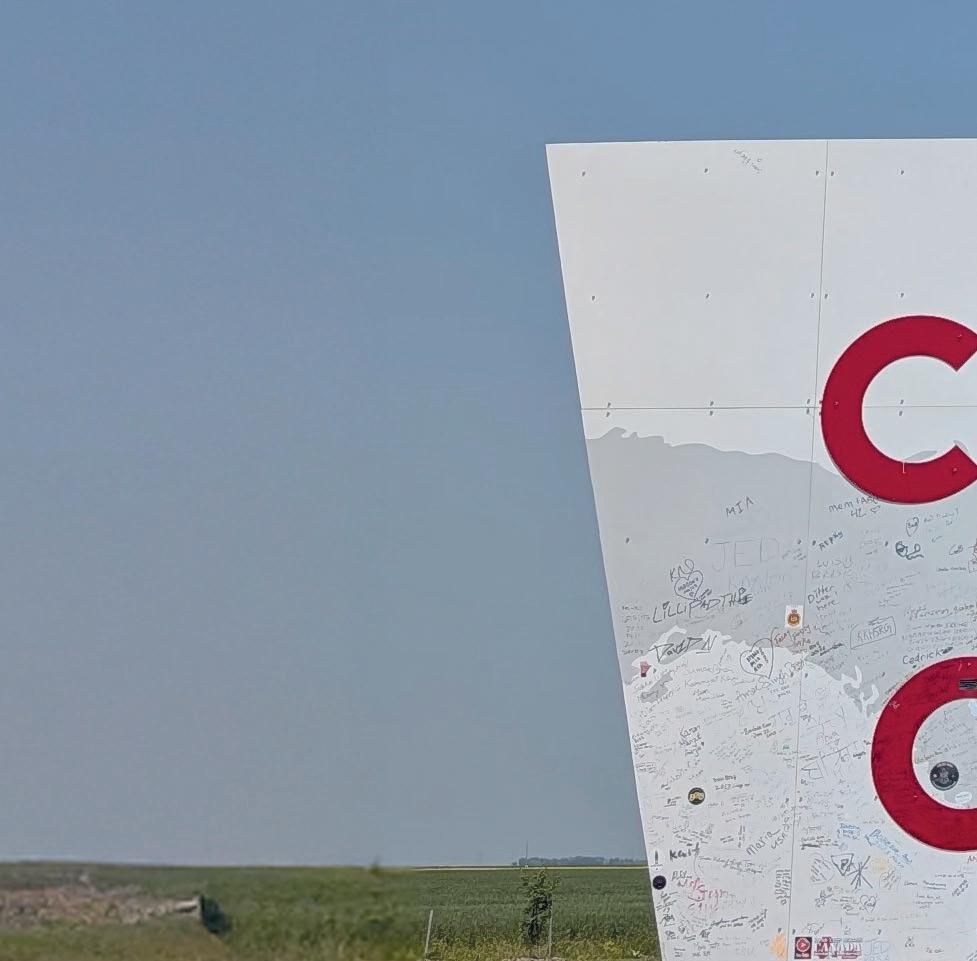
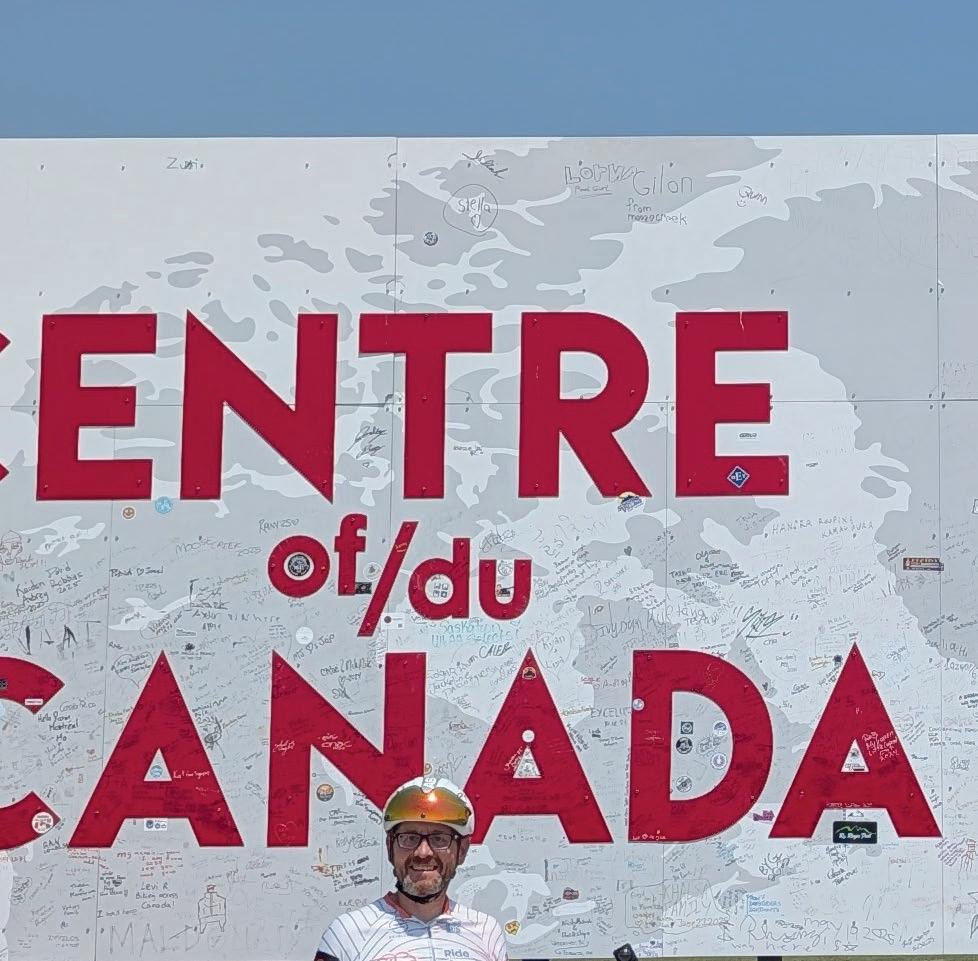




The kindness of Canadians helped MS patient Dominic Shadbolt push through physical and mental barriers as he covered 6,000 kilometres on a cross-country bicycle challenge, he tells Steve Hartridge
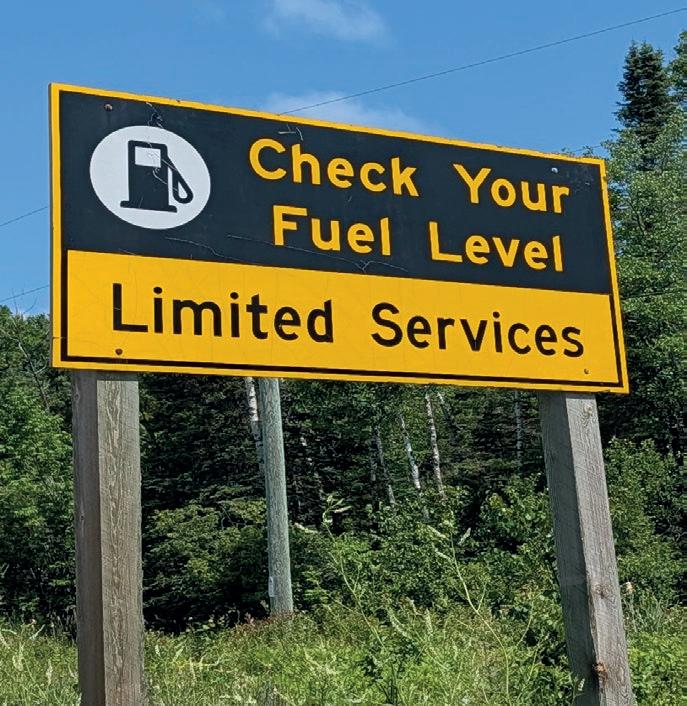
“Exercise is one of the main things you can do for brain health,” says Dominc Shadbolt, offering context for our chat about the trip of a lifetime he undertook this summer in Canada.
His plan was to cycle 8,000 kilometres from Halifax to Vancouver – in the heat of the summer and without a back-up crew.
That would be demanding enough for anyone, but this was a journey that required reserves of added grit and determination: Dominic, who was born in Vancouver but now lives in the UK, is an MS patient.
“When you have multiple sclerosis it’s like the Sword of Damocles is hanging over you as you never know when you’ll lose the ability to do something,… but I decided long ago that I was not going to go down without fighting,” he says.
Instead Dominic, an honorary university lecturer who is on the board of several medical trials and founder of theMSguide. com, a YouTube support channel for MS sufferers, started planning a challenge that would raise funds for Multiple Sclerosis Brain Health initiatives.
It was a hugely ambitious undertaking –
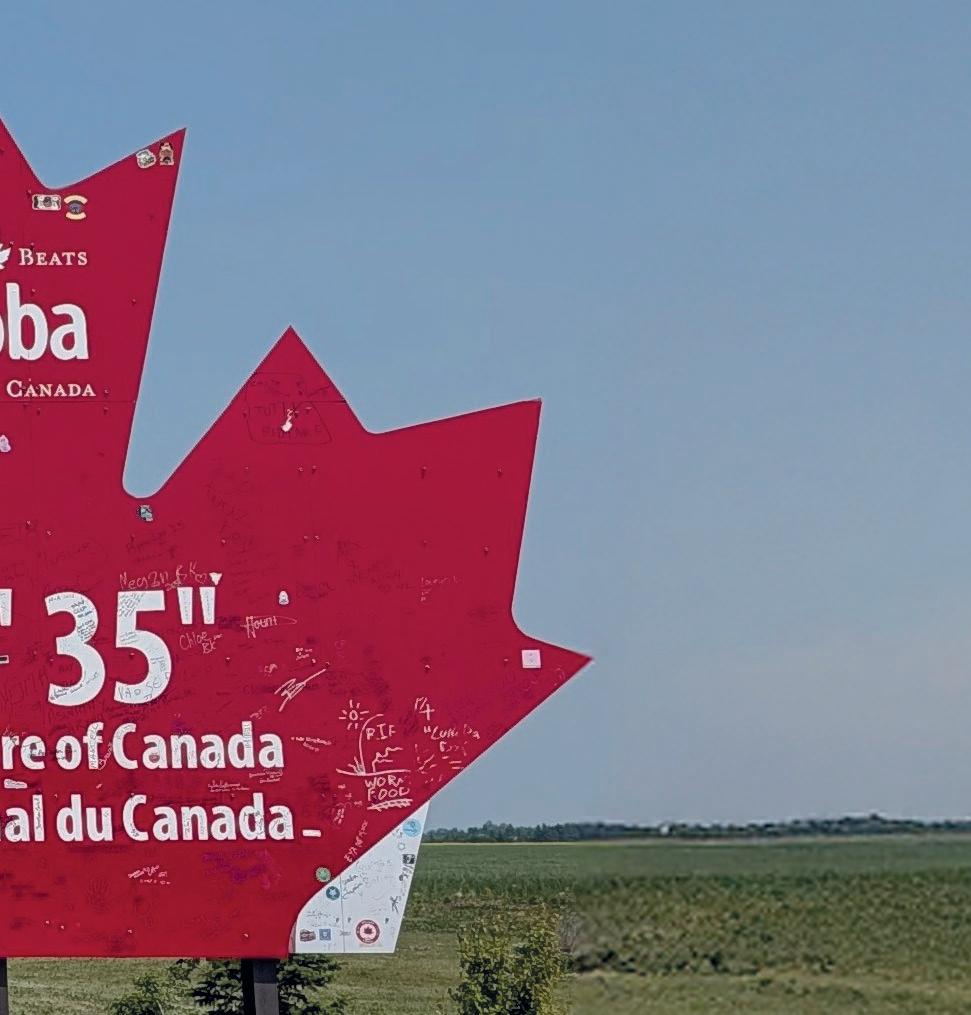


too ambitious as it turned out, and Dominic didn’t quite make it all away across the country, but more about that later.
“I’ve had MS for 34 years now, and about 20 years ago I chatted with Matt Craner, a neurologist. He said to me, “I think you have done so well with your MS because you have always been so active. That stuck with me, as did a nagging desire to ride across Canada”.
By the spring of 2025 the necessary plans, and sponsorship deals, were in place.
“The sponsors, both Canadians and Brits, were astonishing, We attracted around $40,000 worth of sponsorship – and that was before any fundraising,” says Dominic.
These included Oxford PharmaGenesis, a medical communications company, and Celestra Health, which provides an AIpowered platform to monitor walking quality for patients with neurological conditions.
Durston, makers of high-quality lightweight tents, supplied an X Dome 1+.
His other gear included a carbon fibre ICE Sprint trike – a fast, foldable, recumbent (back-supported) tricycle – mainly he says to “avoid the neck and shoulder issues I get day after day on a conventional bike”.
It was fitted with a front fairing, a curved, shell-like body panel at the front that protects the rider from wind and rain while also improving aerodynamic efficiency.

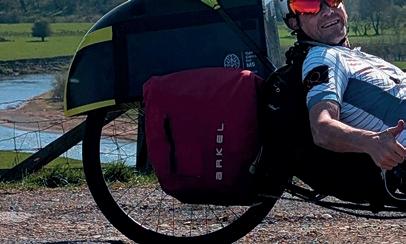

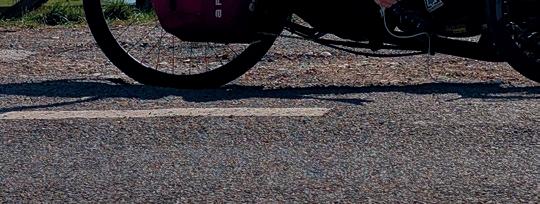


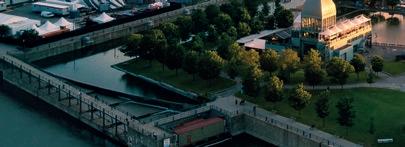











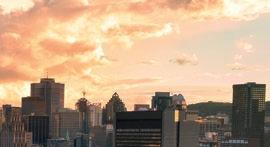

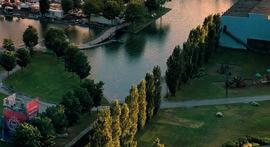
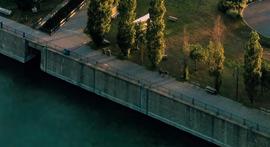
“My sightseeing was mostly restricted to the passing countryside”
“With the trike, I am seated, albeit in a very cool custom carbon tub of a seat…you have a significantly lower frontal area and, as drag increases at the square of the speed, the lower you are the better,” he says.
The aim was to do 80 kilometres a day and, setting off on May 1, 2025 Dominic enjoyed a police escort out of Halifax.
“There was a guy in the police department whose wife has MS, and he spoke to his inspector… that was the first of many acts of kindness I received in Canada,” he recalls.
Once out of Halifax he cycled to Digby and caught the ferry to Saint John, New Brunswick, before heading up to Rivièredu-Loup, on the south shore of the Saint Lawrence River in the Bas-Saint-Laurent region of Québec.
From there he pedalled through Montréal and across to Ottawa. “I stayed in Ottawa for a bit, says Dominic. “I really tried to rest for a while and be sensible; no one was going to give me a medal for being a hero.
“I cycled across Ontario with a Swiss guy I







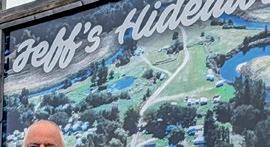

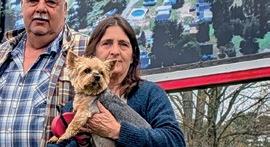




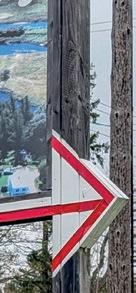

met, because we decided it would be better that way. Ontario is a bloody big province and it’s just safer in numbers sometimes, particularly if you have a mechanical issue. But he also provided moral support, which I had underestimated.”
The hardest day of the trip was the 107-kilometre stretch from Terrace Bay to Nippagon in Ontario.
“I have cycled all my life, but nothing compares to the six-kilometre-long hill with a steady 10% grade I took on with my 25-kilogramme load – and I’ve ridden a fixed gear bike up Mont Blanc! I said to myself ‘suck it up, no one’s coming to save you’.”
Relief on one stretch was provided by Via Rail. “There’s a nasty part of Highway 17, which is part of the Trans Canada, right beside Lake Superior. Instead, we went from Sudbury to White River on VIA’s rolling stock, which dates from 1956.
“I would recommend it to readers as it takes in the beauty of the Lake Superior region, from the shores of Lake Ramsay to coniferous forests and the beautiful landscapes of the Canadian Shield.
“It also serves those communities that are not accessible by road. I saw train staff unloading supplies and passengers shoving their canoes on – that was a slice of real Canada, which was great.”



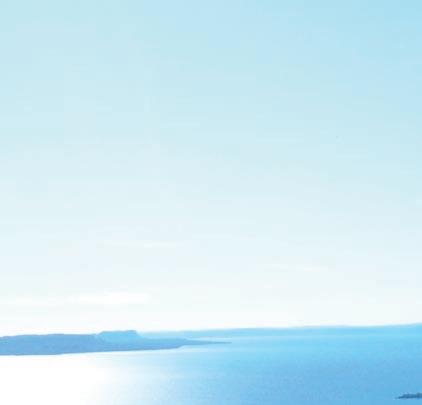
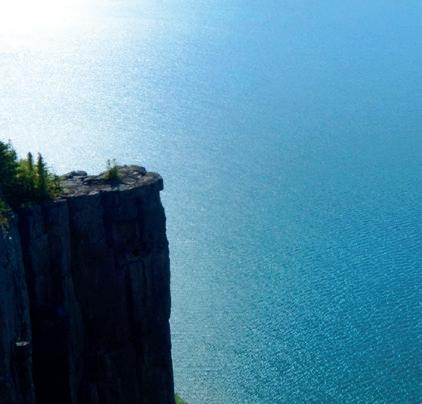

Dominic’s trip coincided with bad bush fires in northern Manitoba and Saskatchewan: “There were a couple of times when I was affected by really poor air quality,” he recalls.
But the flatness of the prairies provided some welcome respite. “My God, they were a relief,” he says, “but my sightseeing was mostly restricted to the passing countryside.... I mean, I wasn’t a tourist.”
Canada’s famed wildlife also failed to appear. “I tried to stay off Highway One as much as I could, but even on backroads I didn’t see a single moose, just a few deer,” he says. “I did carry a bear spray and in both New Brunswick and Ontario I saw a black bear at around 200 metres away; but they were not interested in me.”
Three months into his road trip, after 6,000k on the road and 35 kilometres out











“If I had the funds I would live in New Brunswick, Nova Scotia, Québec or BC”
from Banff, Dominic knew it was time to hit the brakes for one last time.
“I have a strong ‘just-crack-on’ attitude but as I started to approach Banff something felt really wrong. In hindsight, I’d been getting warnings for two weeks, before my body and brain said, “I’m not really fond of this... you can try all you like, but we are done,” he says.
Dominic was picked up by an old school friend, which turned out to be his best decision of the trip.
Tests showed he had rhabdomyolysis, a condition bought on by extreme endurance exercise, which in simple terms means your body starts to eat its own muscles.


“My neurologist, who is also a highaltitude mountaineer, was very insistent and told me, ‘You can’t do anything. You don’t realise what a close call you have had’.
“I had a grotty four weeks where I could barely walk three steps upstairs,” he says.
When I am asked, ‘what are your lasting memories of the trip?’ I always reply ‘the kindness of Canadians’.
“I experienced this on many occasions.







“At the start, I had help from a bike shop in Halifax, which helped me put the trike together. Then there was the time I was trying to pay for my meal but the card machines were broken, so I said, ‘I’ll go get some cash’. But the waitress replied, ‘somebody behind you has already paid’.
“I had the funds, and I thought ‘do I look like that much of a hobo!?’ But seriously, it was a lovely gesture.
“And once, at a campsite, I told my story and got ‘Oh my God, that’s amazing, welcome .…we’re celebrating Canada Day, so join us for some pancakes,’ Interactions like that were just really touching.
“I also learned a lot about Canada on this trip. If I had the funds I would live in New Brunswick or Nova Scotia, or perhaps Québec or British Columbia.”
Reflecting on his Big Trip Dominic has an acute sense of what he did achieve but struggles to shake a nagging feeling that he needs to find a way to complete what he set out to do.
“When I got back, people were patting me on the back, saying ‘well done for making 6,000k’. And yeah, I can accept that I did something bigger than most people, but in my head I’m missing a province! I set myself a target to go from Halifax to Vancouver and I didn’t get there.
“It’s not that I am whipping myself from mortification failure; it’s just that I didn’t complete what I set out to do. So, I am thinking, how can I finish what I started? How am I going to make up the missing miles? British Columbia needs to be covered!
“Maybe I will walk in the province, for about a month or so, on the Trans Canada Trail, which is a series of multi-use trails stretching over 28,000 kilometres from the Atlantic to the Pacific to the Arctic Ocean.
“Now that would be interesting.” •
Consider one of Canada’s many islands for an adventurous getaway that showcases wildlife, white-sand beaches, small communities, local artisans, First Nations history and more, says Peter Ellegard
Whether you are looking for jawdropping natural spectacles, memorable wildlife encounters, rich indigenous heritage, quaint fishing villages or simply the opportunity to get away from it all, Canada’s magical islands will leave you longing to return. Here are some of the options...
BAFFIN ISLAND Canada’s largest island is an adventurer’s wonderland, even in winter when you can visit giant icebergs trapped by the frozen sea and see the northern lights from Nunavut’s capital, Iqaluit, and other places.
You haven’t truly experienced Baffin Island until you have tasted local Inuit favourite muktuk – raw, frozen whale blubber.
Regional connections to Iqaluit from Canadian gateways like Ottawa, Montréal and Edmonton are offered by Canadian North.
MANITOULIN ISLAND The world’s largest freshwater island lies in Lake Huron in Ontario and is reached by ferry from Tobermory, on the tip of the Bruce Peninsula, or the Little Current Swing Bridge. Visitors come for its blend of native customs and European history.
Contact Wikwemikiong Tourism for a naturebased First Nations tour (May-November) of cultural experiences, walks and discovering the island’s Anishinaabeg heritage, which includes the Odawa, Ojibwe, and Potawatomi peoples.
THOUSAND ISLANDS Enjoy life in the slow lane in this chain of Ontario islands in the St. Lawrence River, which actually numbers more than 1,800 granite islands.
It is popular for its small communities, castles, lighthouses and getaway places to stay. From spring through fall, scenic narrated boat tours meander through channels, between islands and under bridges, past castles, historic lighthouses and stately mansions.
CAPE BRETON ISLAND Nova Scotia’s eastern region is a scenic delight, taking in picturepostcard fishing villages, cliff-hugging turns, grand coastlines and forested highlands, all viewable along the 185-mile Cabot Trail.
Infused with Gaelic and Acadian heritage, the
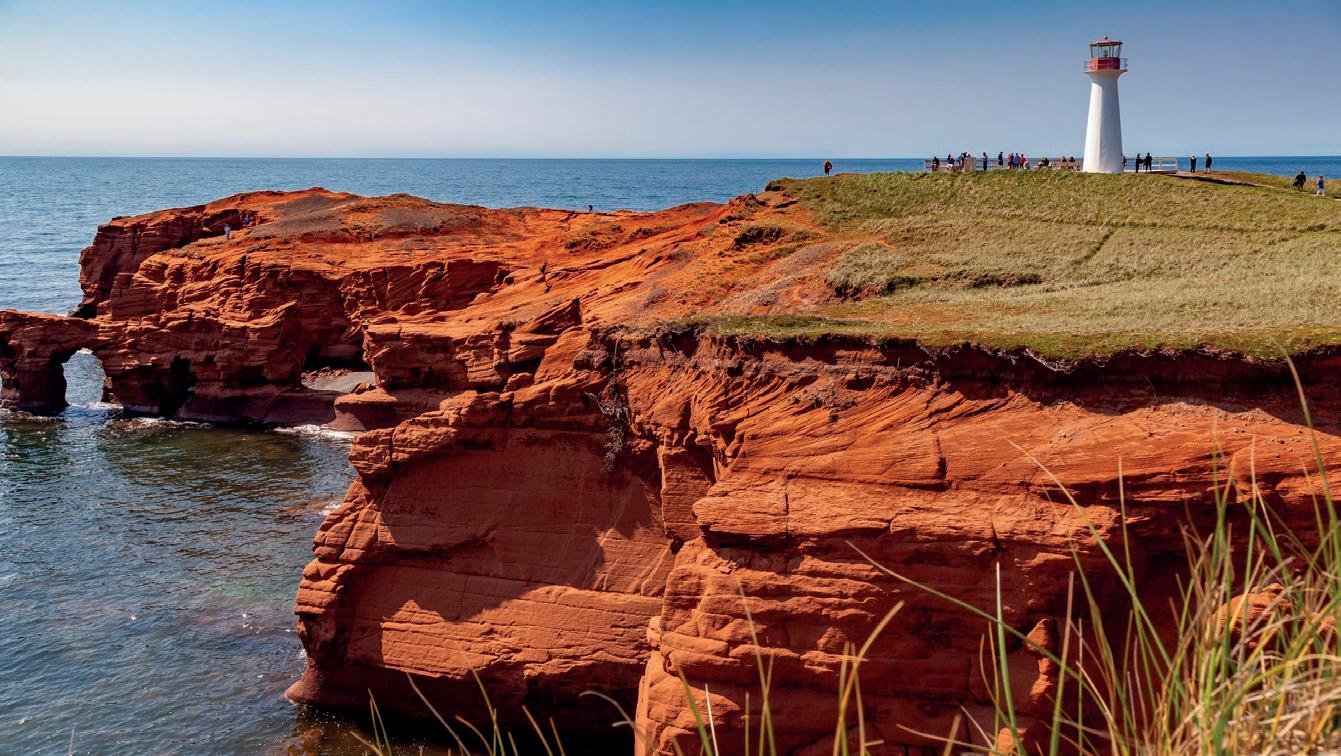

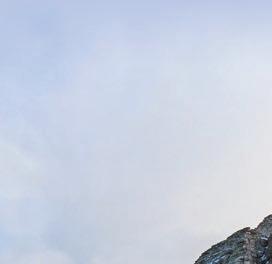




trail throws up quaint villages, whale watching and historical sites aplenty – including the 18th century Fortress of Louisbourg National Historic Site, a captivating living history museum.
SABLE ISLAND A tiny, remote crescent of sand 180 miles from Halifax, Nova Scotia, it is known as the “Graveyard of the Atlantic” for its many shipwrecks and can only be accessed on day visits. Those who make the trip are rewarded by sightings of some of the resident 550 wild horses, seals galore and huge dunes.
MAGDALEN ISLANDS Twelve islands, reached by a five-hour ferry crossing from Souris, Prince Edward Island, and the Madelinot archipelago, make up this sparsely-populated archipelago in Québec’s Gulf of St. Lawrence. Brightly-coloured houses contrast with the rolling, green hills –popular among hikers – white-sand beaches and red cliffs, which can be viewed close-up by kayak. Islanders are known for being talented chefs, artists and artisans. Many art studios and galleries welcome drop-in visitors.
HAIDA GWAII Formerly the Queen Charlotte Islands, they comprise 450 pristine islands off the northern coast of British Columbia that are rich in wildlife, ancient rainforests and the cultural heritage of the Haida people, who have lived there for thousands of years. Centuries-old totem poles stand in the remains of the Haida Nation village known as SGang Gwaay Llnagaay.•



Economy Class
Air Transat offers direct year-round flights to Toronto from London Gatwick, Manchester and Glasgow, and to Montreal and Ottawa (new for 2026) from London Gatwick through the summer. Thanks to a partnership with Porter Airlines, seamless connections are available to make it easier than ever for your clients to see more of Canada, from coast to coast, and enjoy award-winning service aboard two friendly Canadian airlines. WHERE
Airbus A321LR Modern fleet including some of the most energy-efficient aircraft in their category.